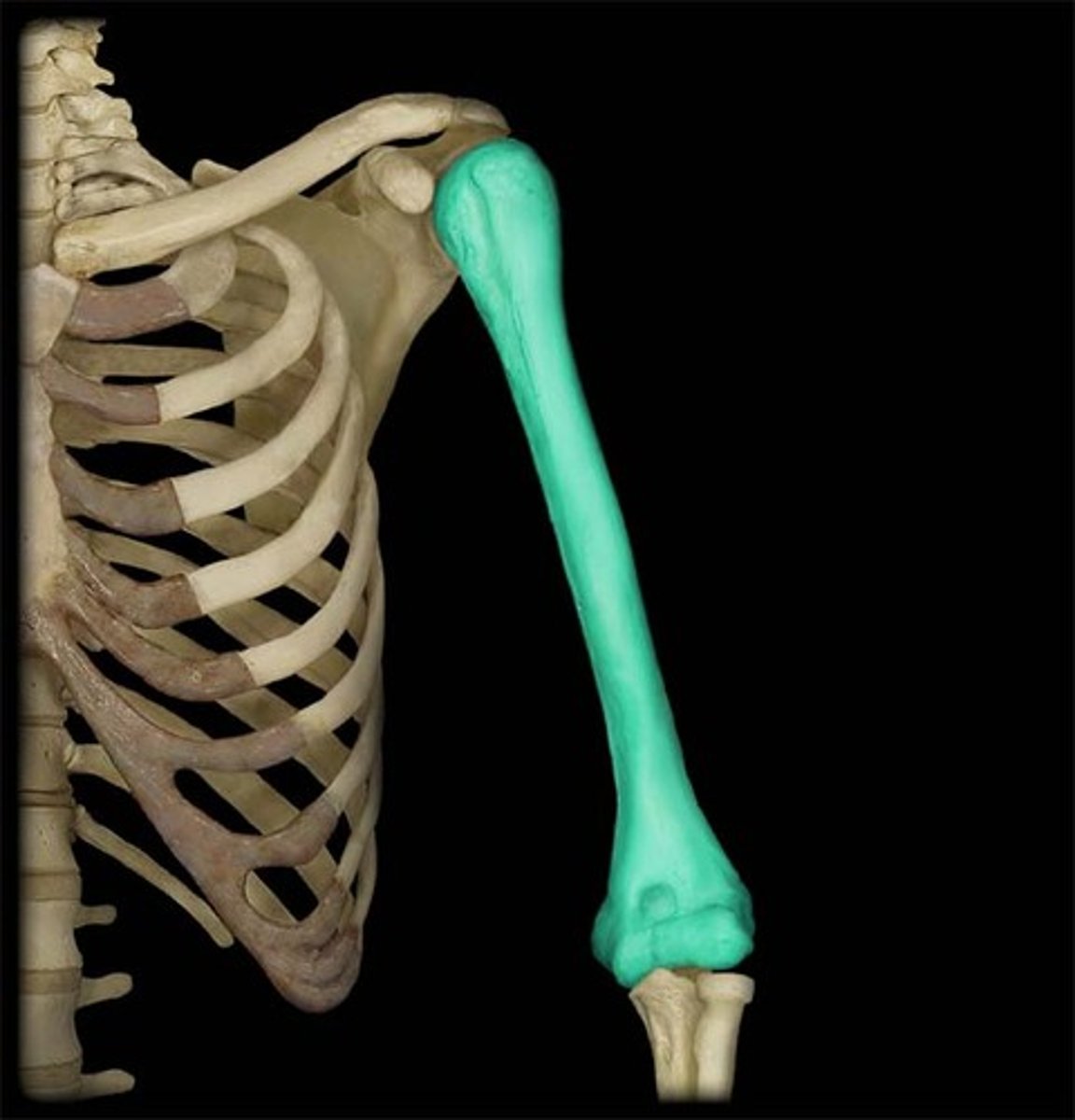Anatomy and Physiology
1/117
There's no tags or description
Looks like no tags are added yet.
Name | Mastery | Learn | Test | Matching | Spaced |
|---|
No study sessions yet.
118 Terms
Liver
Produces Bile, RUQ
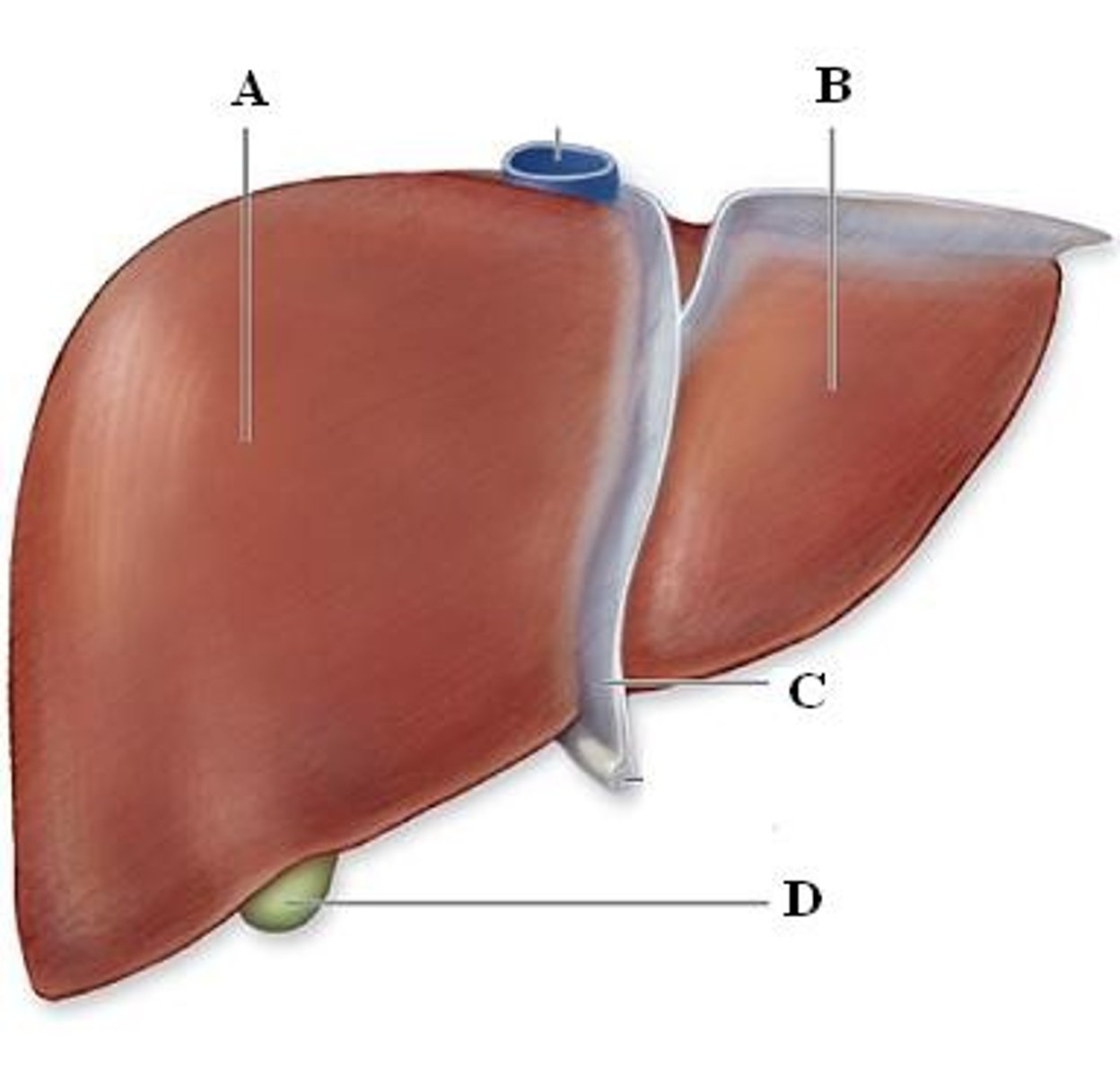
Gall Bladder
Stores Bile
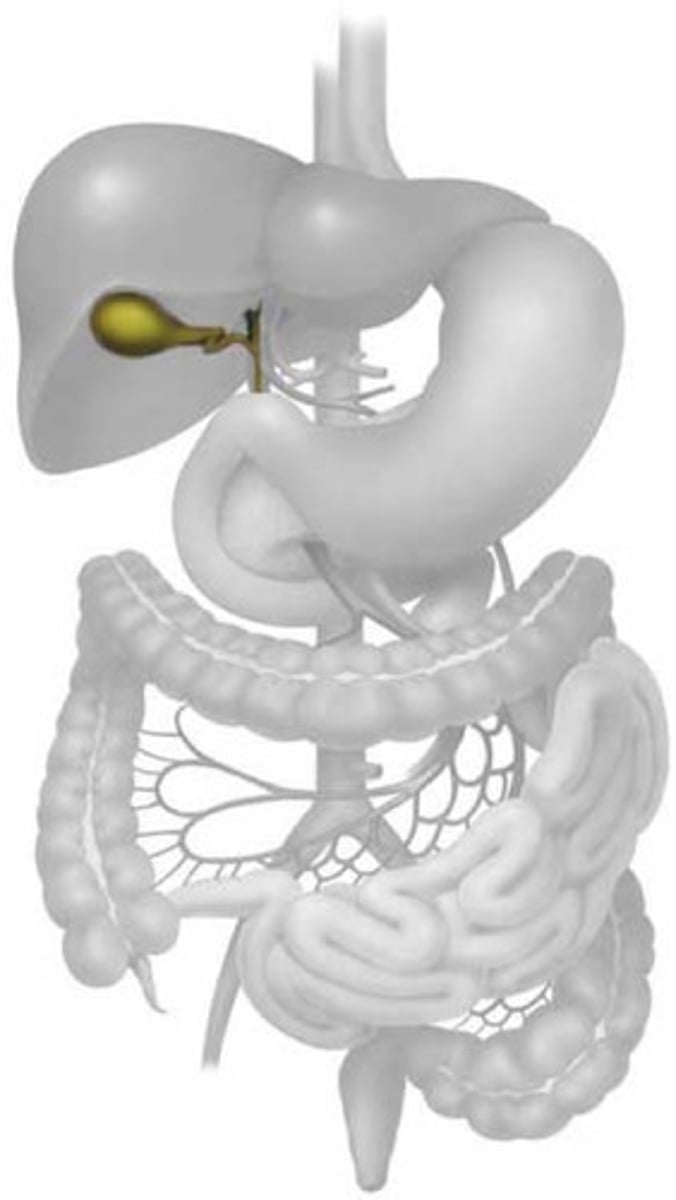
Pancreas
Produces Insulin
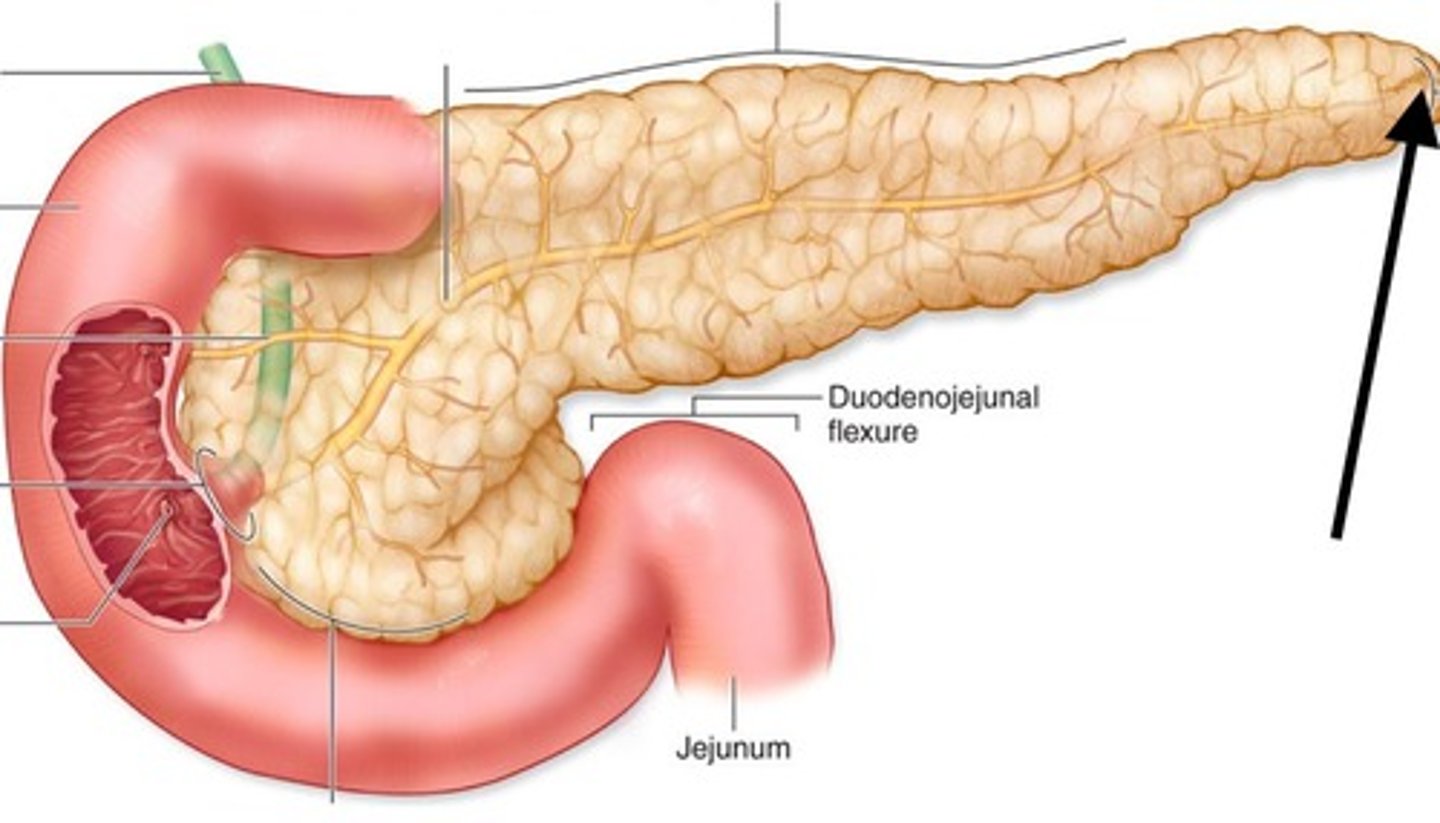
Spleen
Blood cell graveyard. First line of defense in infection
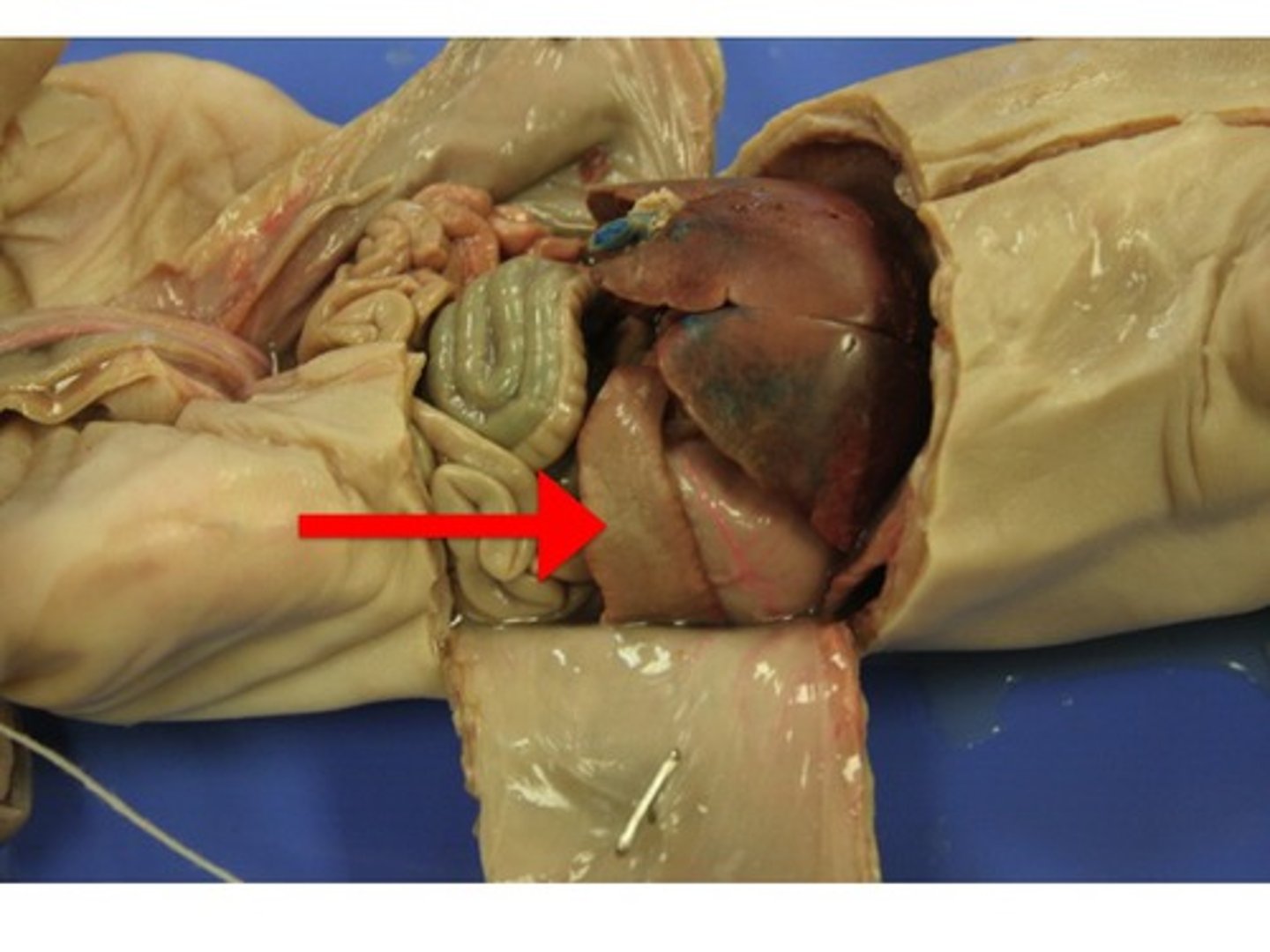
Appendix
Vestigial Organ in Lower right abdominal quadrant
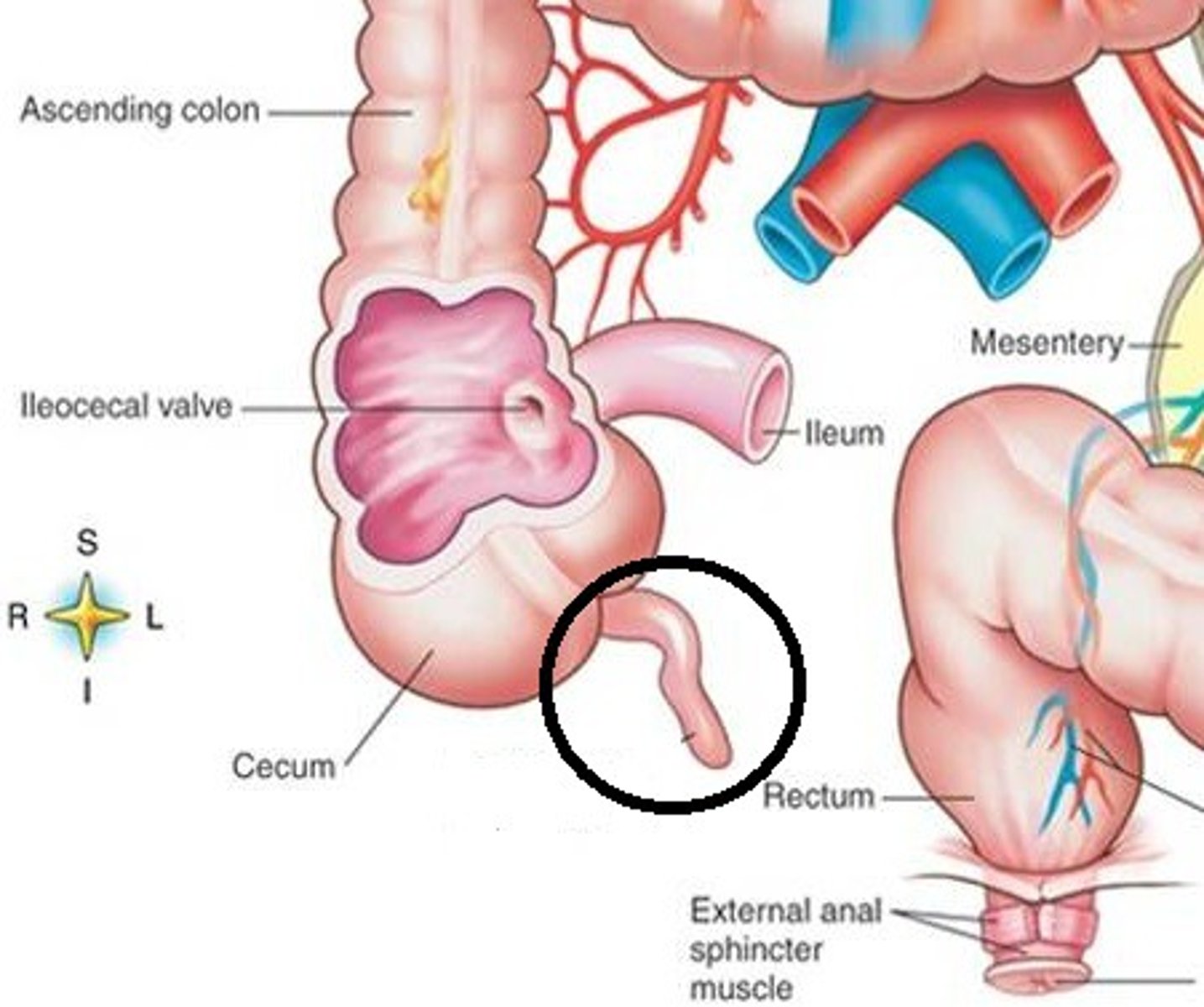
Kidneys
Organ in the dorsal space, filters blood

Adrenal Glands
Sits on top of the kidneys
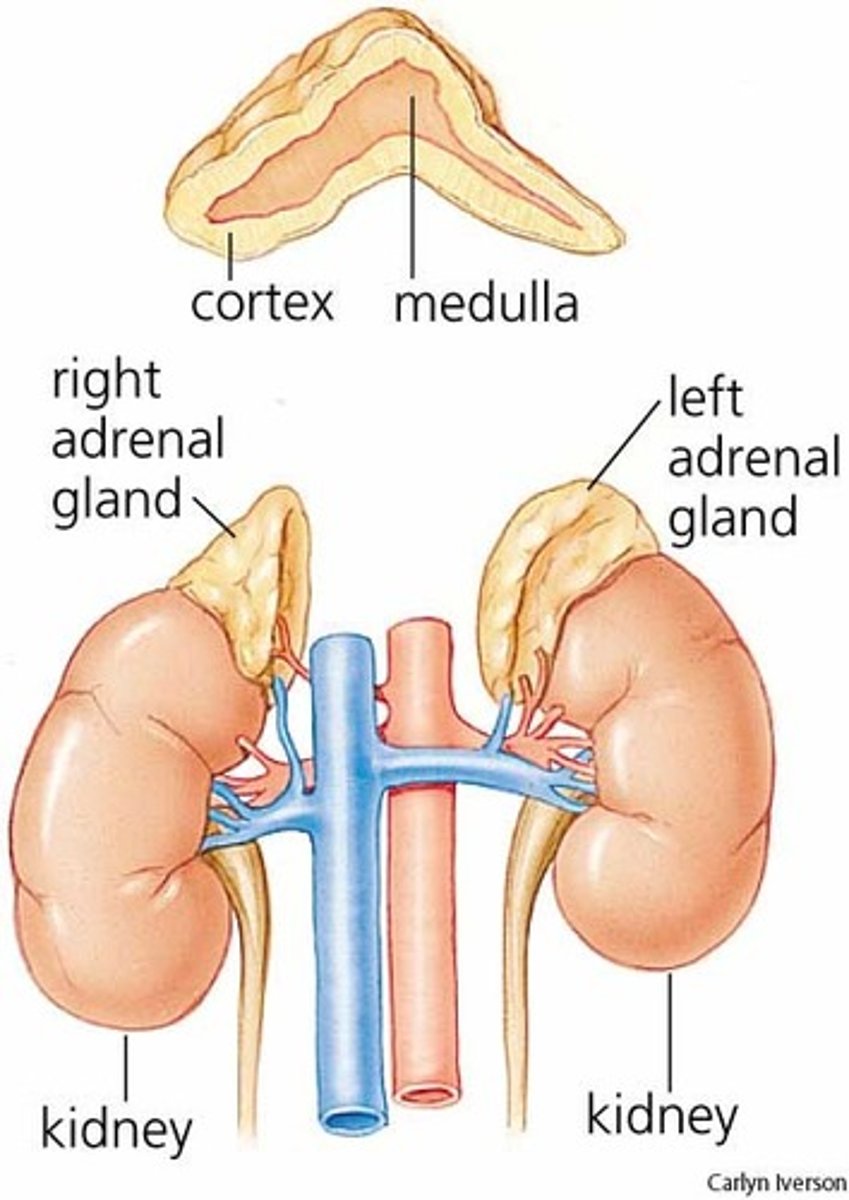
Peristalisis
Wavelike movement that moves food through the digestive system
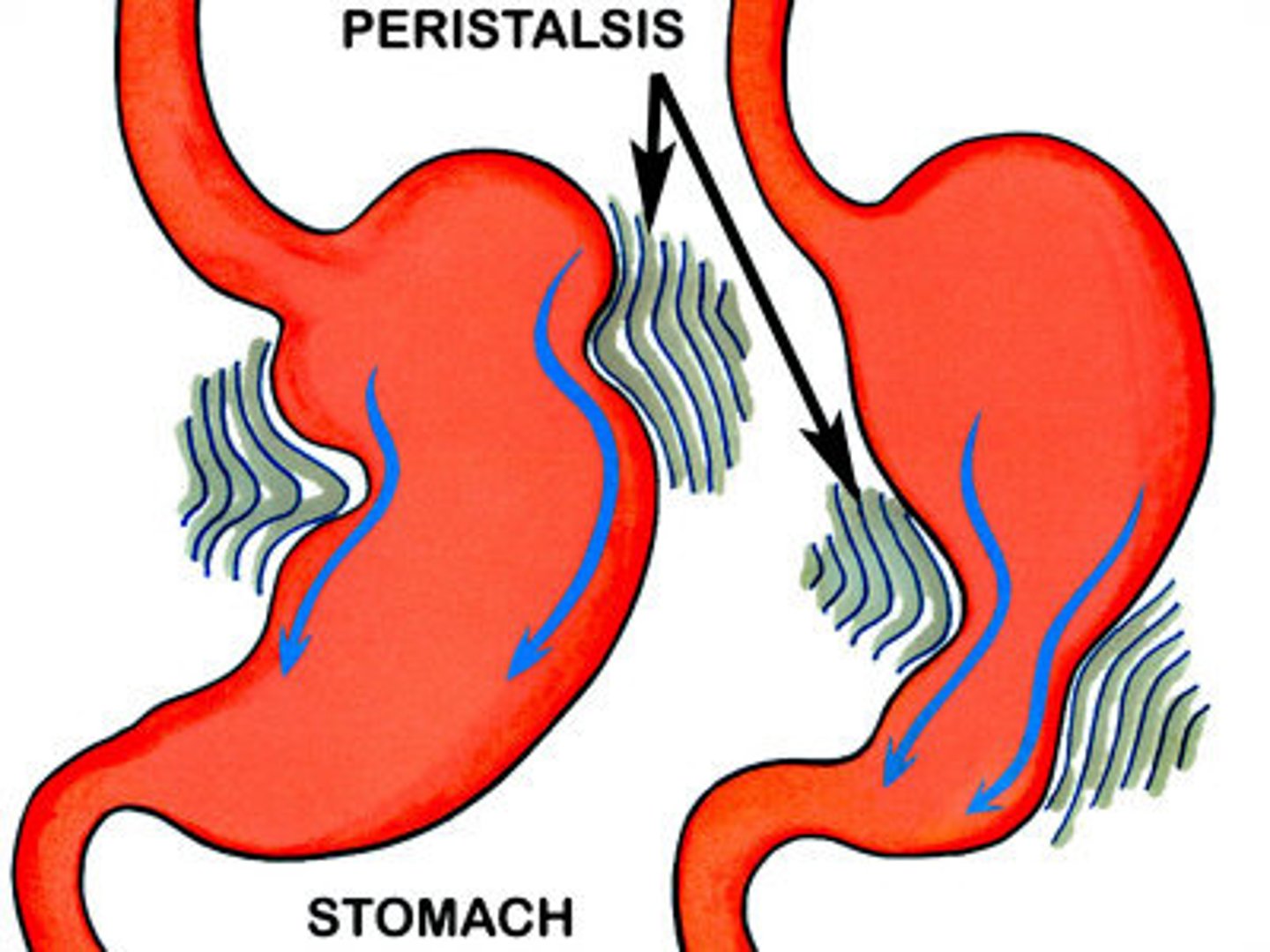
Pharynx
Connects the nasal and oral cavitiesvwith the larynx and esophagus. Referred to as the throat.

Larynx
Voice Box
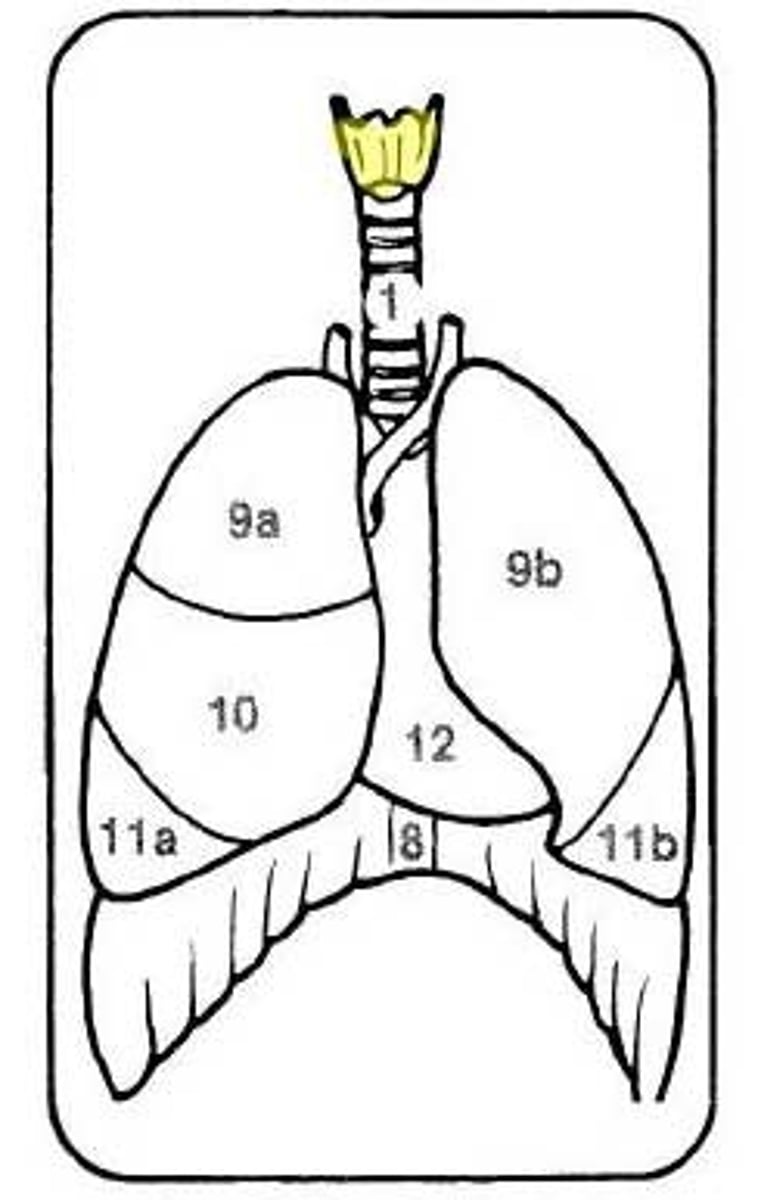
Esophagus
Transfers food to the stomach
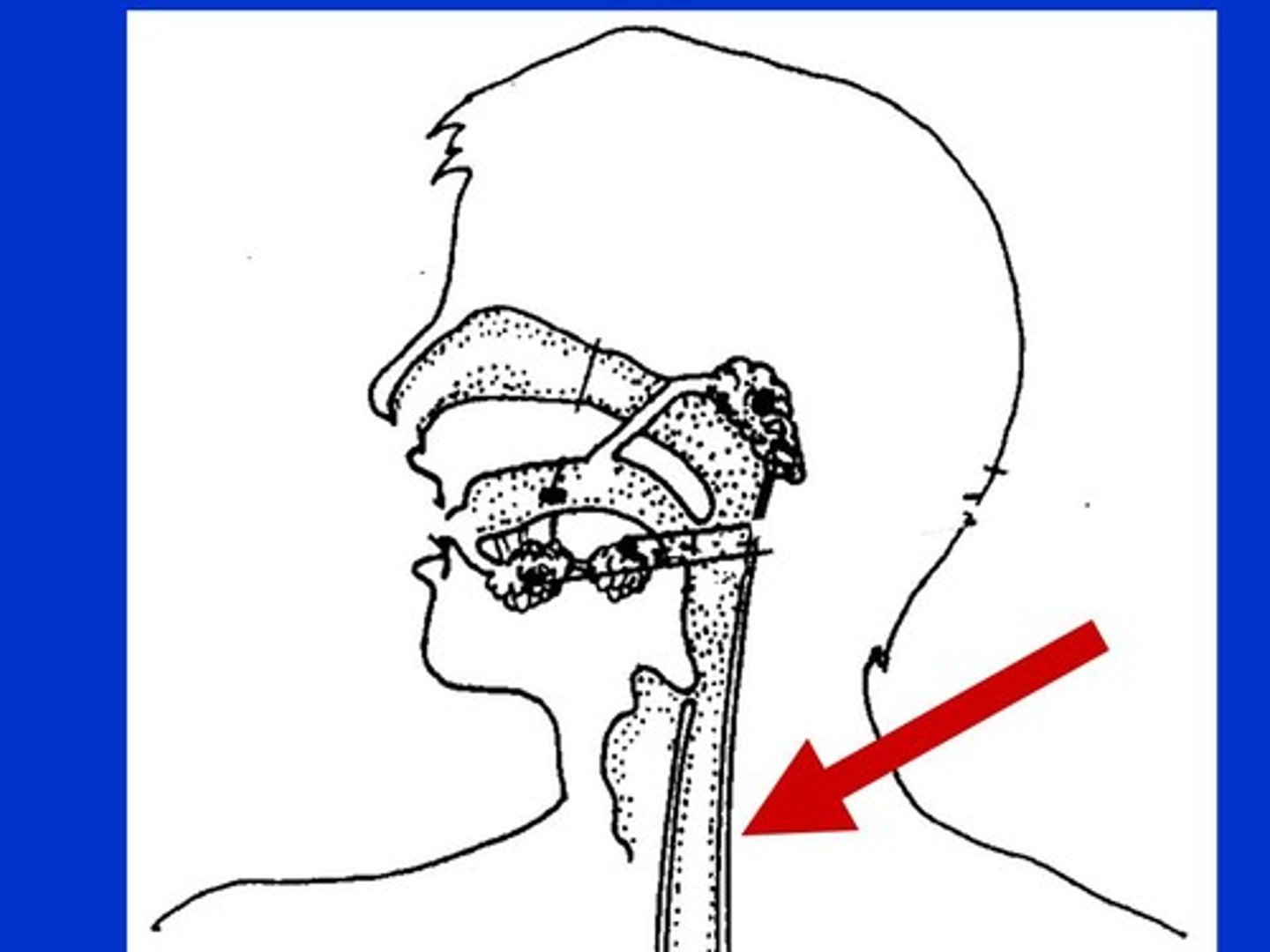
Epiglottis
Thin leaf shaped Valve that keeps food and liquid from entering the lungs.
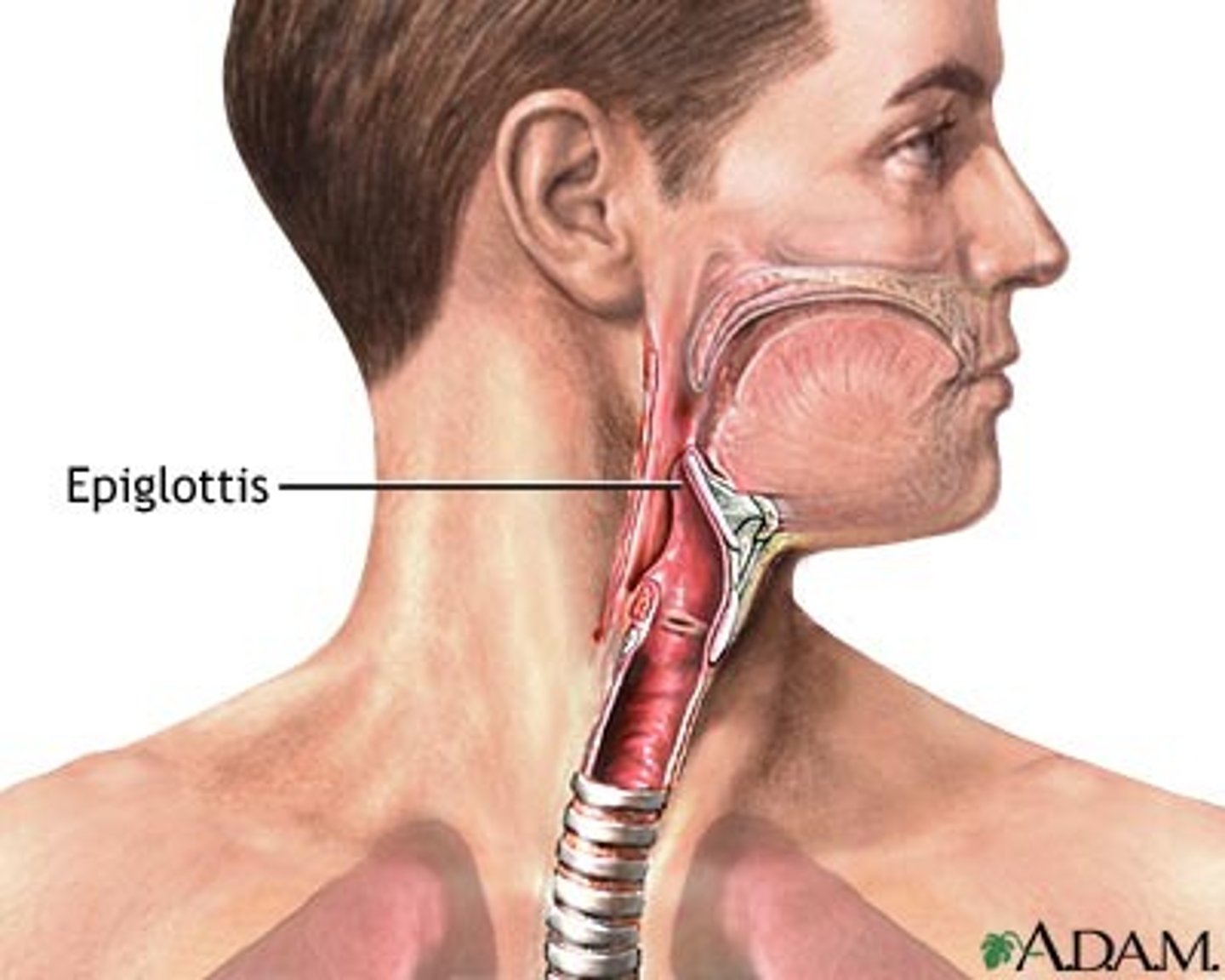
Trachea
Windpipe
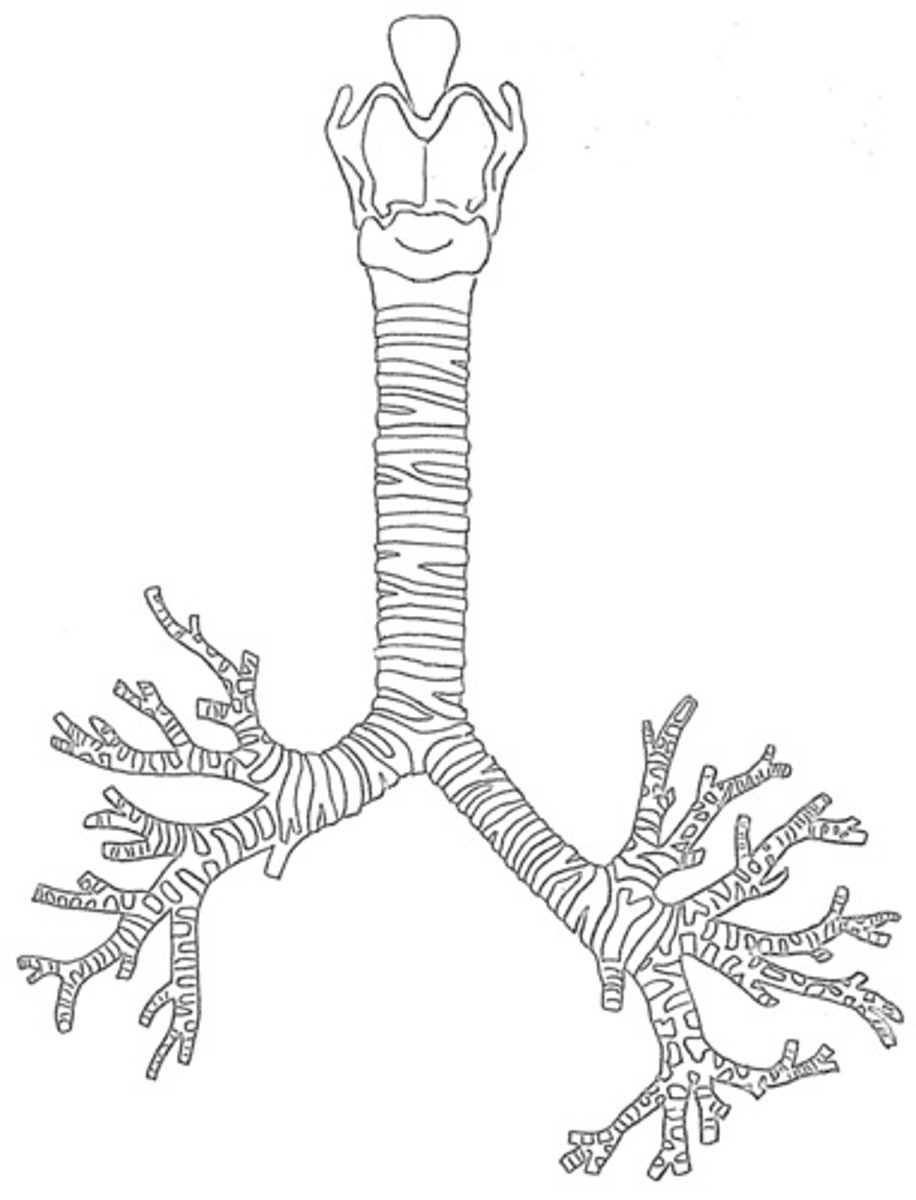
Vocal Cords
Contained in the larynx, Produces sound
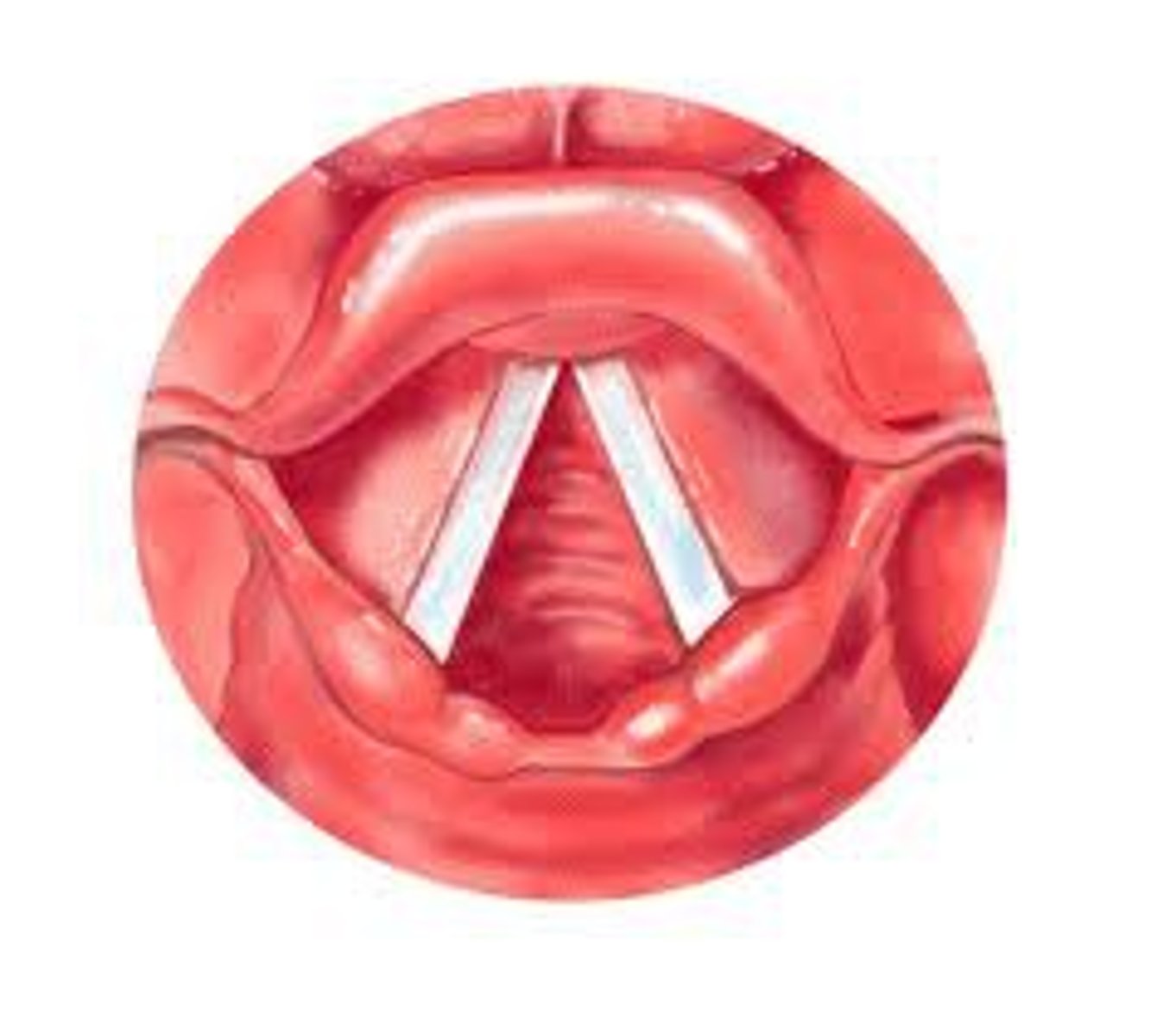
Bronchi
Tube that goes to each Lung
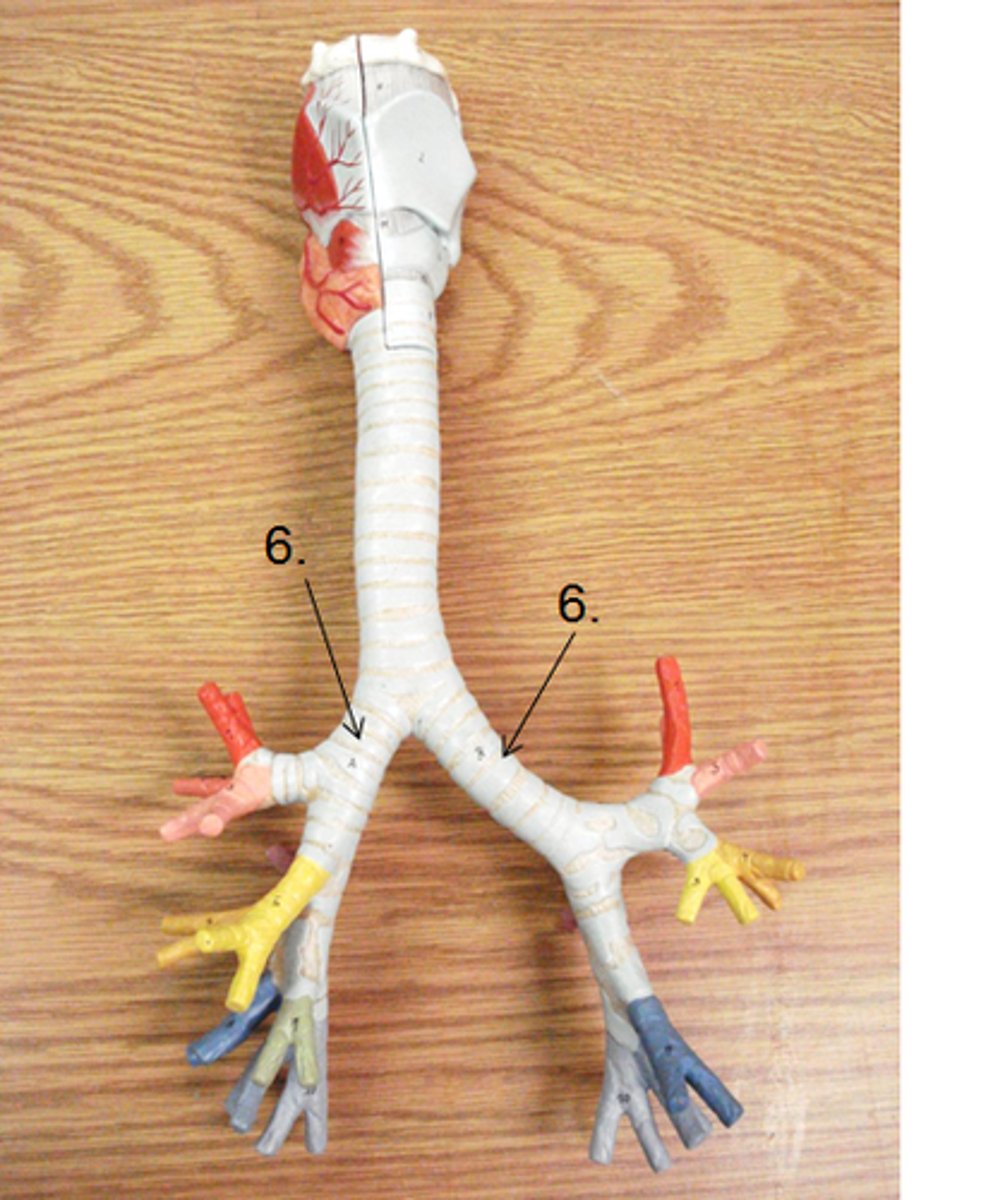
Alveoli
Small air sacs of the lungs where gas exchange takes place.
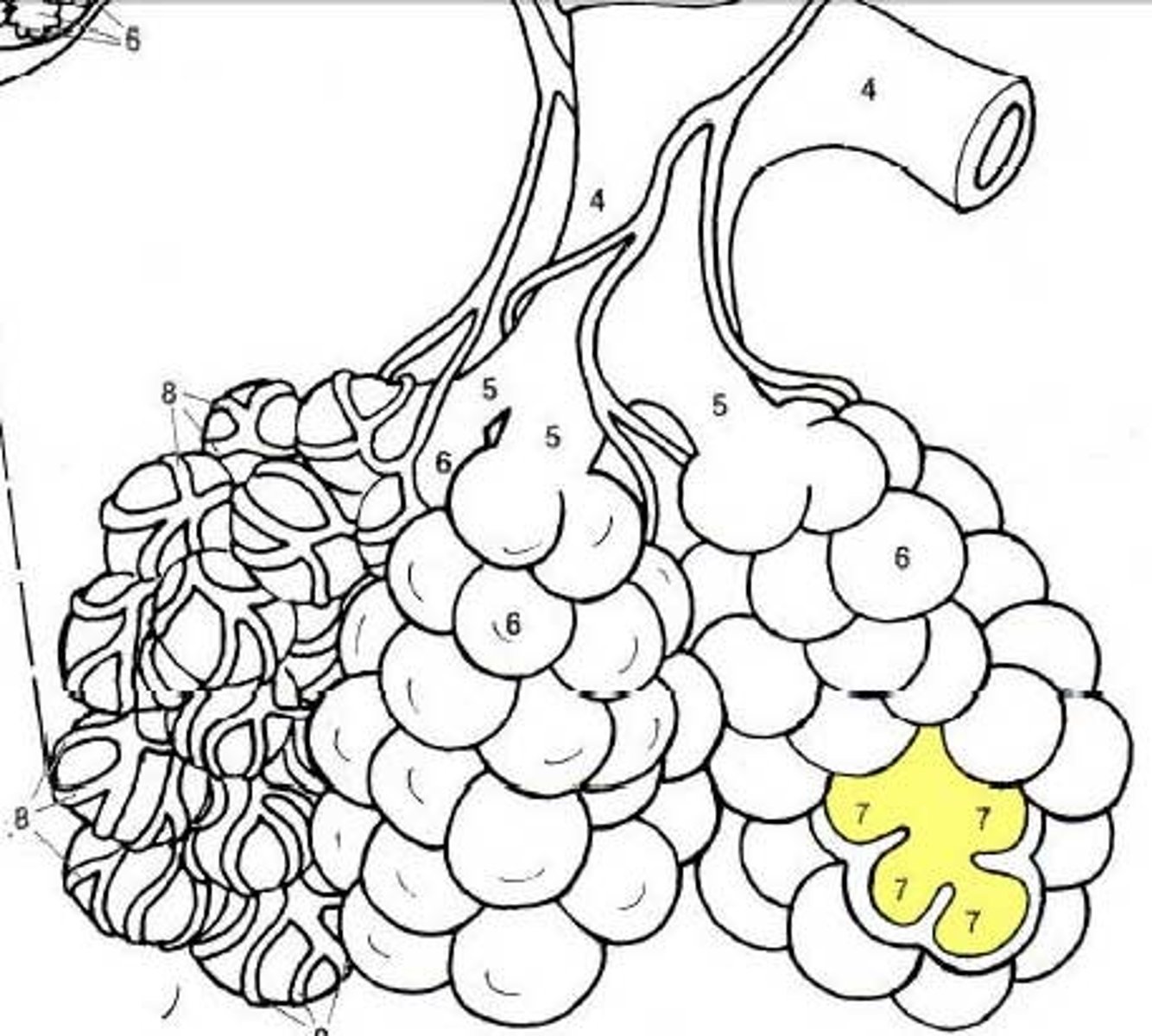
Lungs
A pair of organs that is a major part of respiratory.
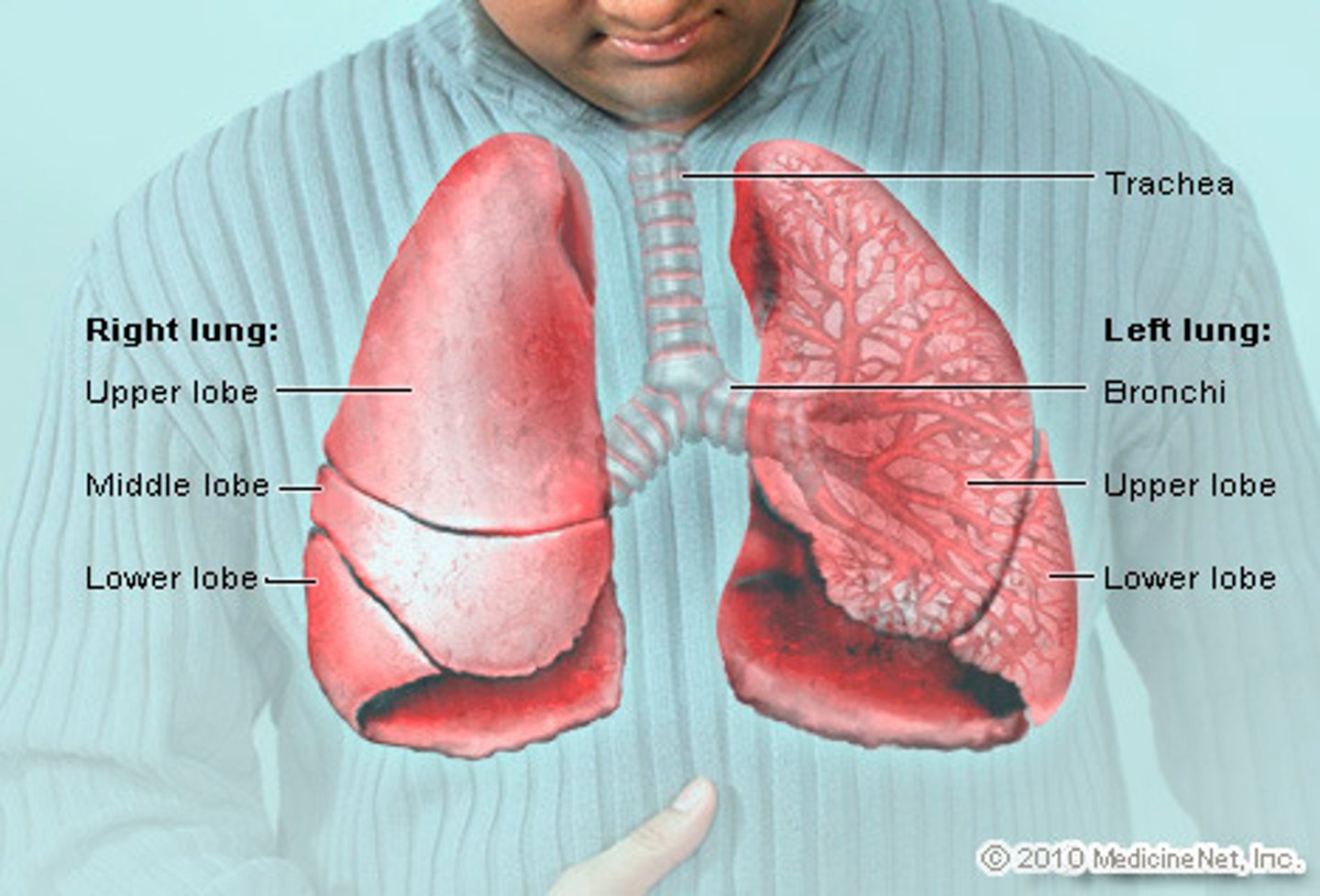
Diaphragm
Dome-shaped muscle used during respiration. separates the chest from abdominal cavity
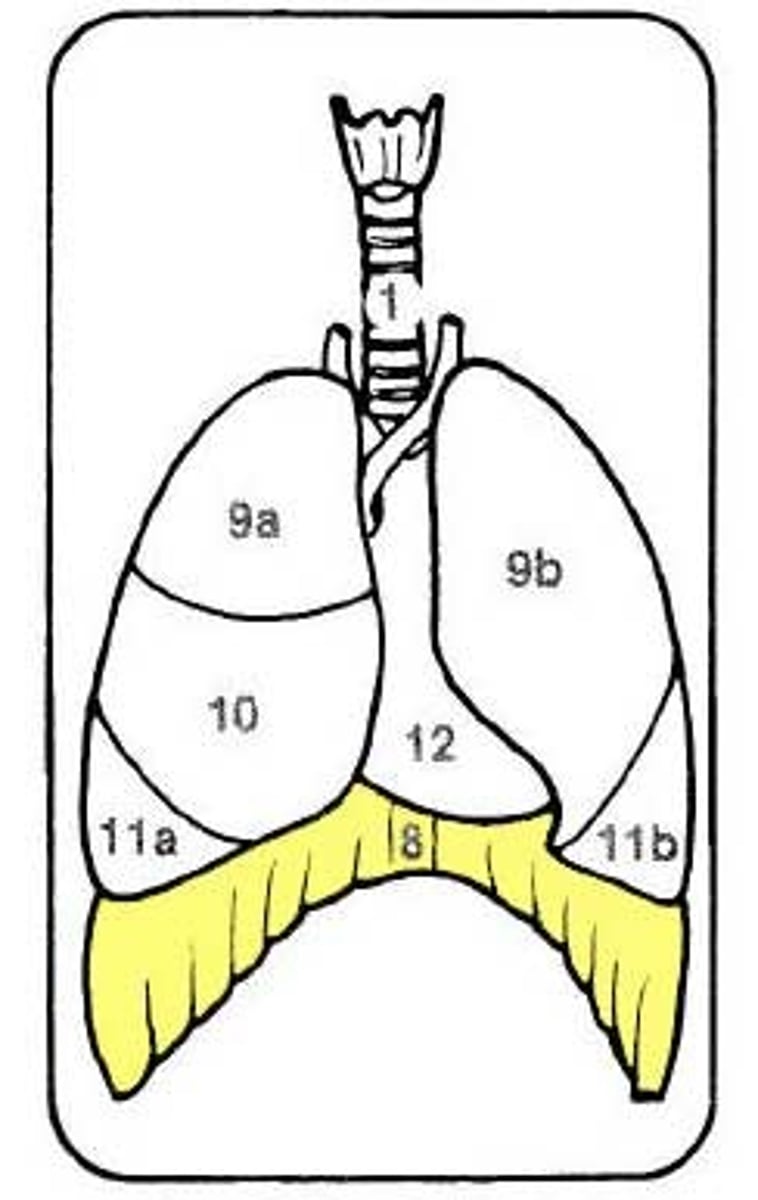
Intercostal Muscles
Found between the ribs.
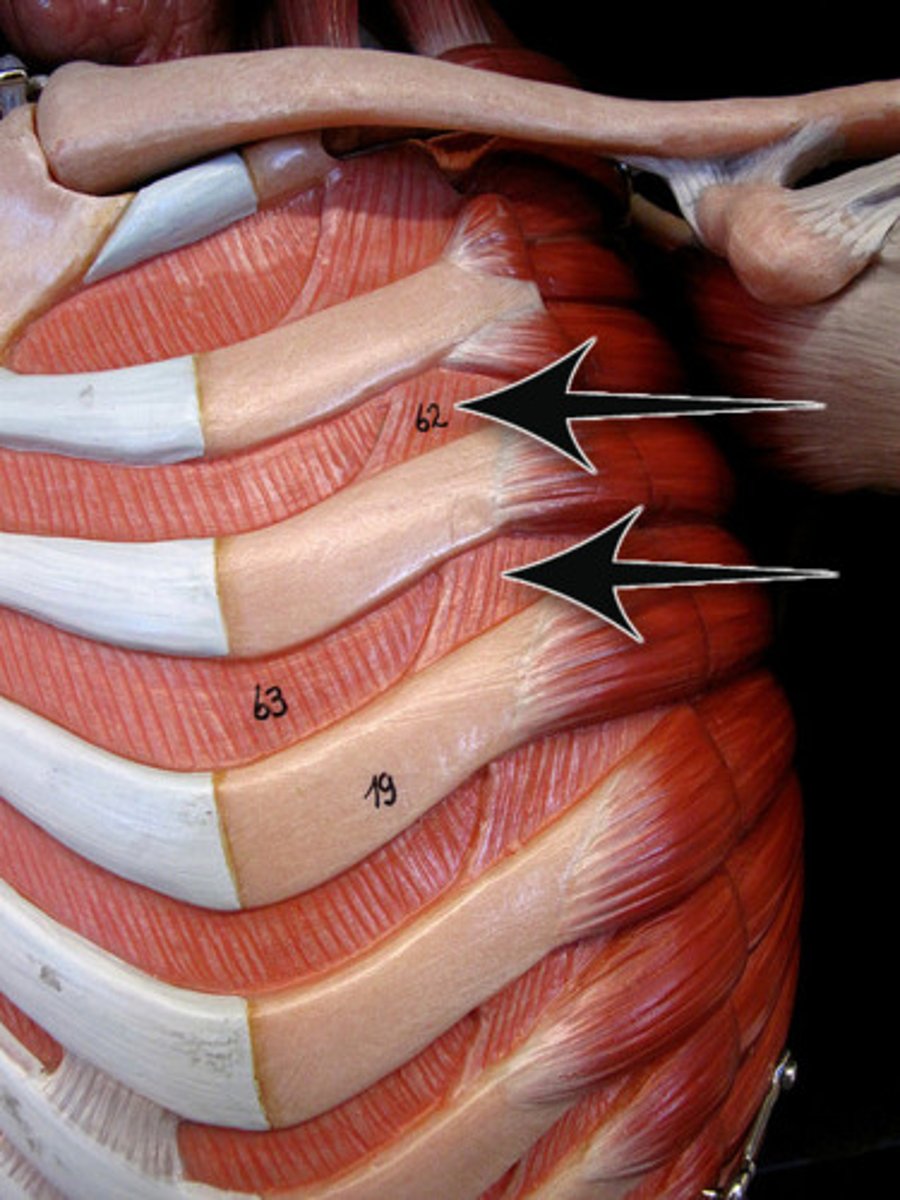
Heart, Blood, Blood vessels
Components of the cardiovascular system
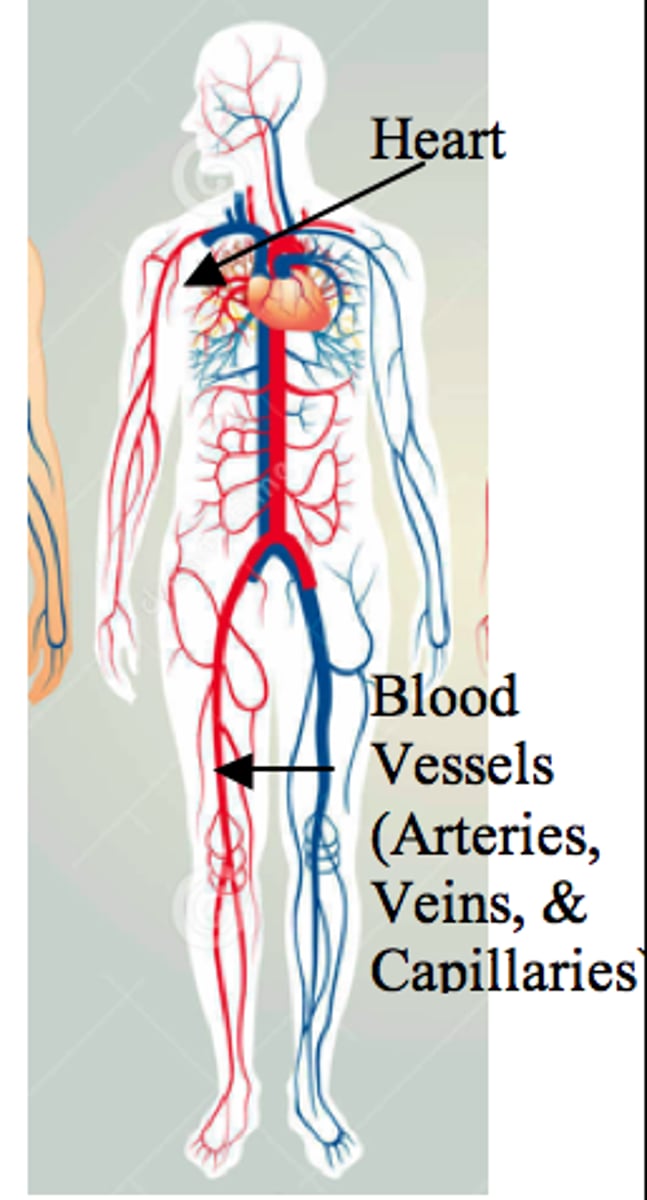
Coronary Arteries
Supplies the heart with oxygenated blood
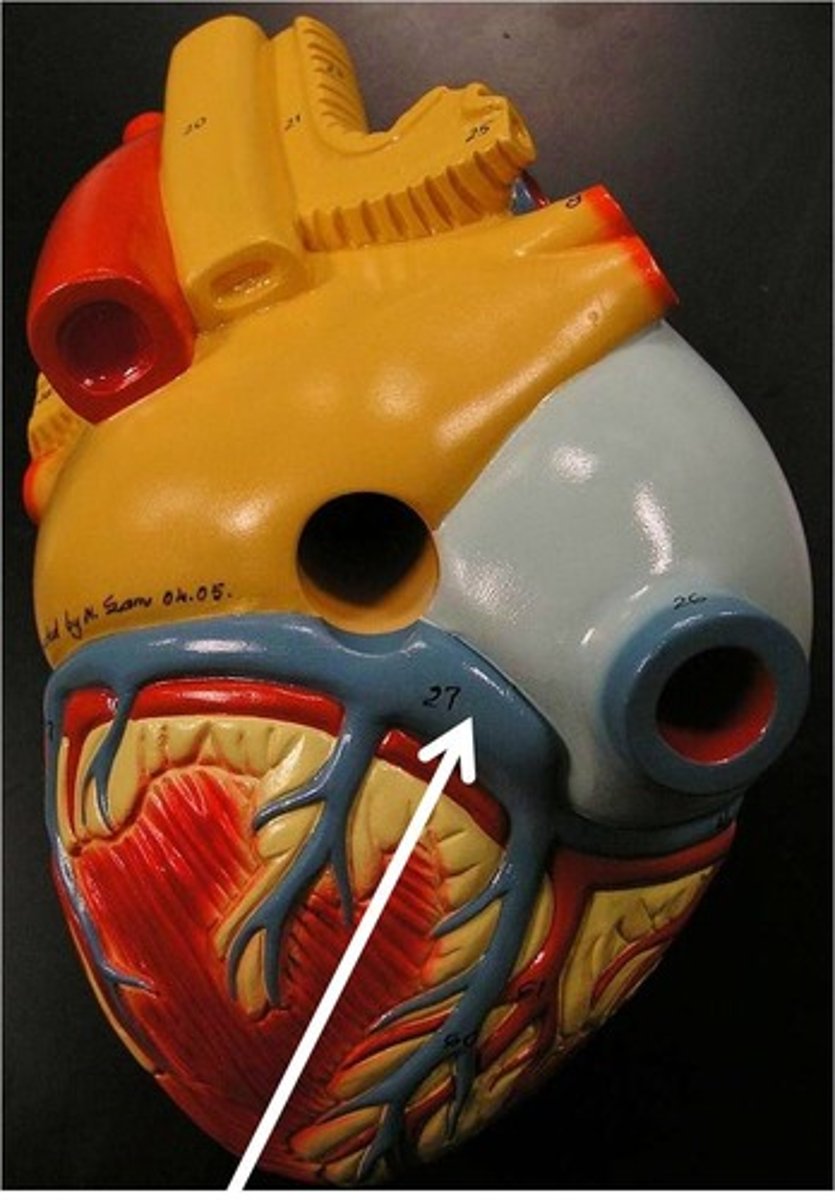
Brachial Artery
Main Artery in the upper arm.
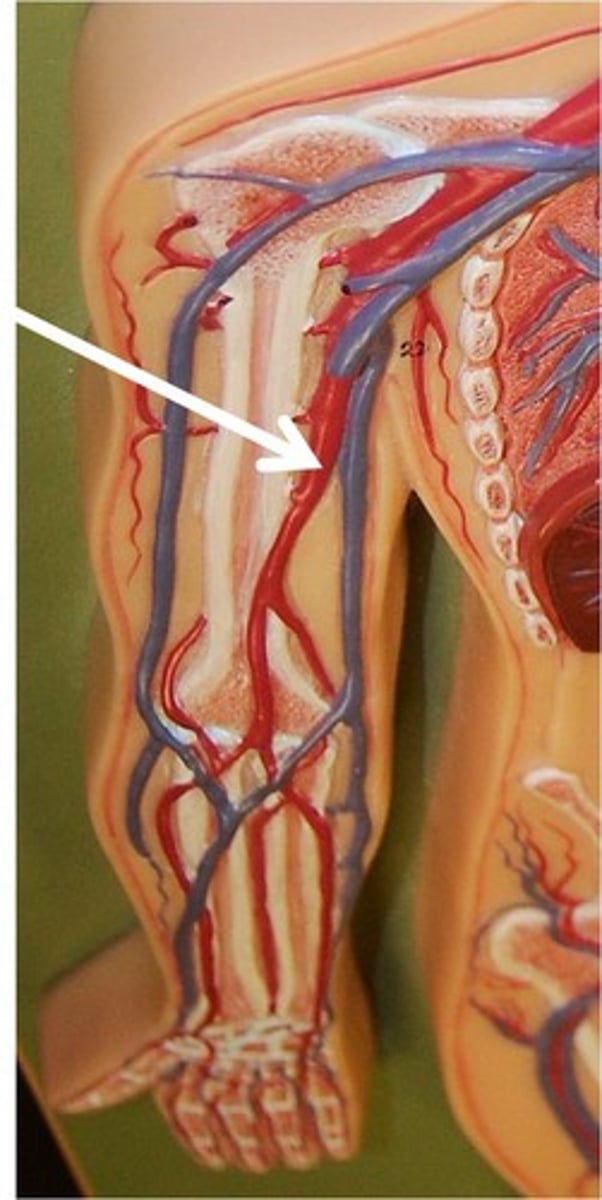
Carotid Artery
Main Artery in the neck.
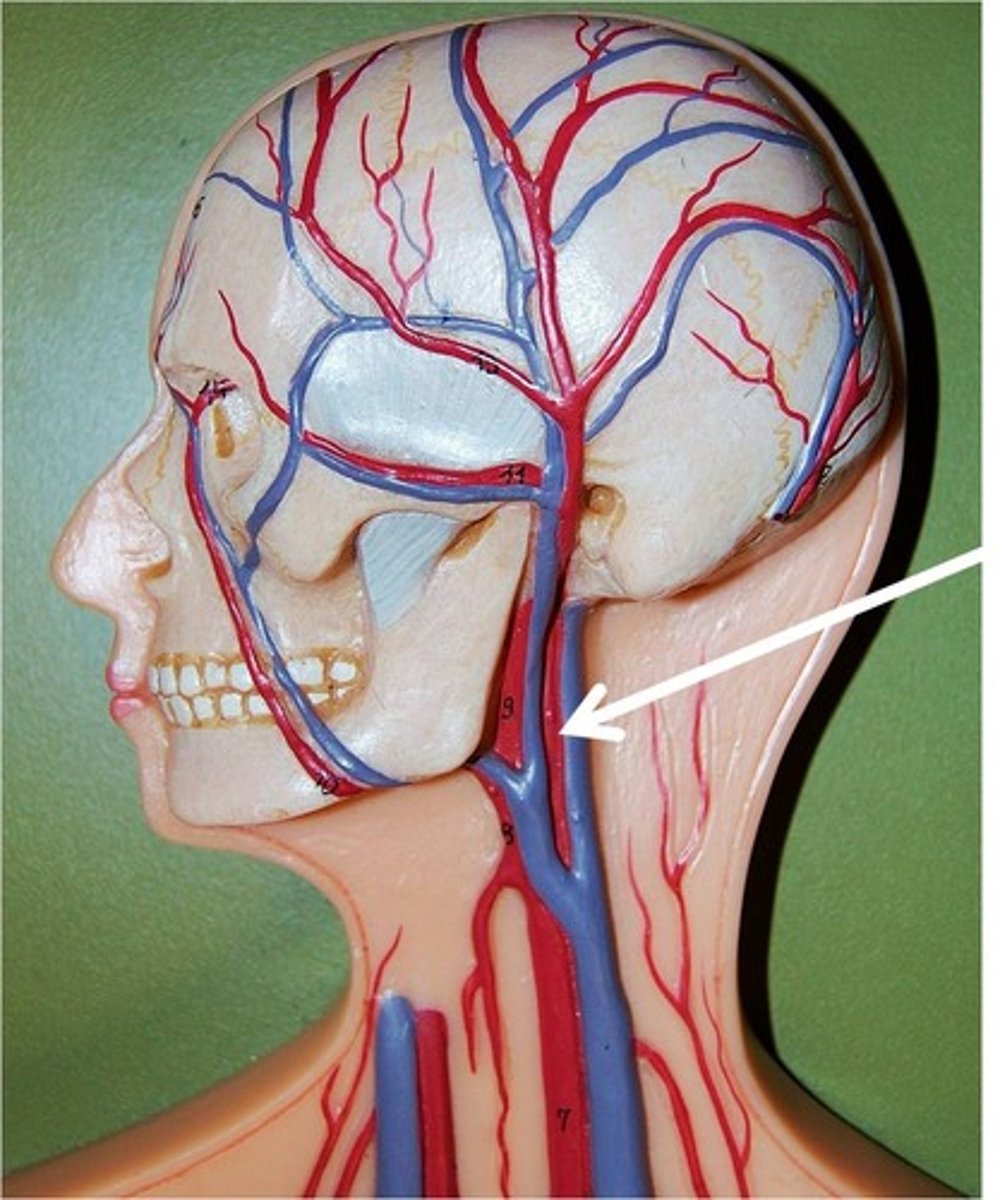
Femoral Artery
Main Artery of the thighs.
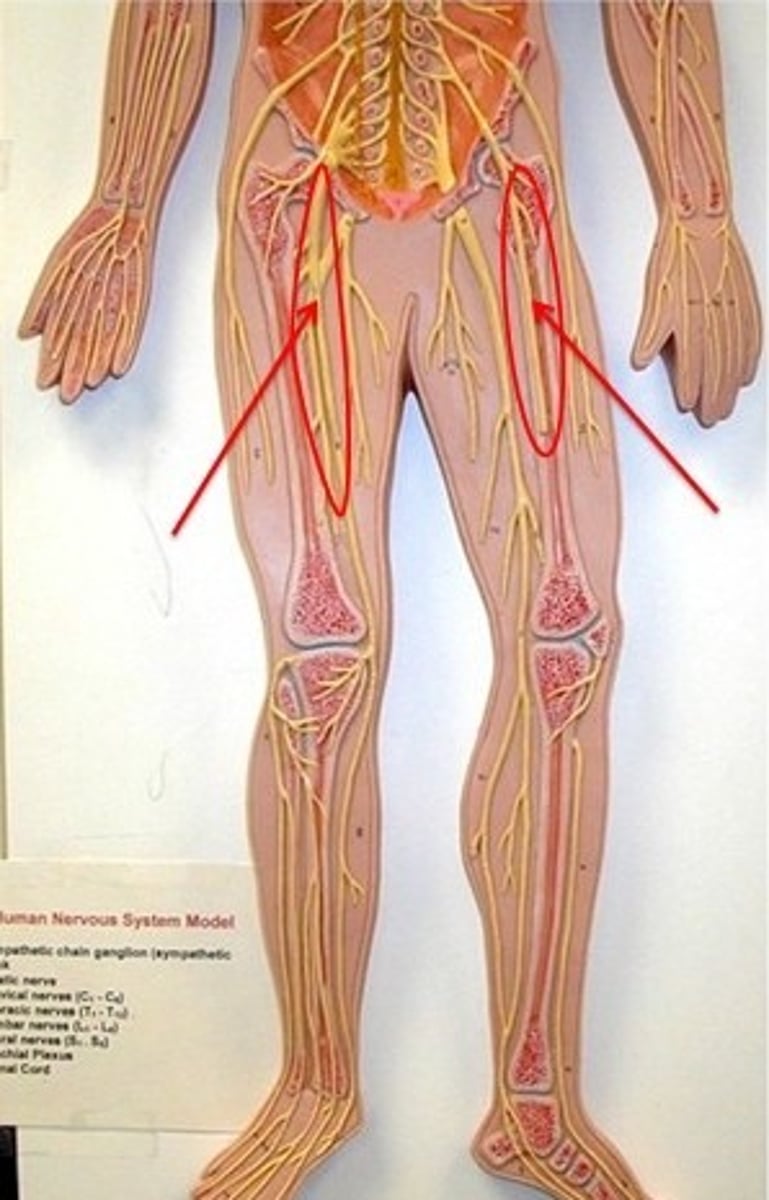
Radial Artery
Artery on thumb side of lower arm.
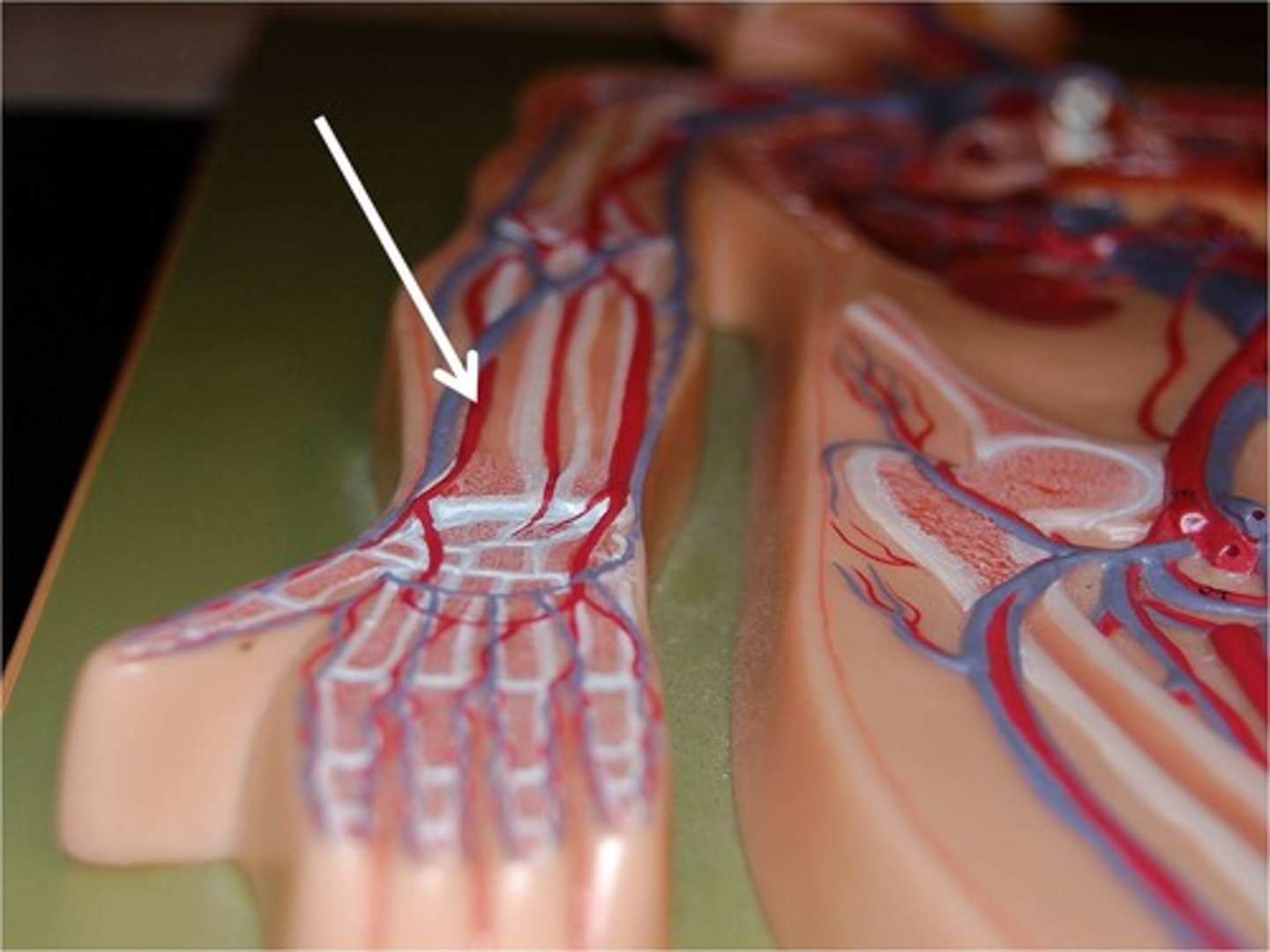
Posterior Tibialis
Artery posterior of the medial malleous, supplies blood to the foot.
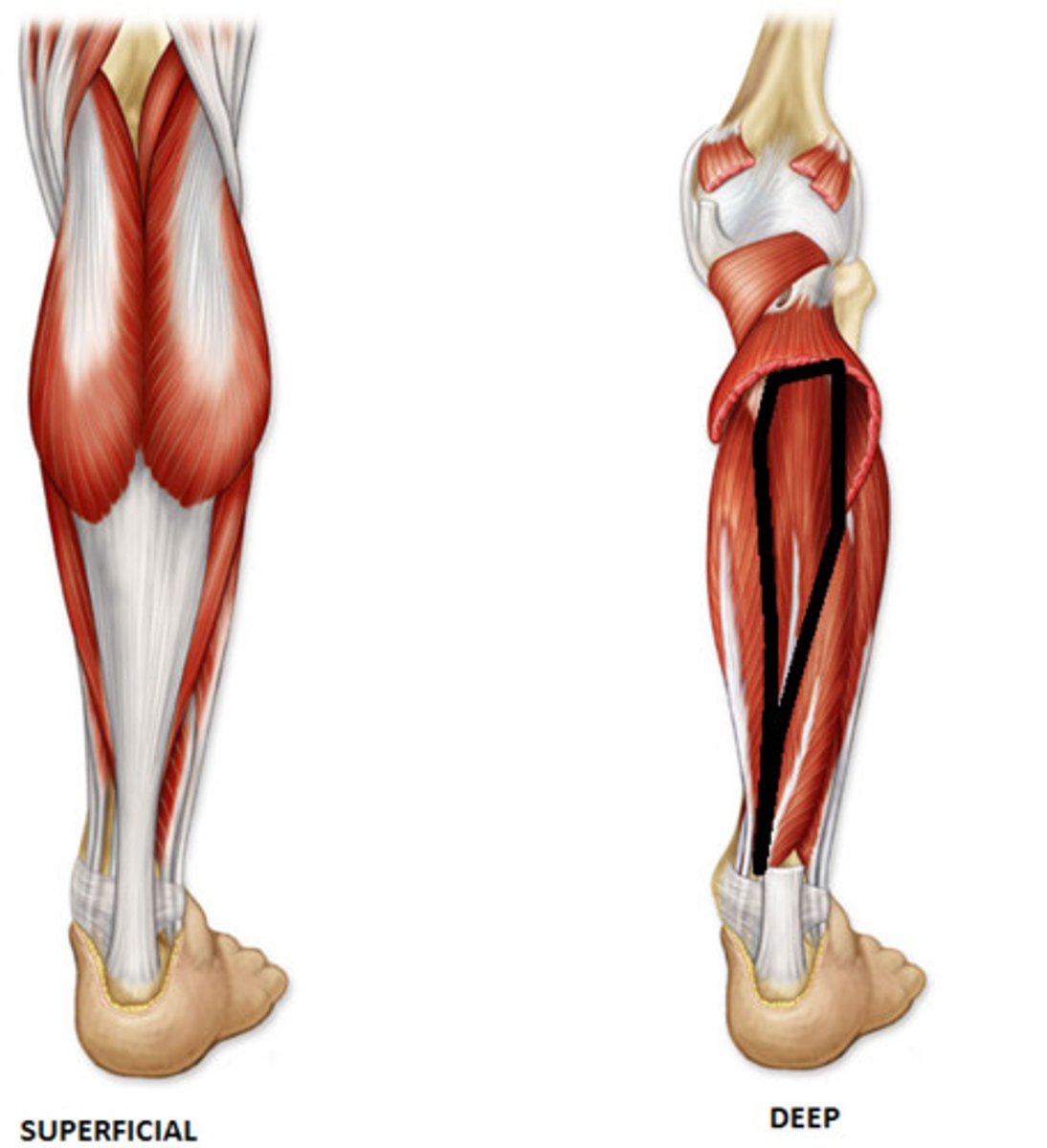
Arteries
Takes blood away from the heart.
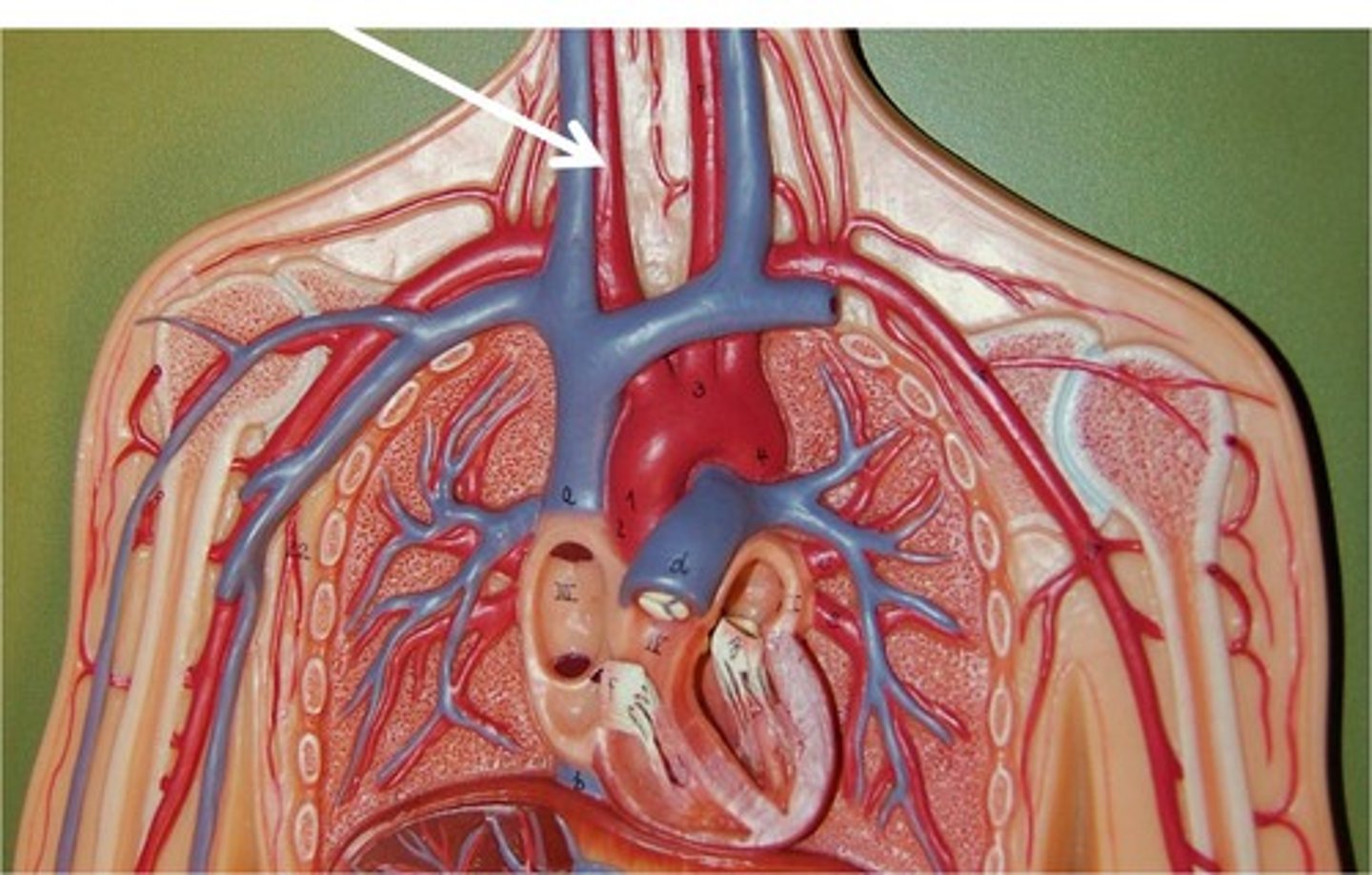
Veins
Takes blood toward the heart.
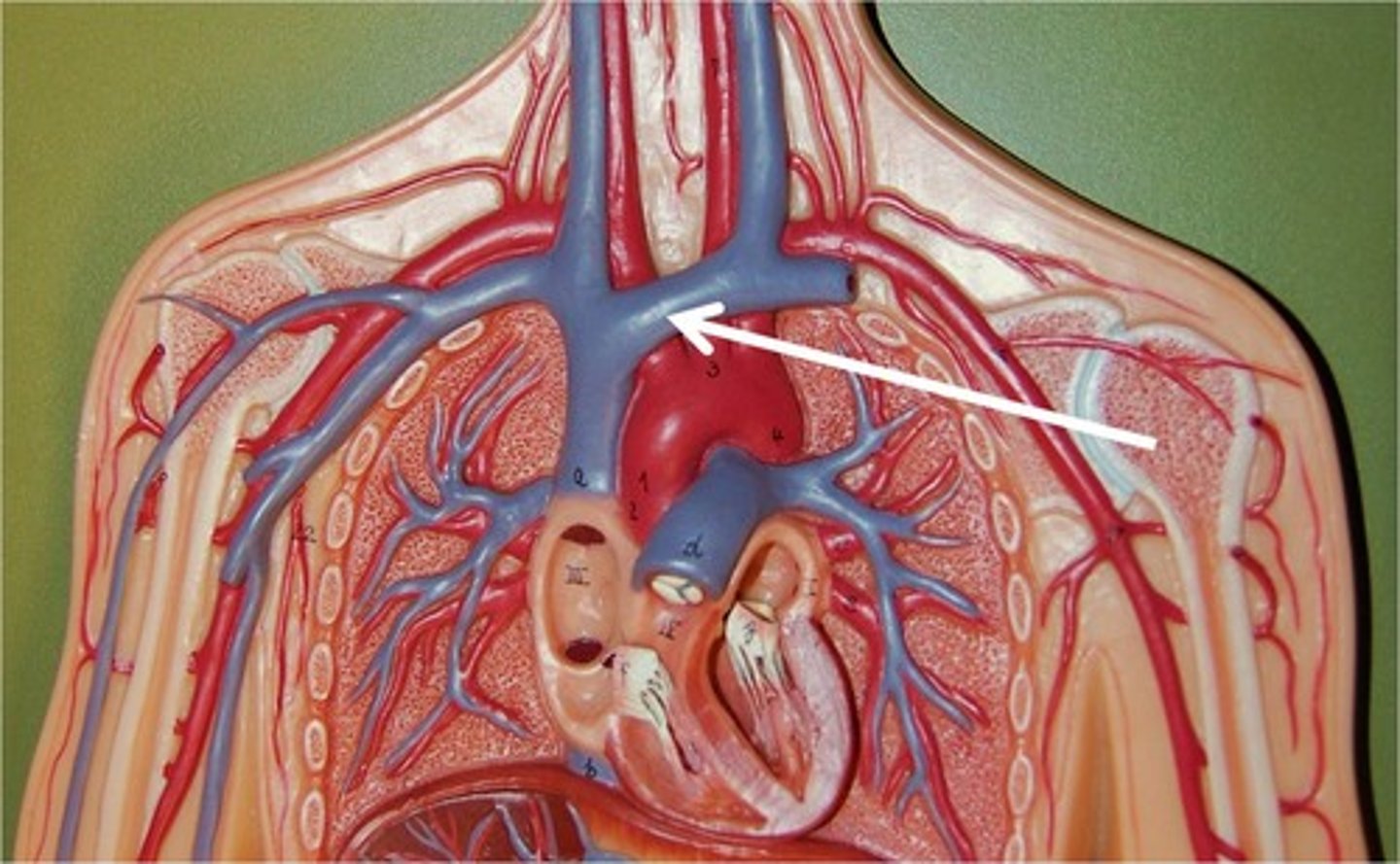
Capillaries
Smallest vessles of the body.
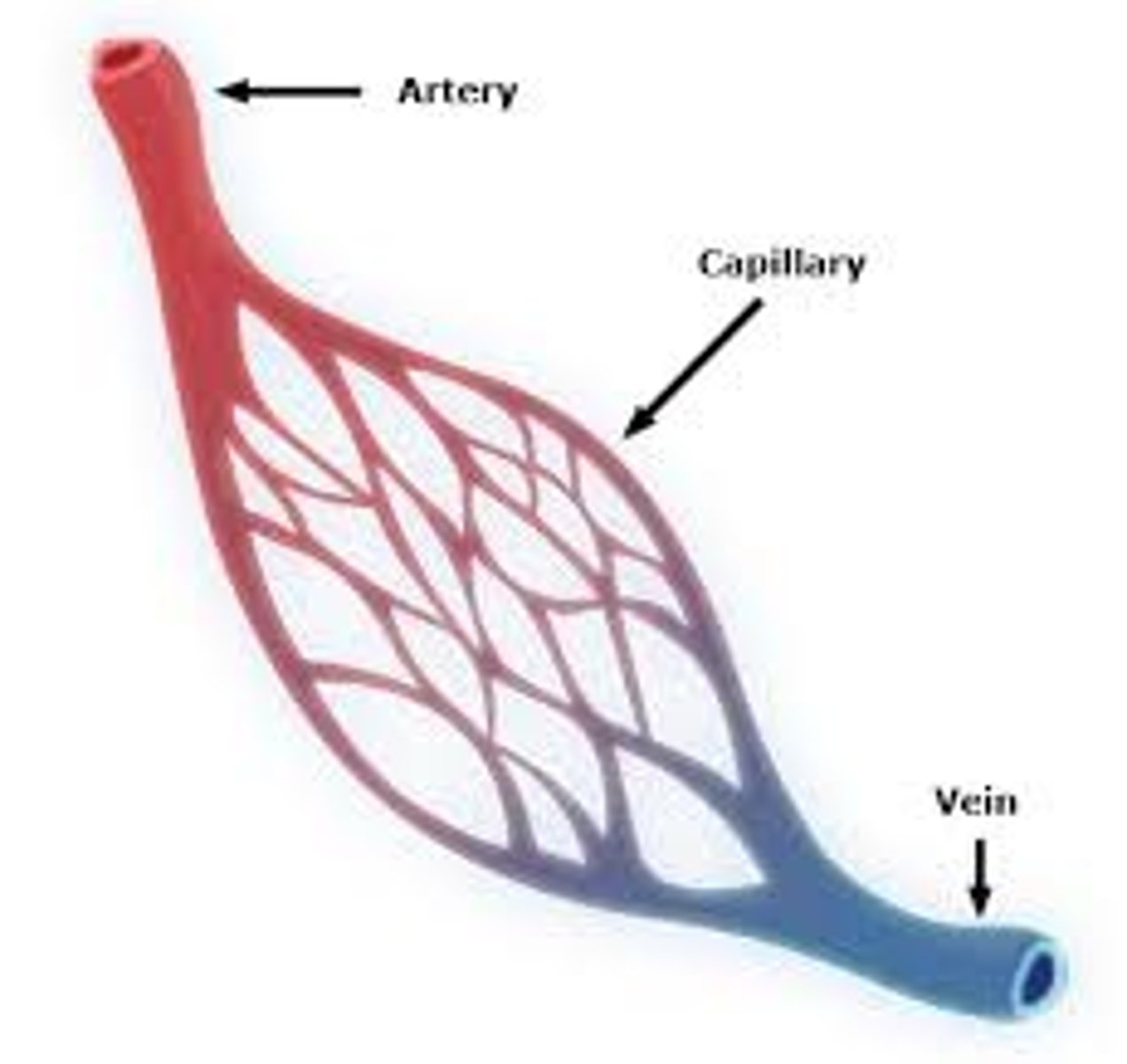
Vena Cavas
Largest Veins of the body.
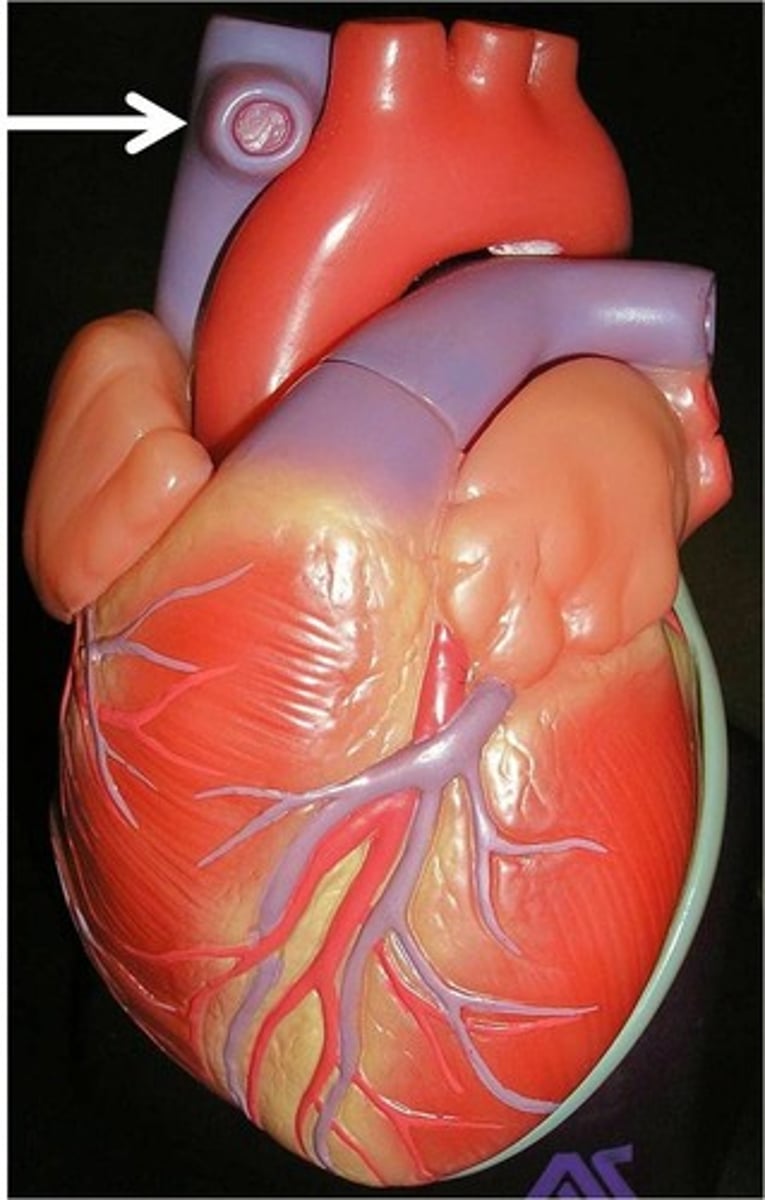
Aorta
Largest Artery of the body.
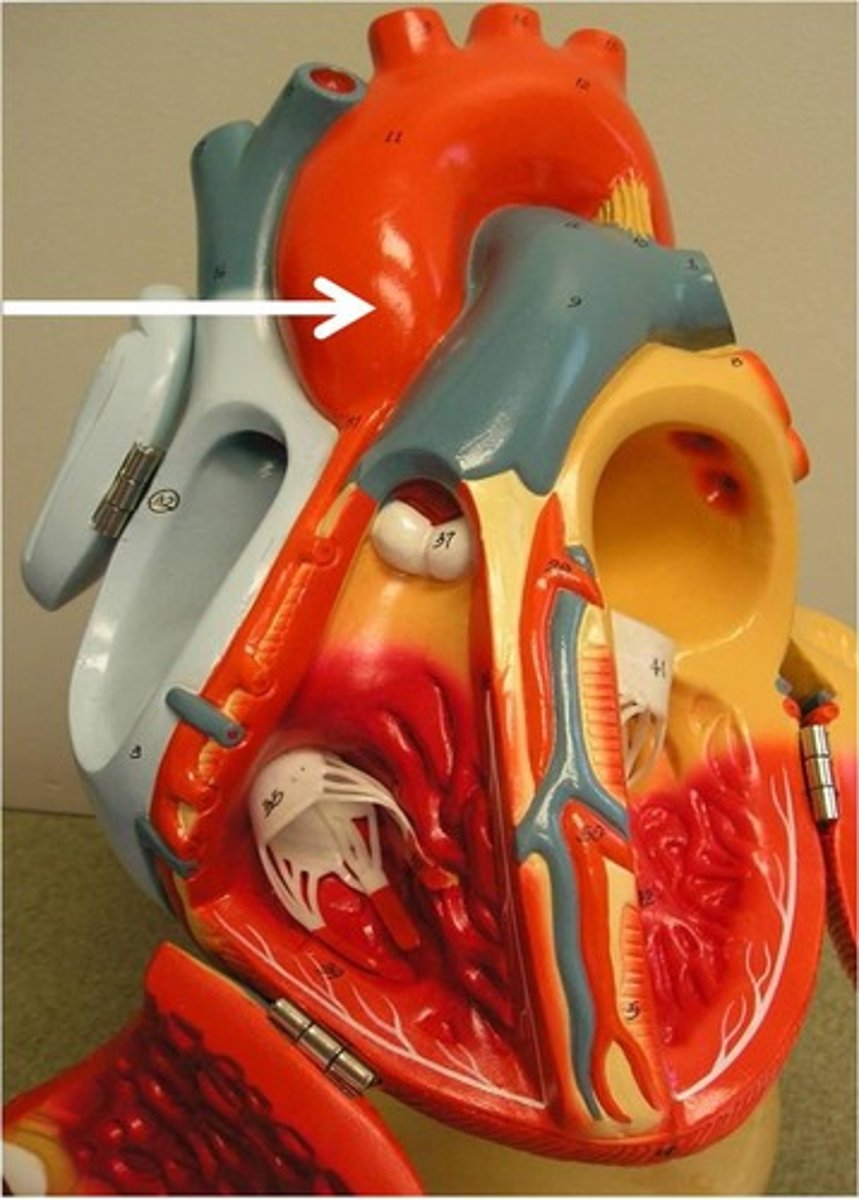
Plasma
Liquid portion of the blood in which the blood cells and nutrients are suspended.
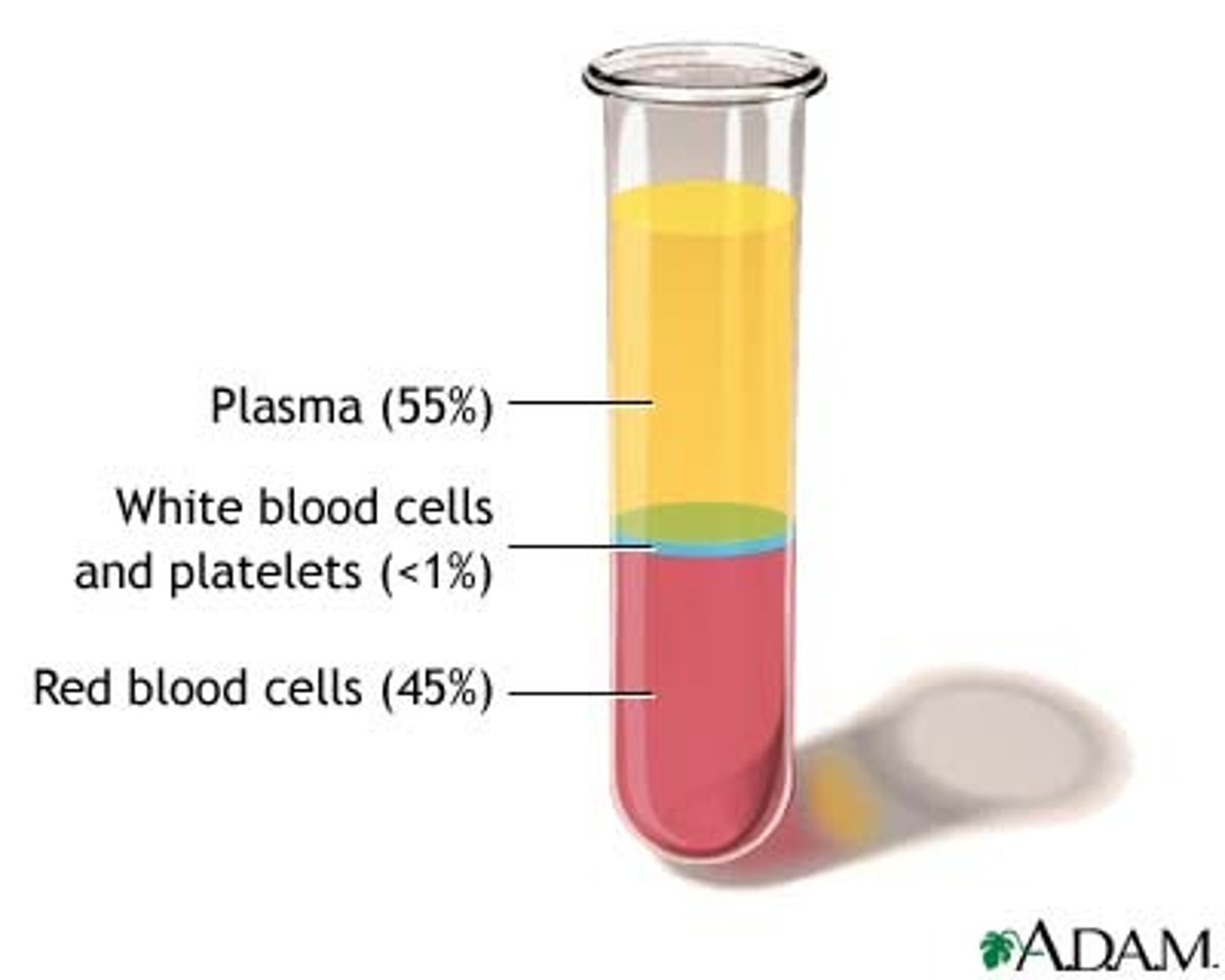
Red Blood Cells
Largest components of cells in the body, responsible for carrying O2 and CO2 to and from the tissues.
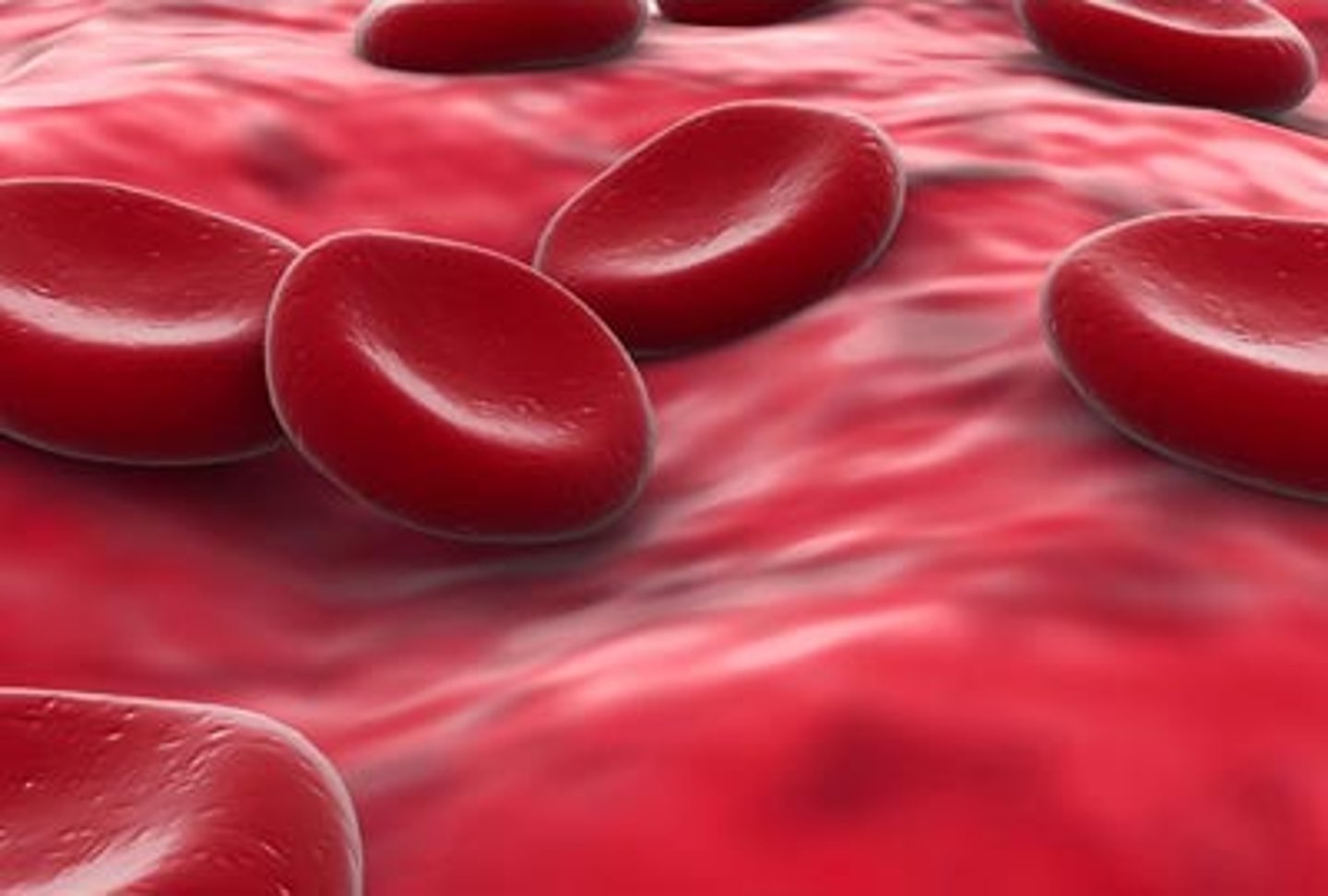
White Blood Cells
Fights infection, establishes immunity against certain diseases.
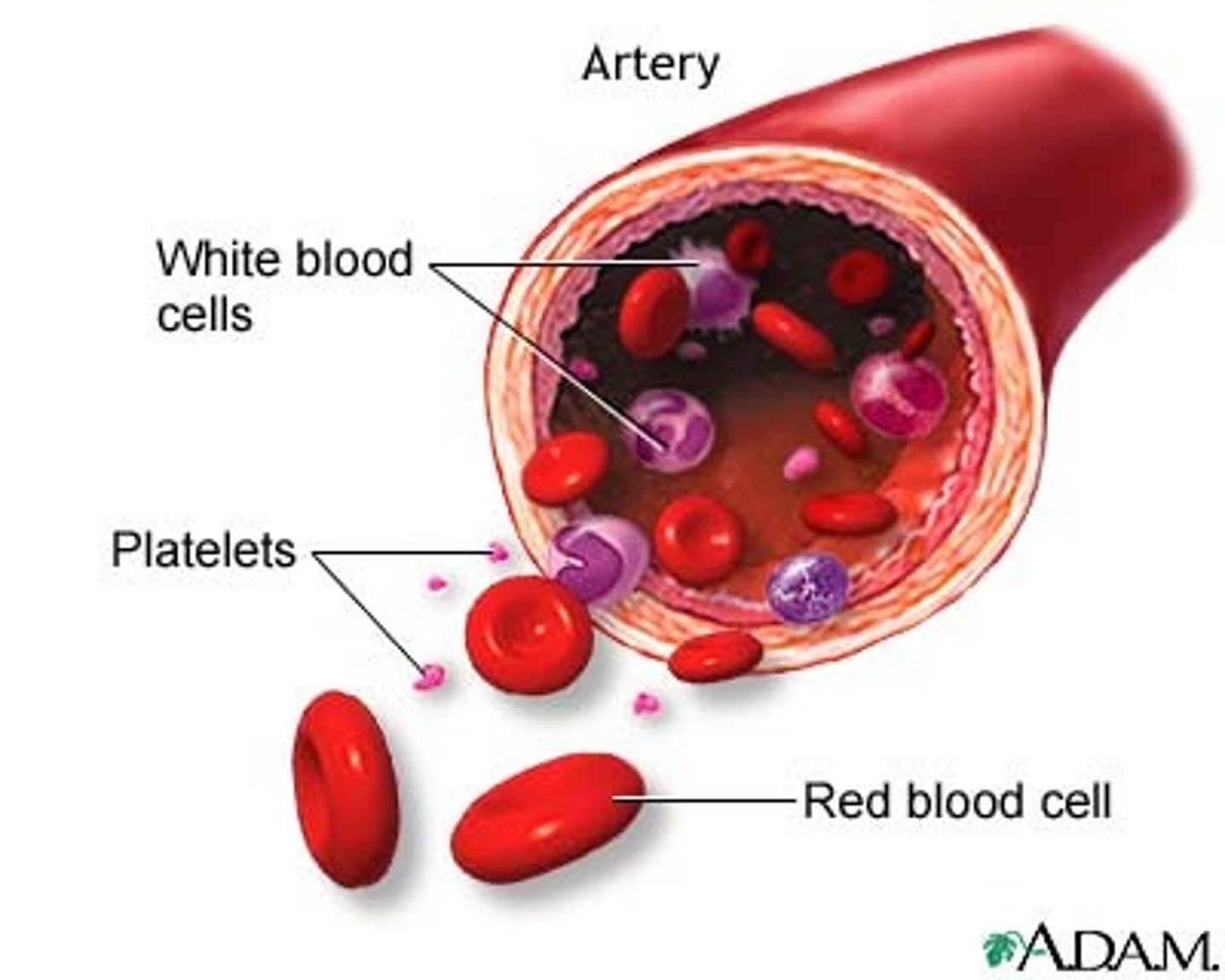
Platelets
Responsible for clotting blood.
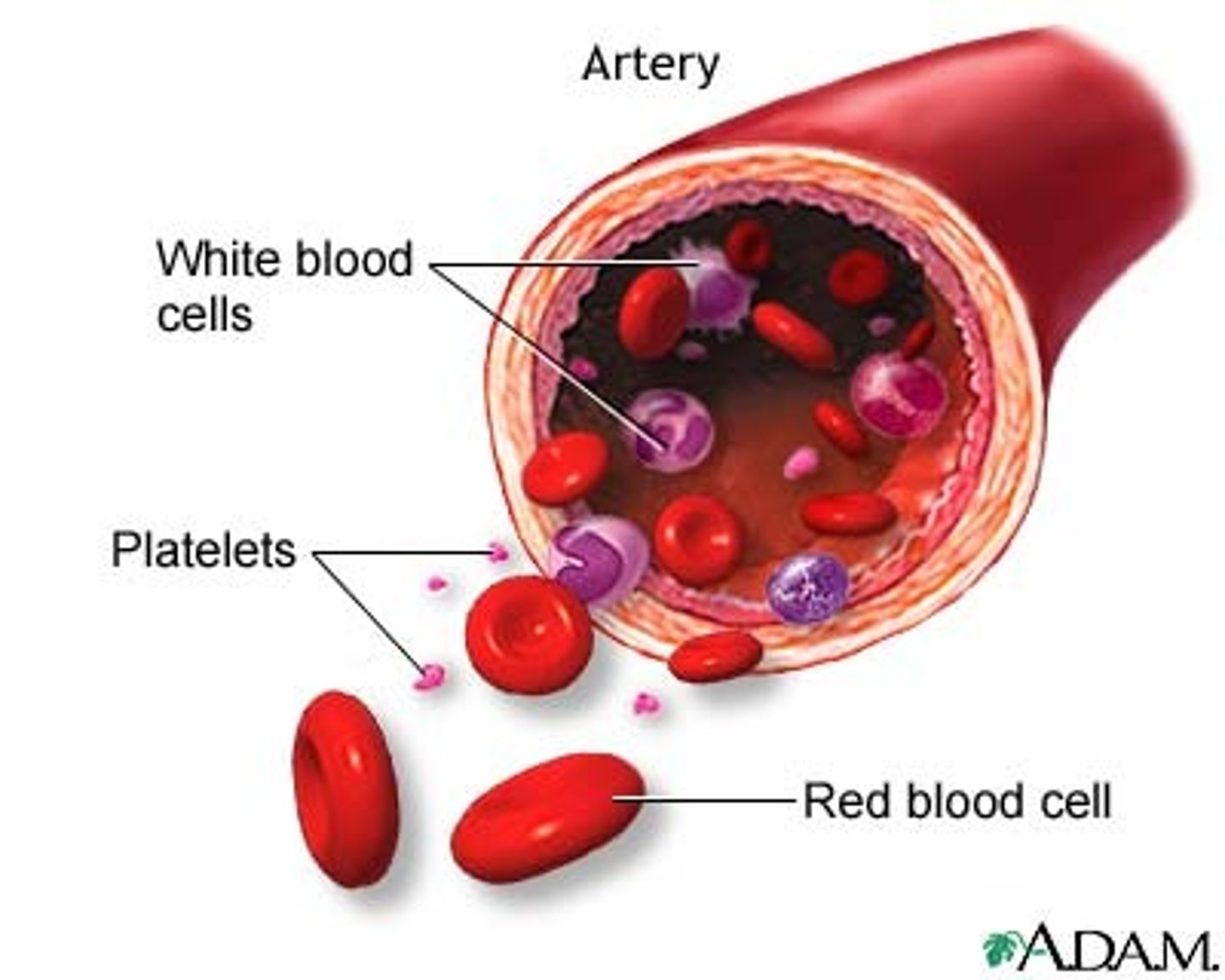
Erythrocytes
Red Blood Cells
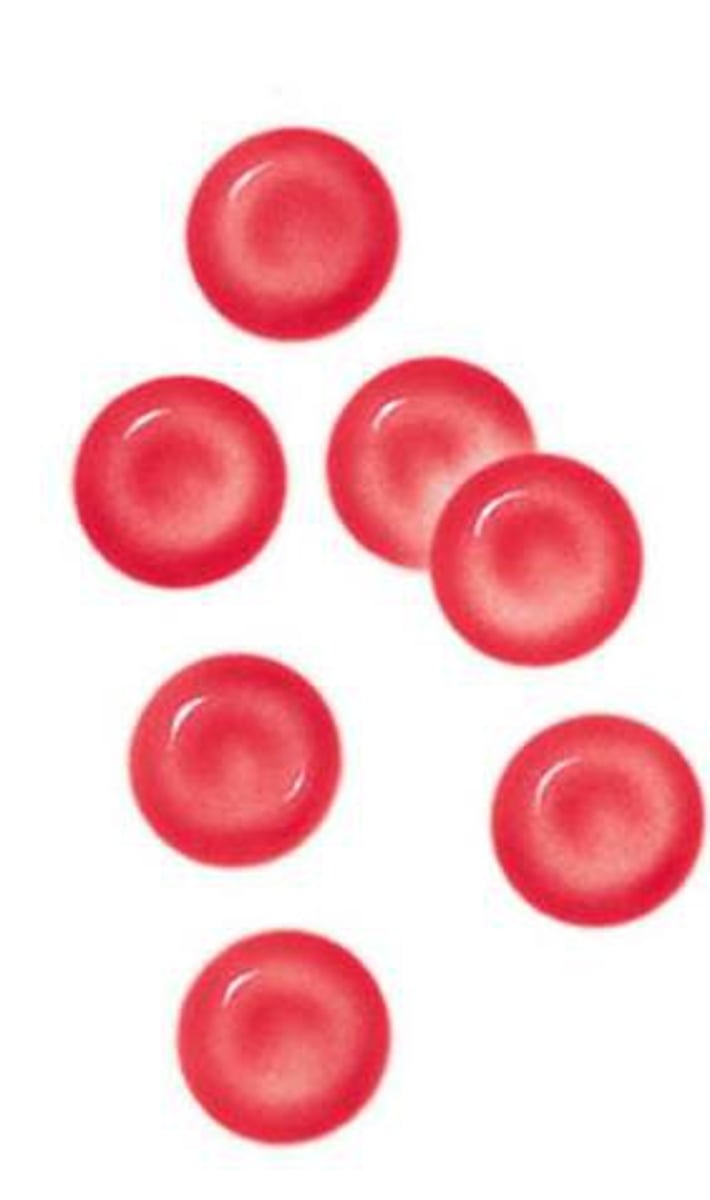
Leukocytes
White Blood Cells
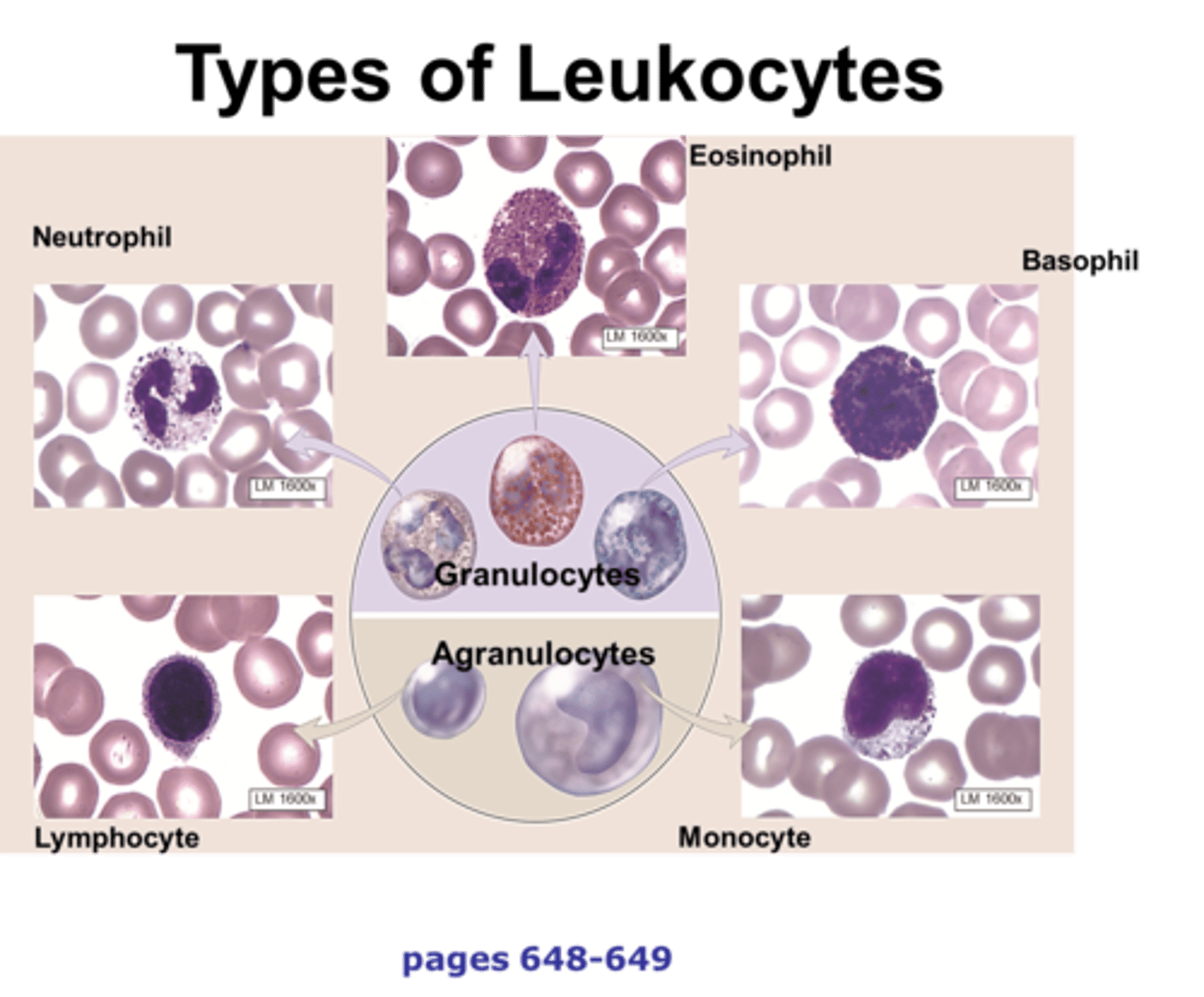
Systolic
Pressure exerted against the walls of the artery when the ventricles contract.
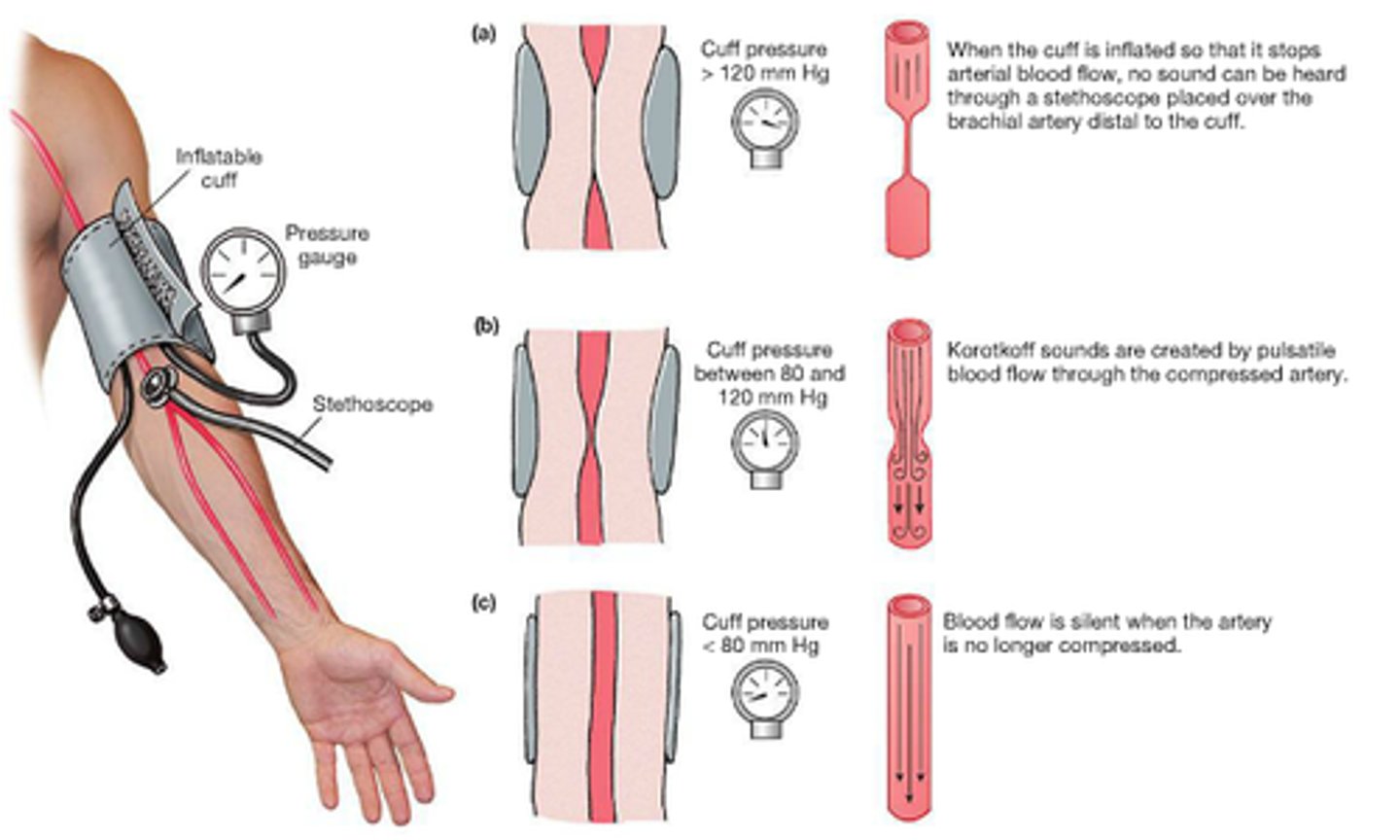
Diastolic
Pressure exerted against the walls of the artery when the ventricle is at rest.Blood
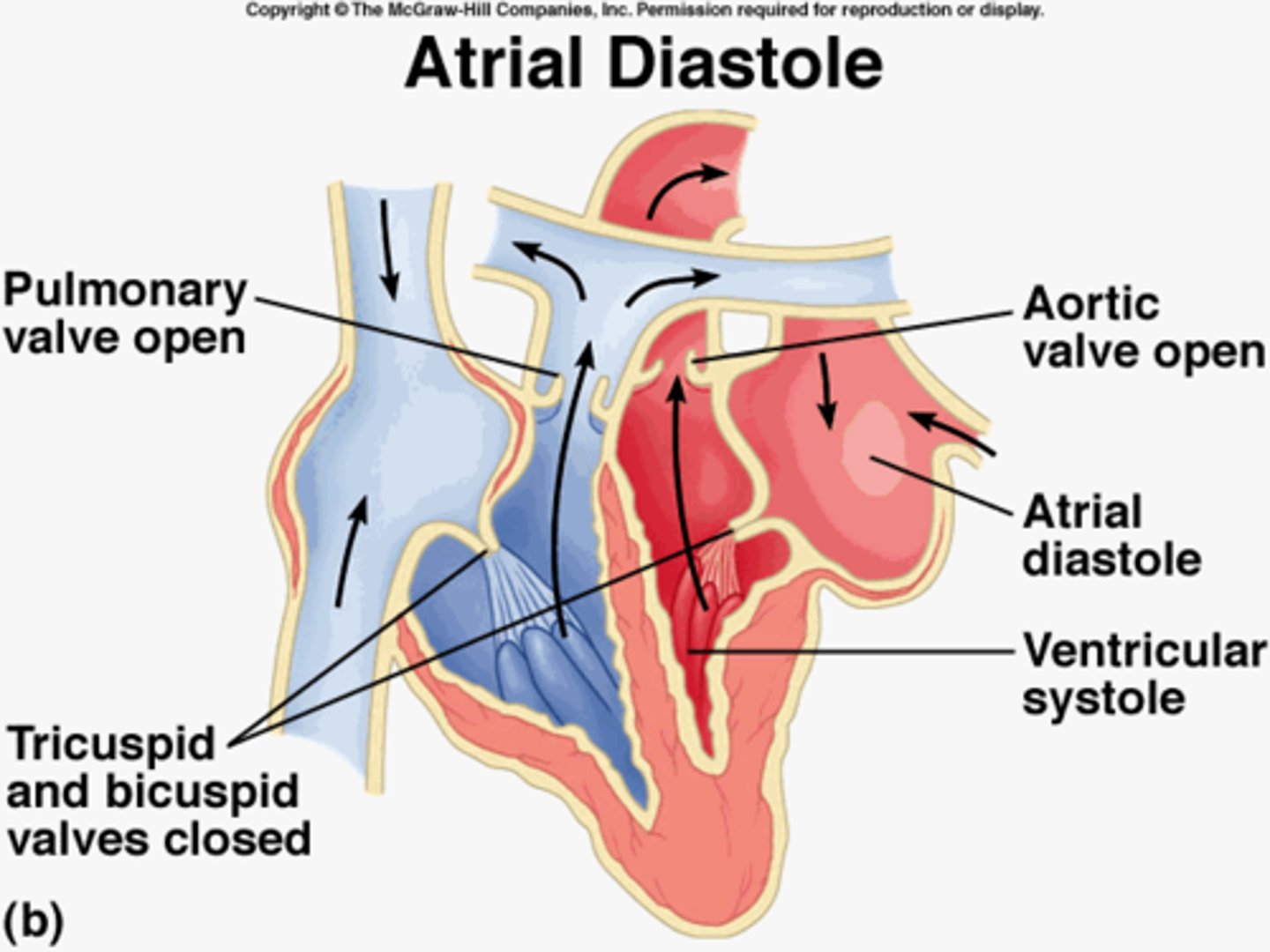
Central Nervous System
Brain and Spinal Cord
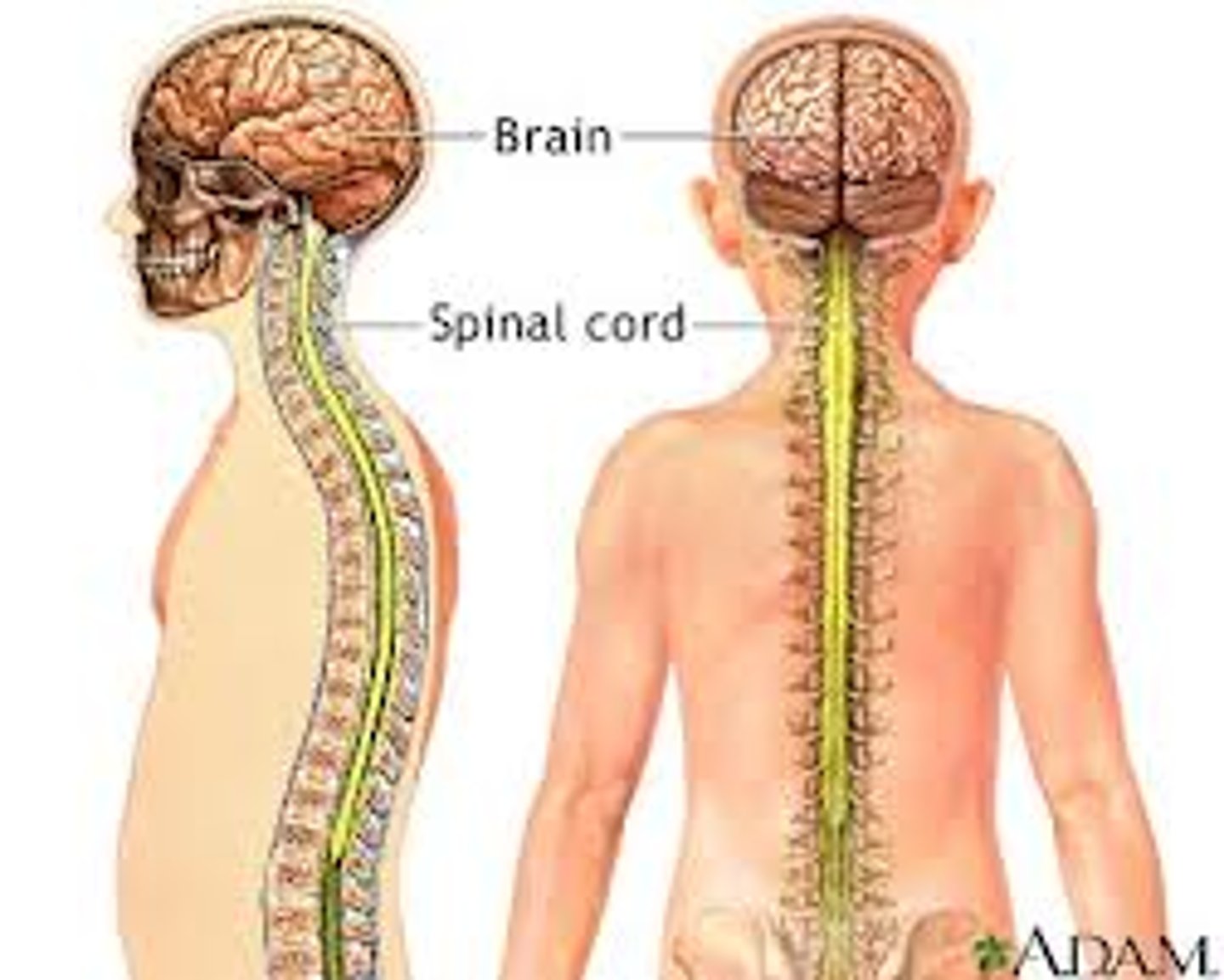
Peripheral Nervous System
Made up that carry messages to and from the central nervous system.
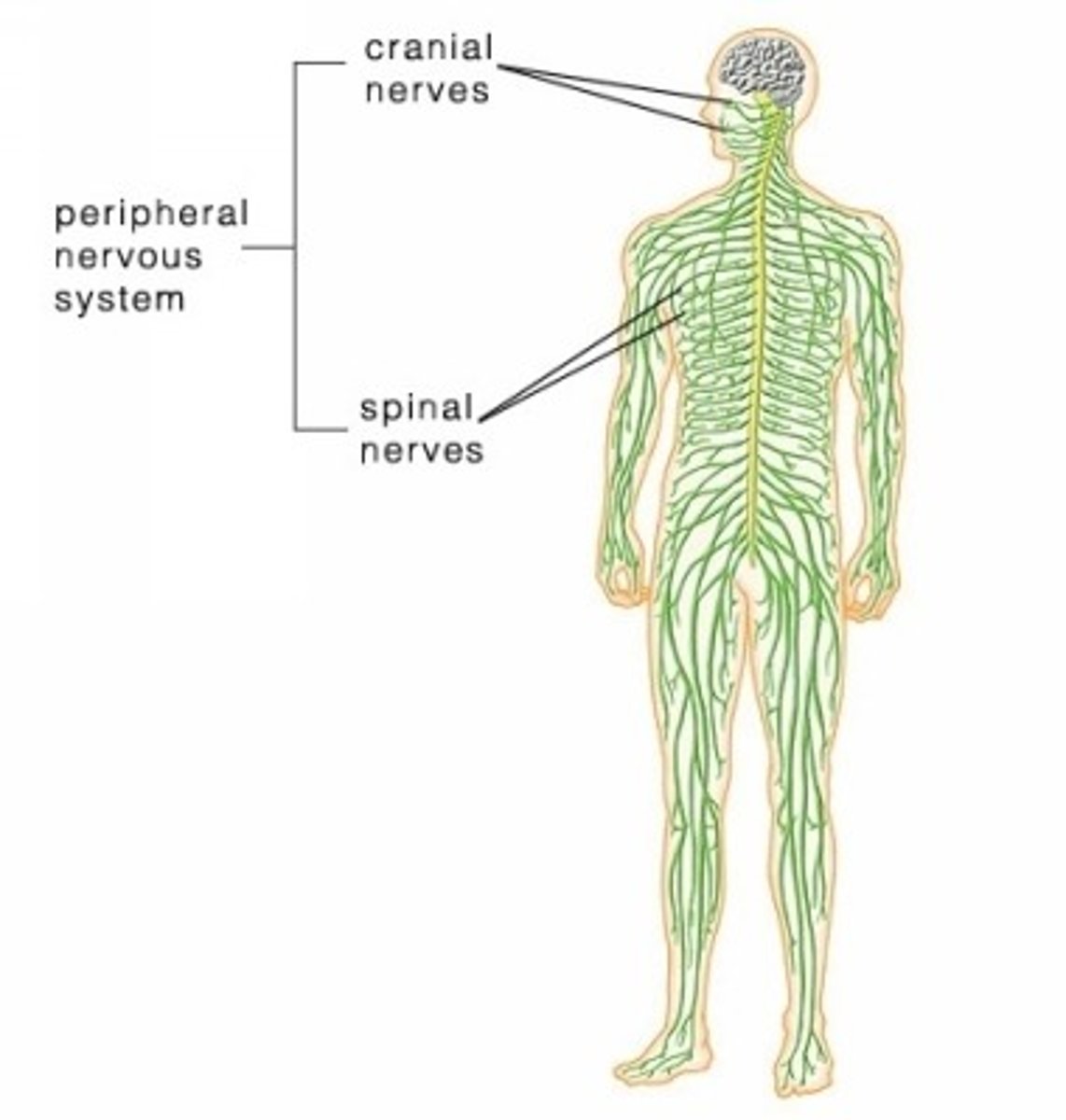
Sympathetic Nervous System
Fight or Flight, Pupils Dilate
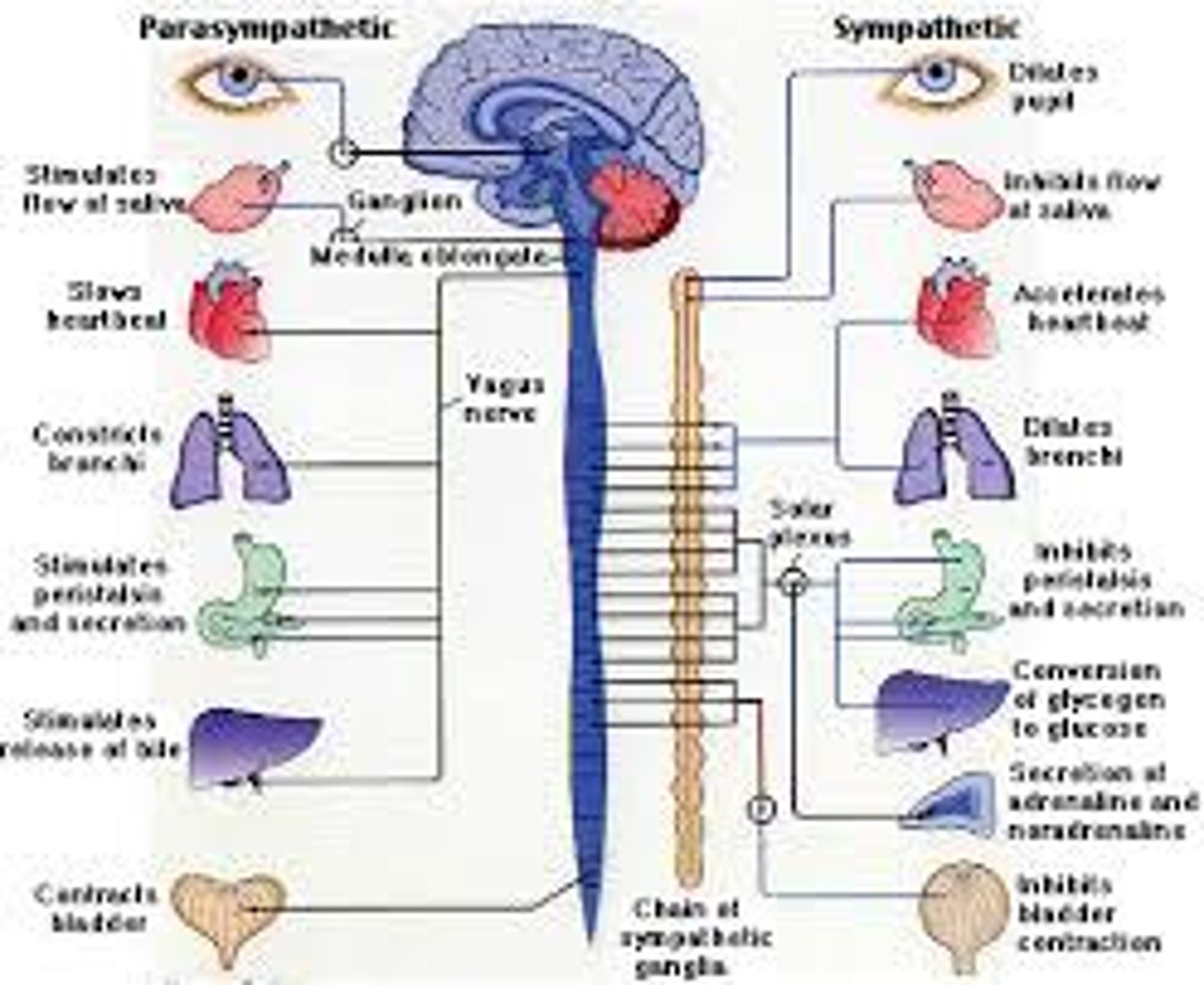
Parasympathetic Nervous System
Conserves energy and slows the heart rate down.
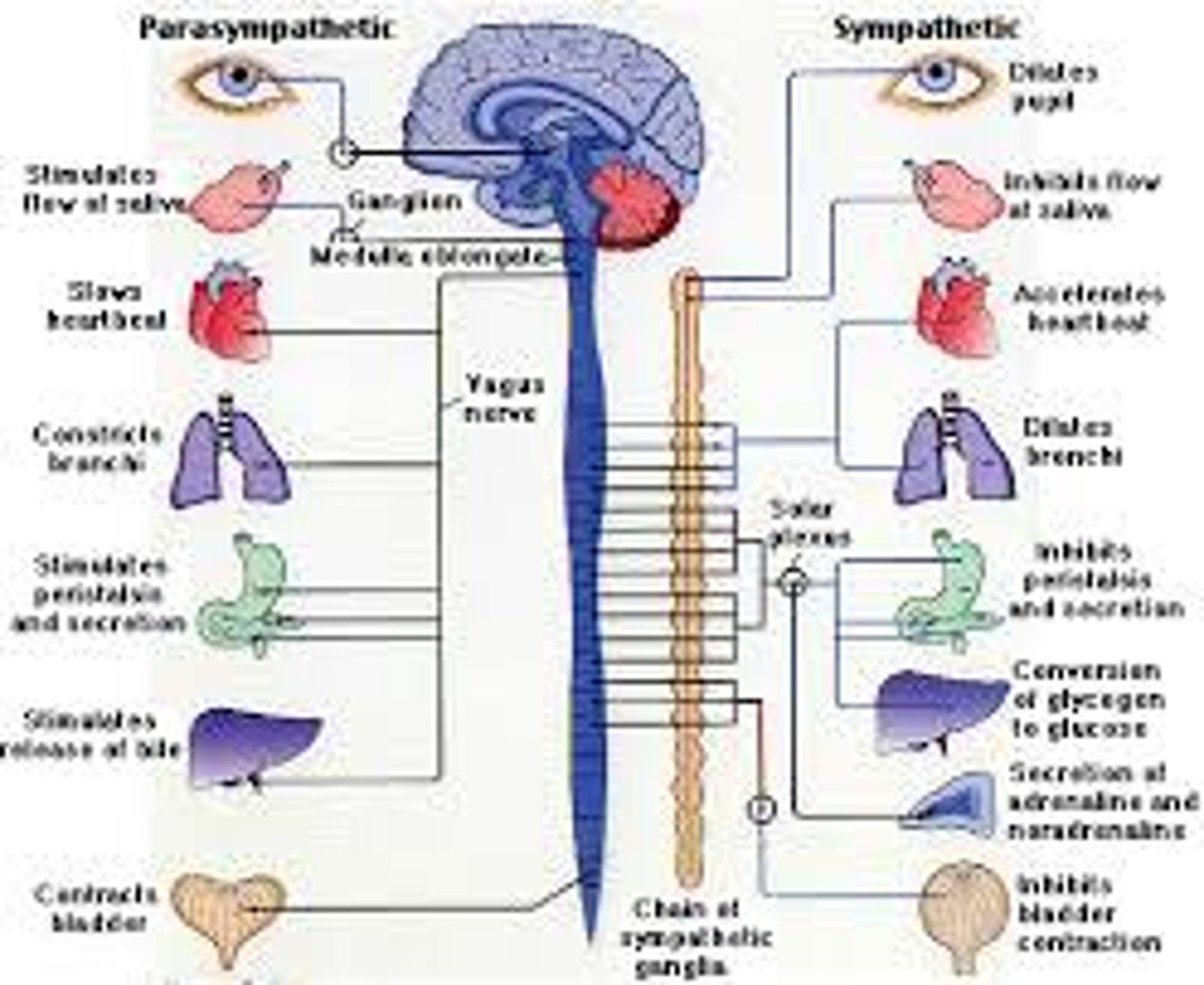
Autonomic Nervous System
Sympathetic and Parasympathetic Nervous System
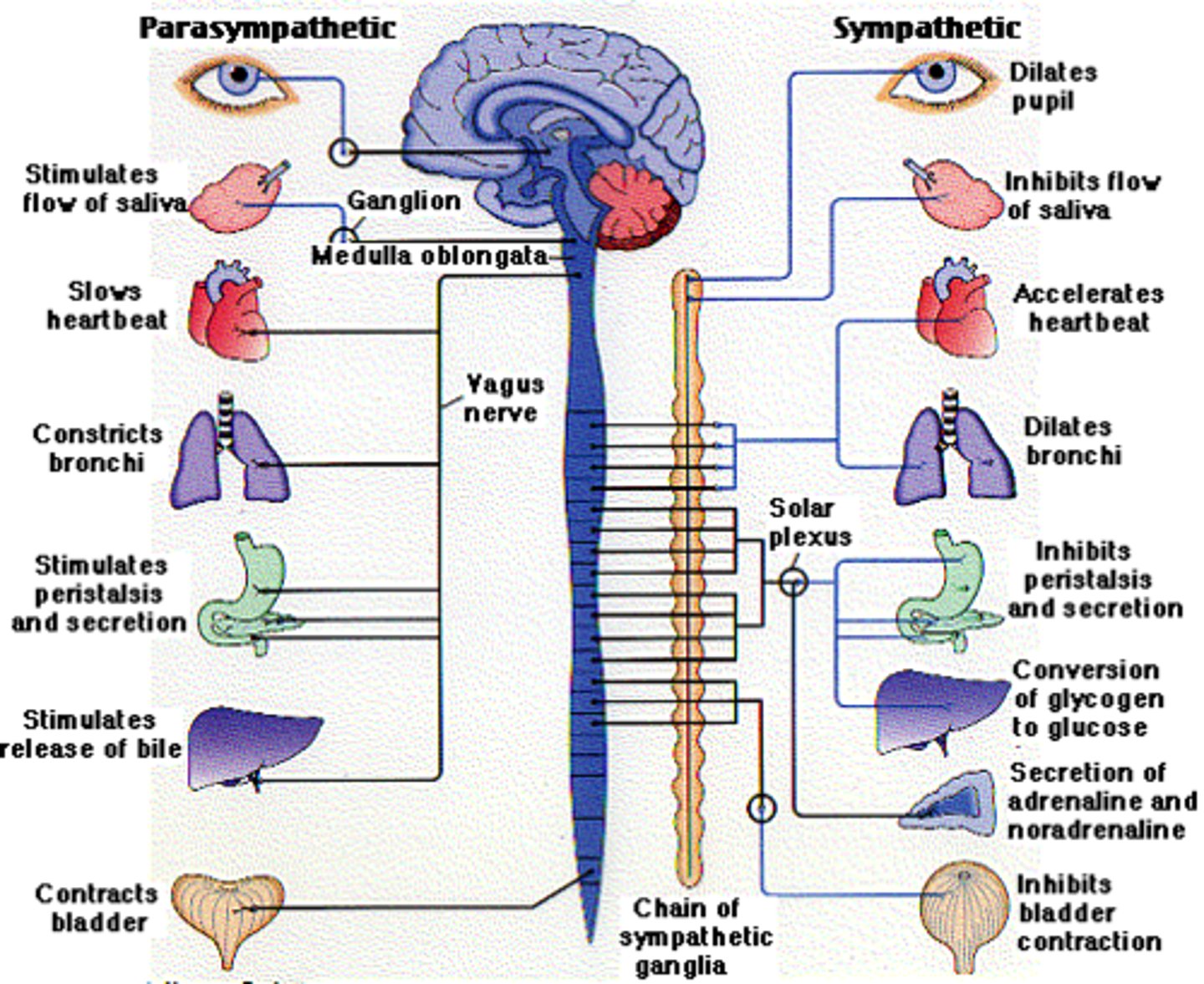
Skin
Largest Organ of the body
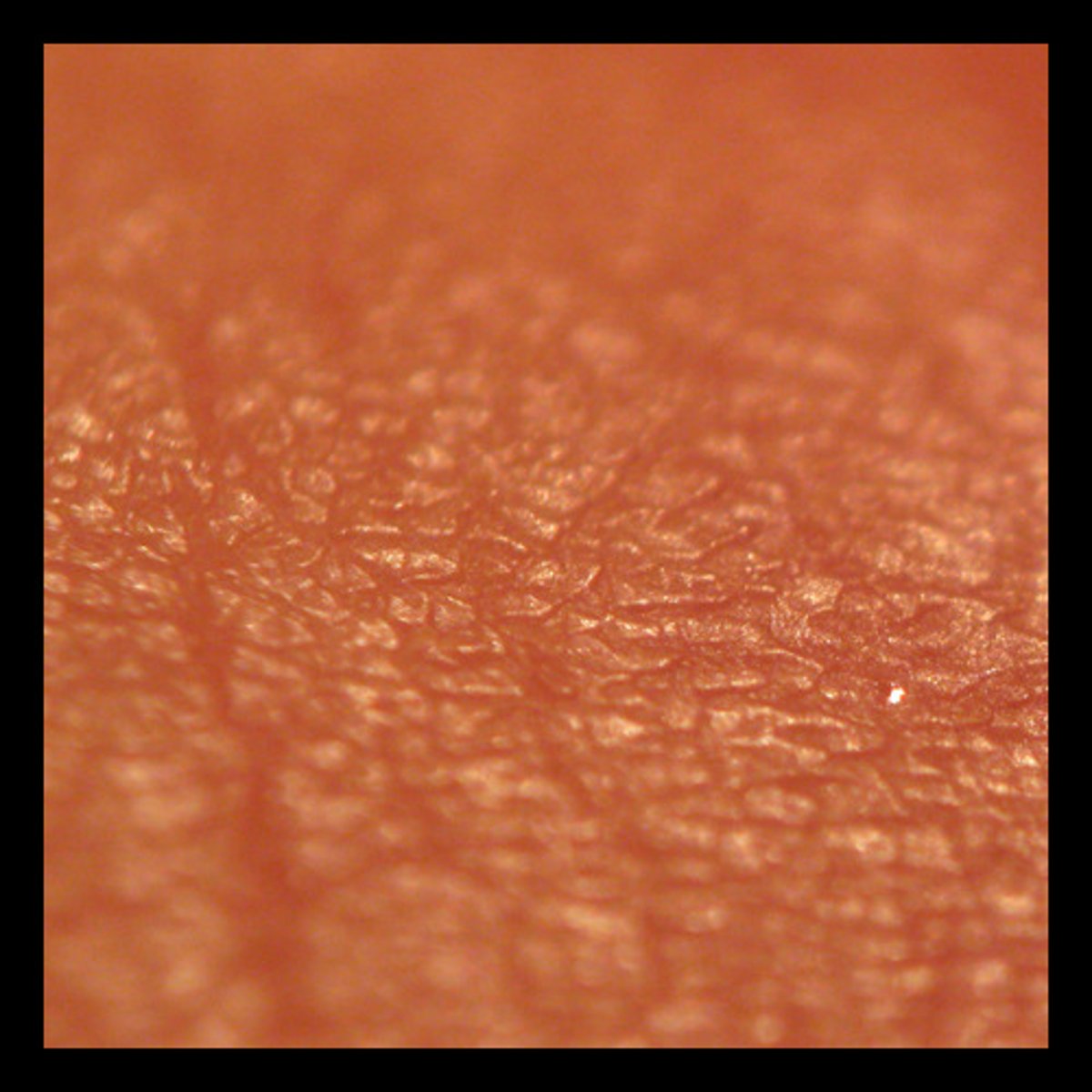
Integumentary System
Skin
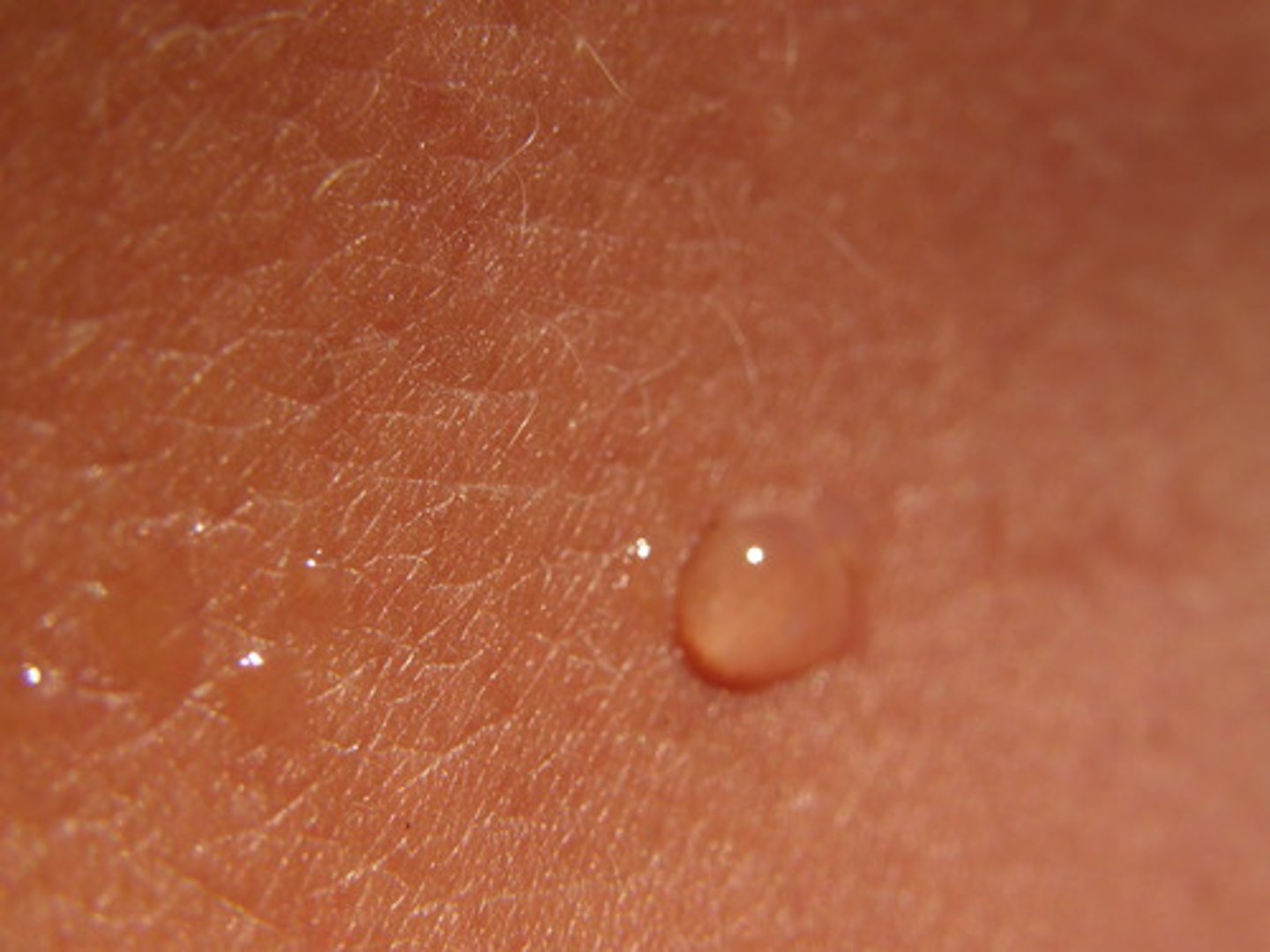
Epidermis
Outermost layer of skin.
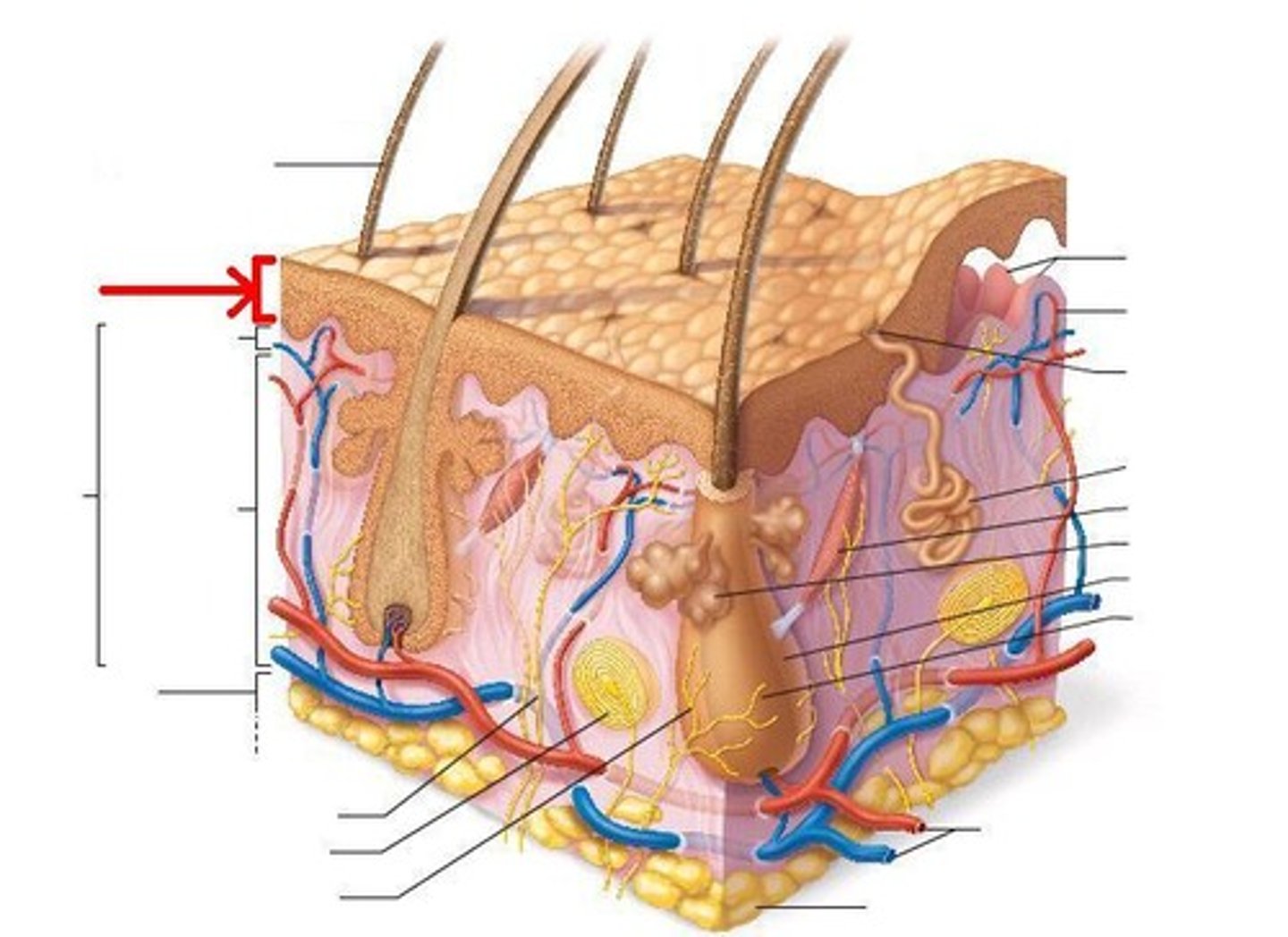
Dermis
Contains sweat glands, Sebaceous glands, hair follicles, blood vessels, nerve endings.
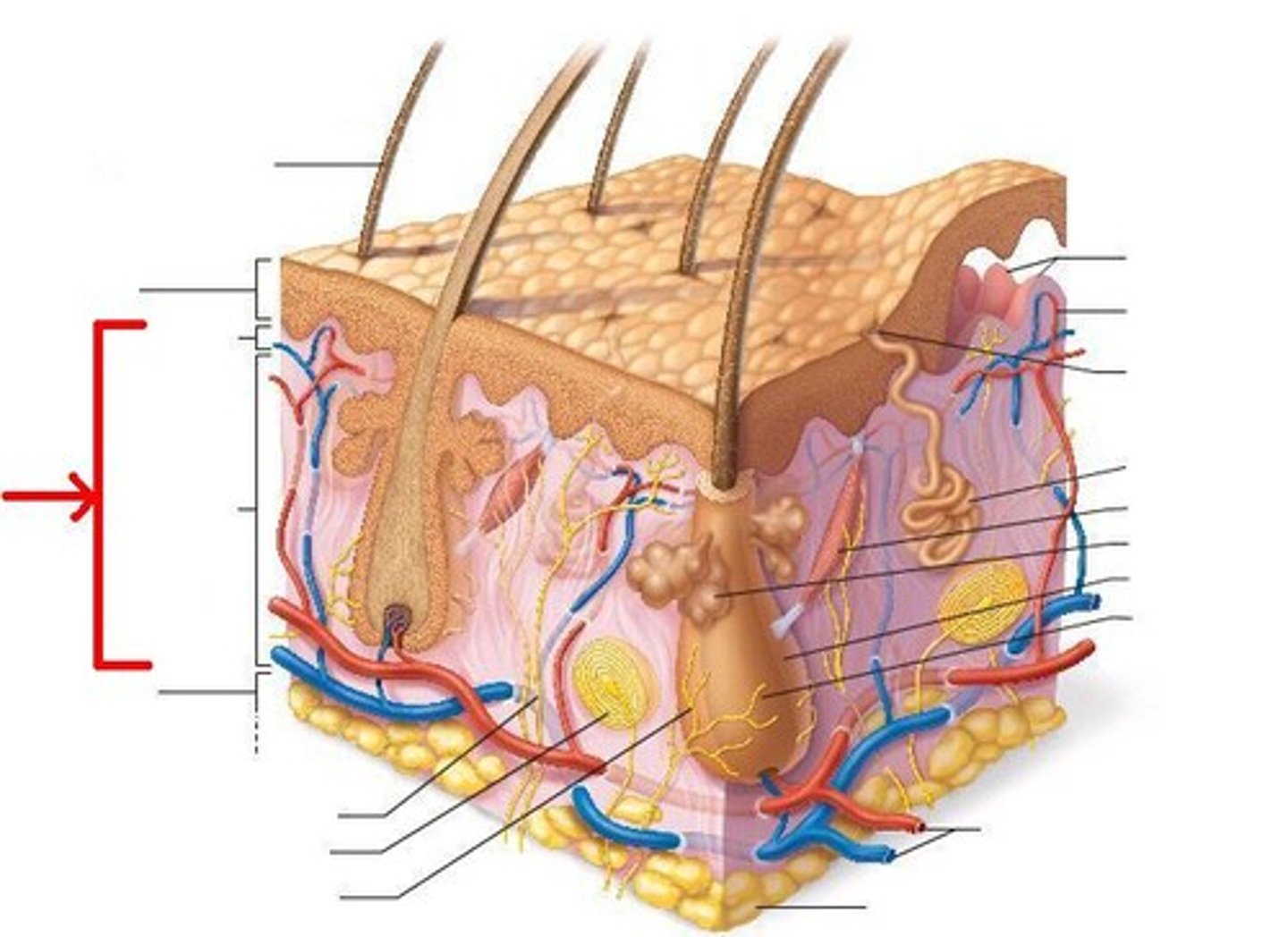
Subcutaneous layer
Made up od adipose (fat) and connective tissue
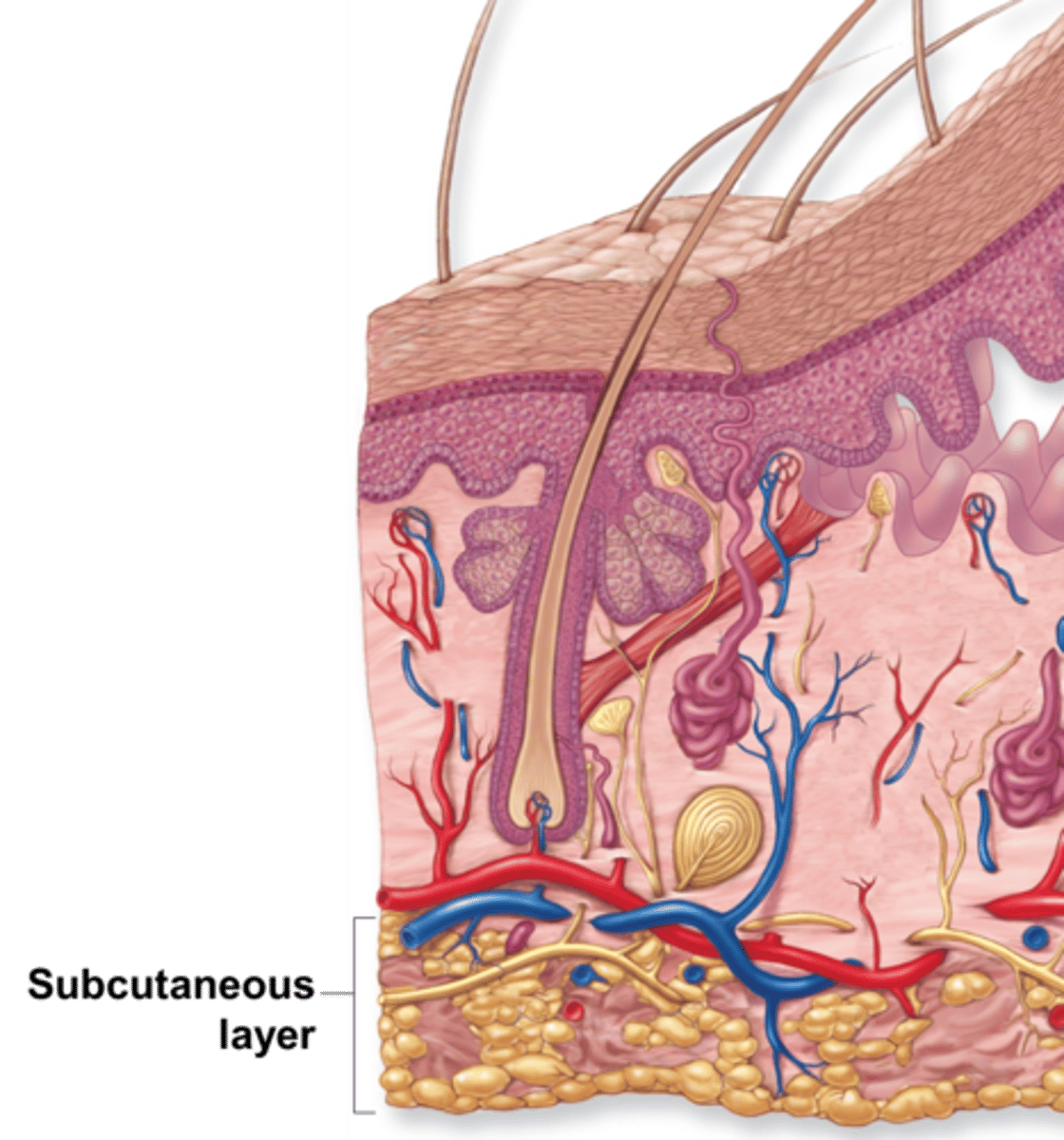
Endocrine System
Secretes Hormones
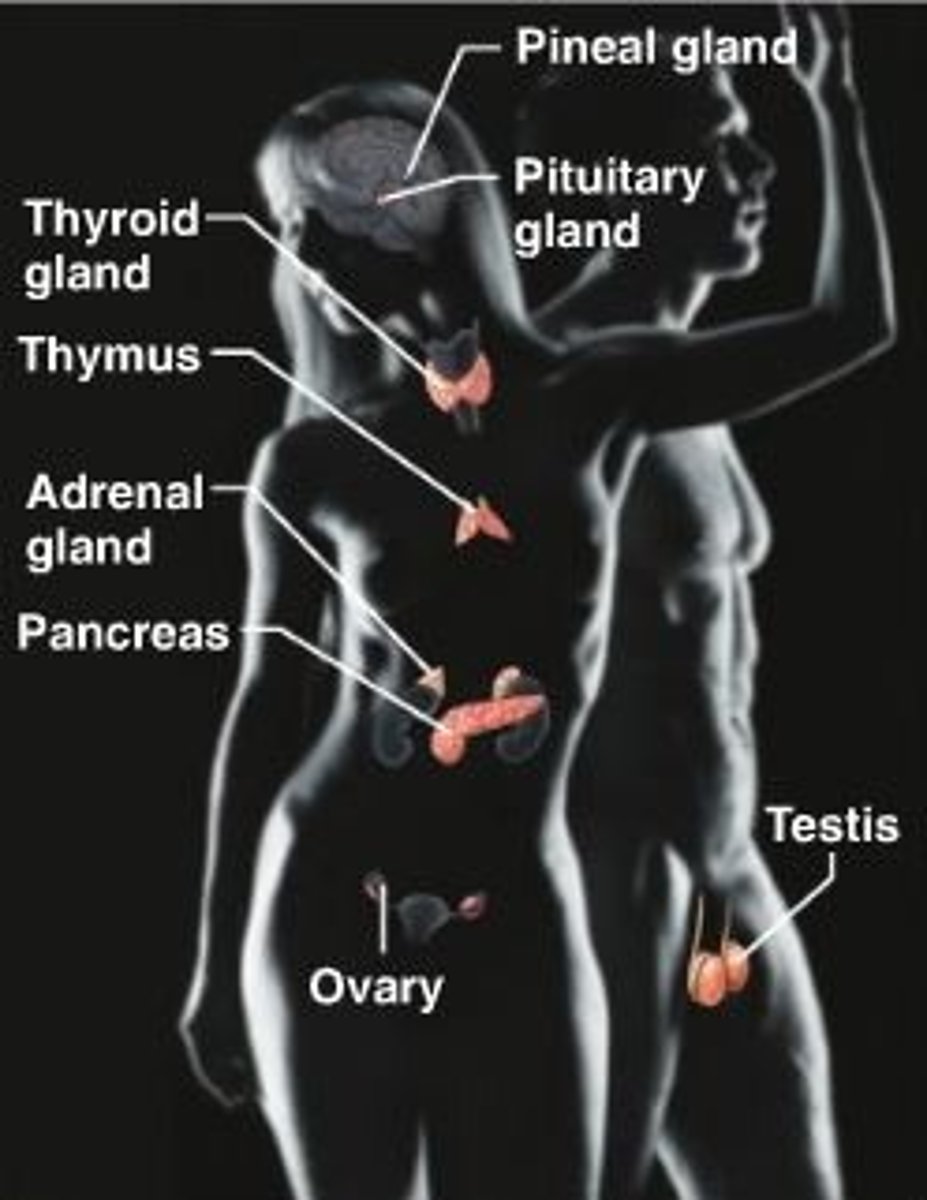
Anatomy
Study of the body parts visble to the naked eye
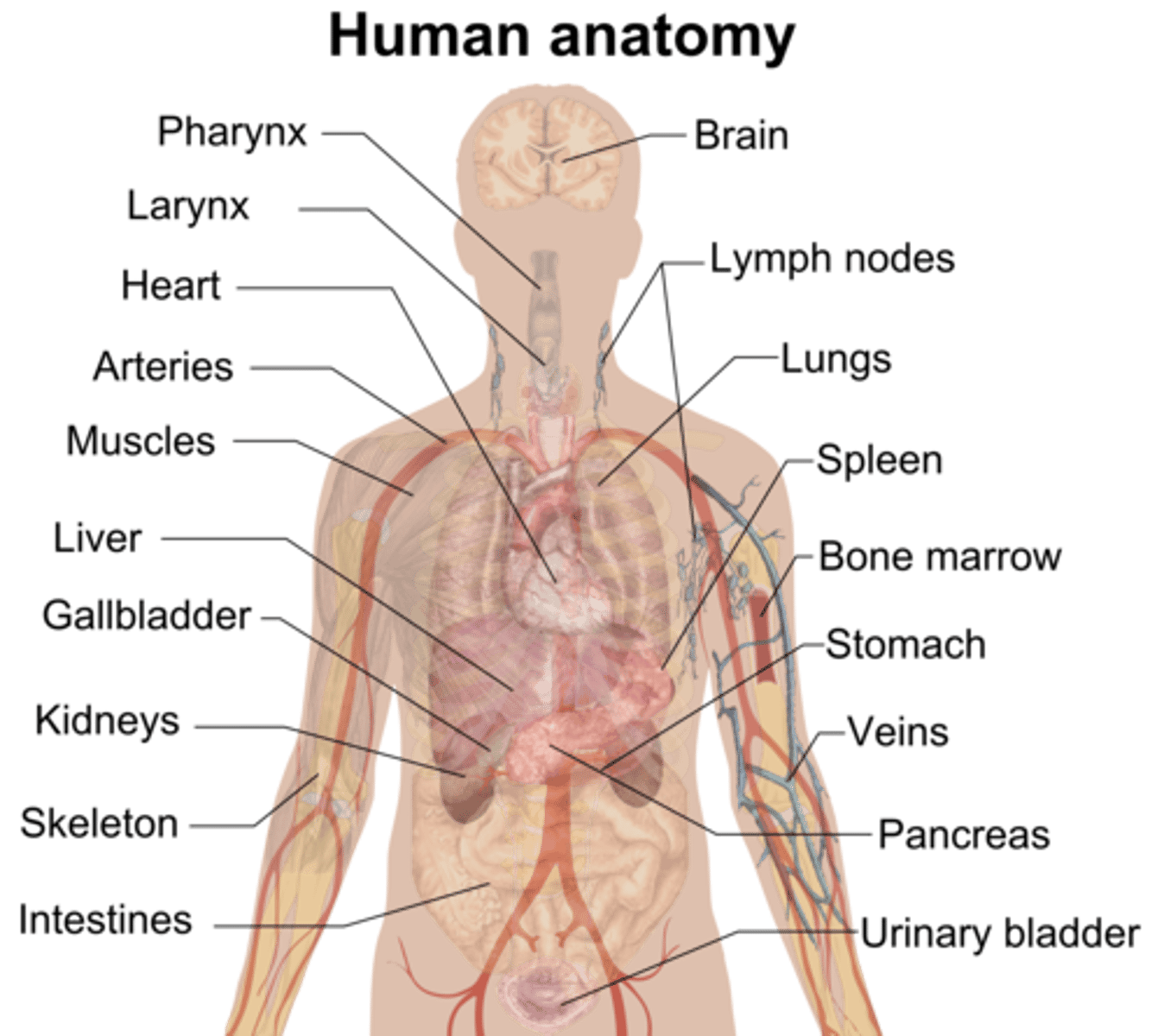
Physiology
Study of the function of body parts
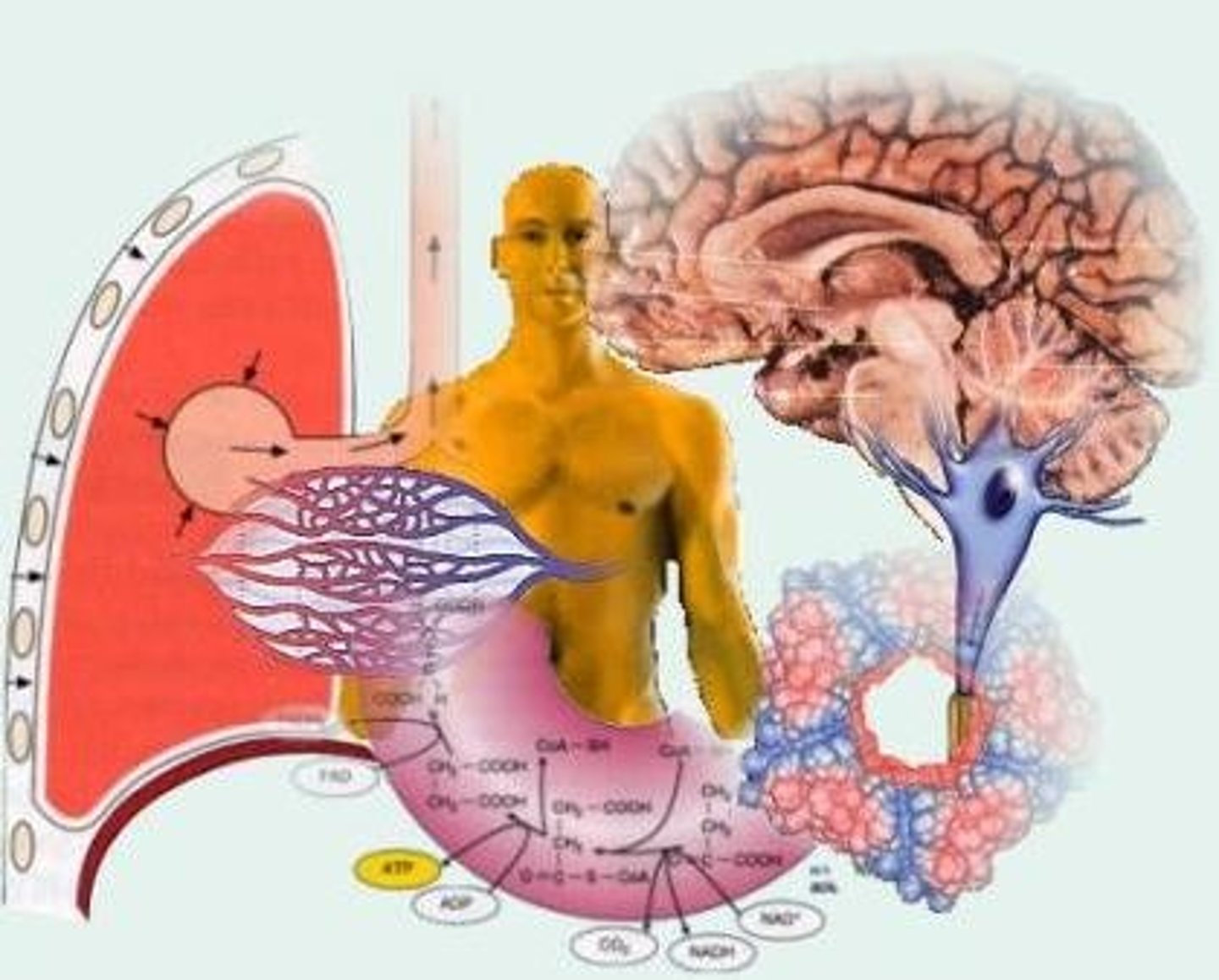
Colon
Reabsorbs water and stores feces
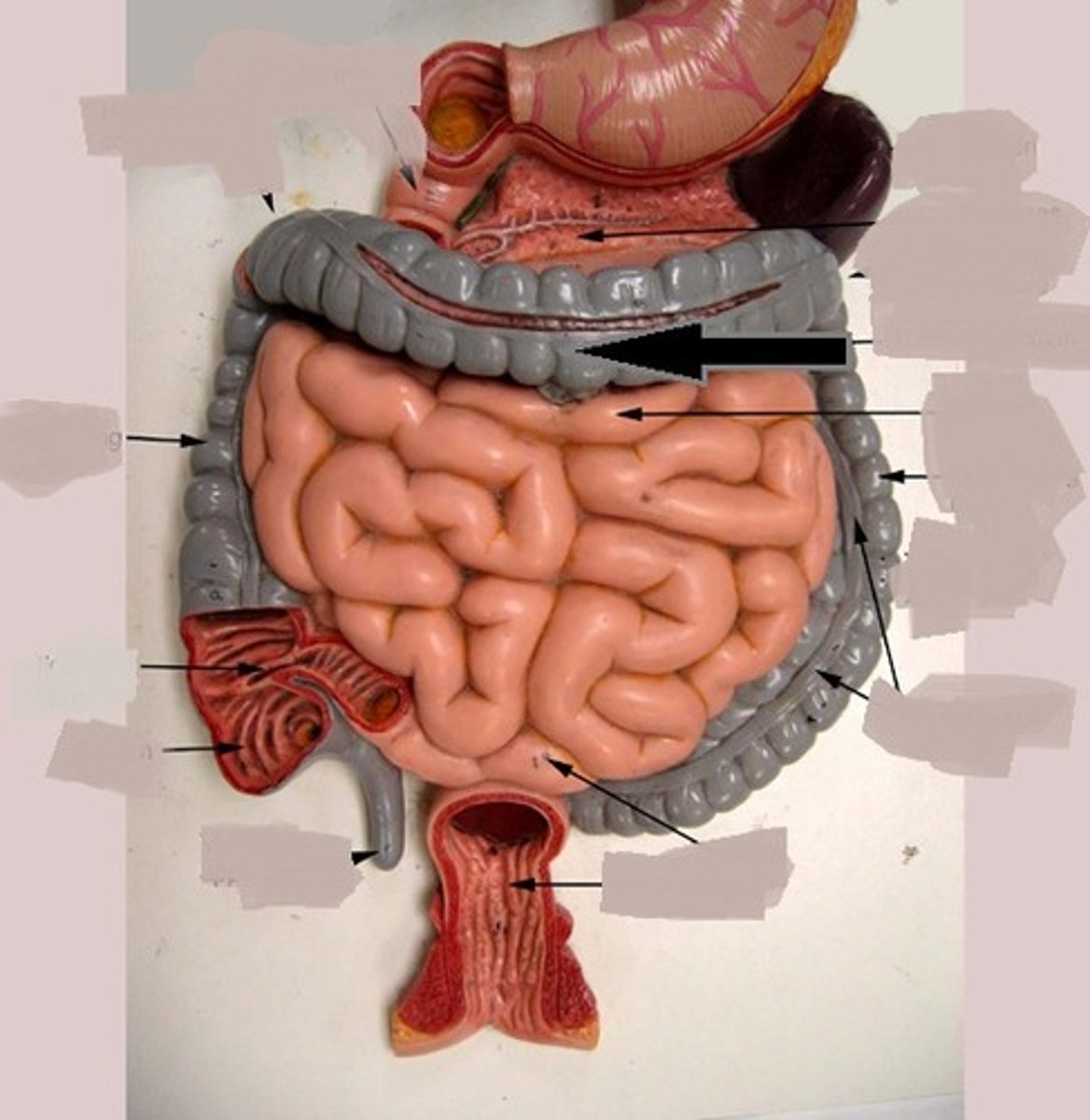
Anatomical Position
Standing erect, facing forward with arms to the side with palms out.
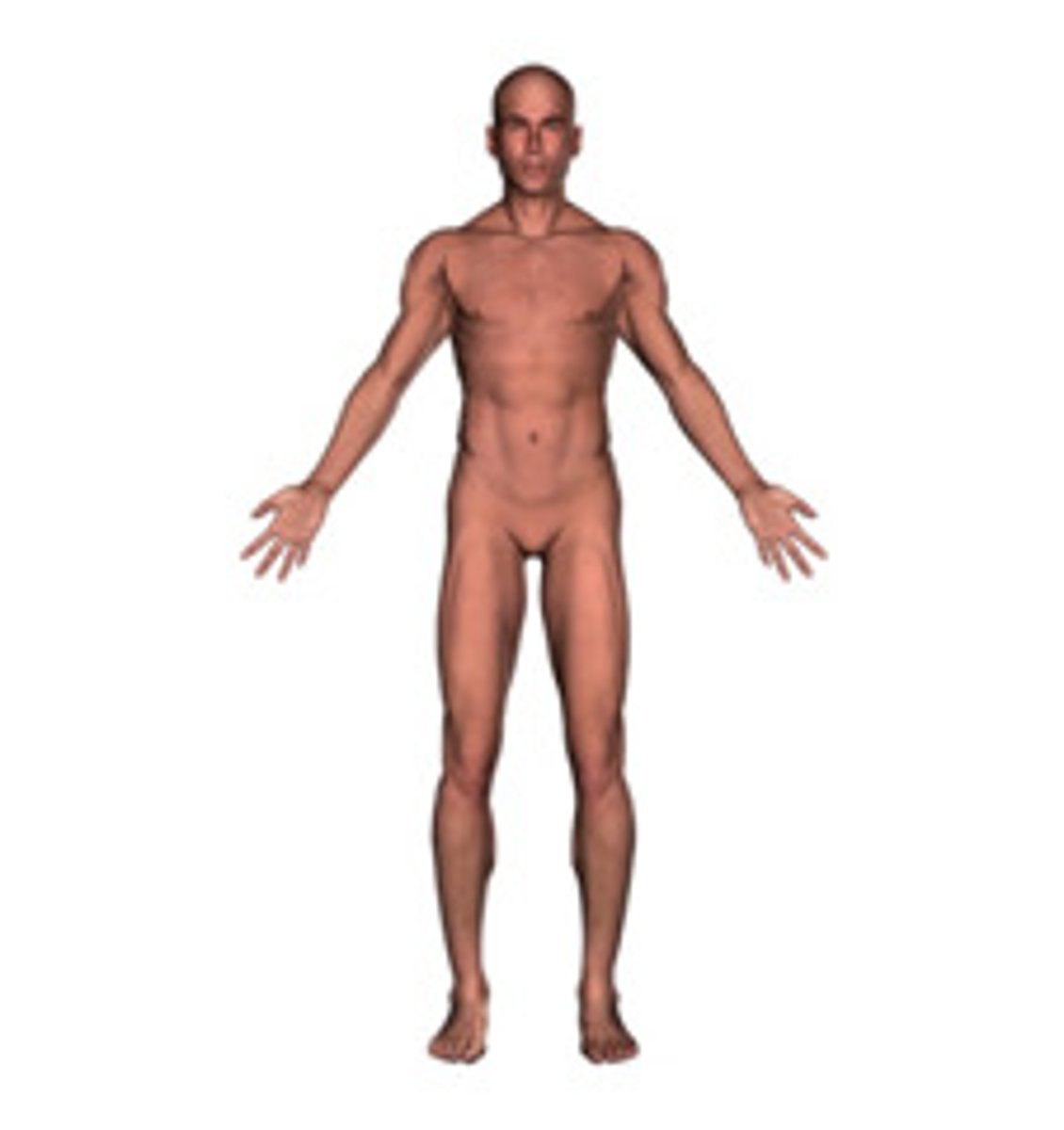
Lateral
To the side of the body
Anatomical Planes
Imaginary divisions of the body
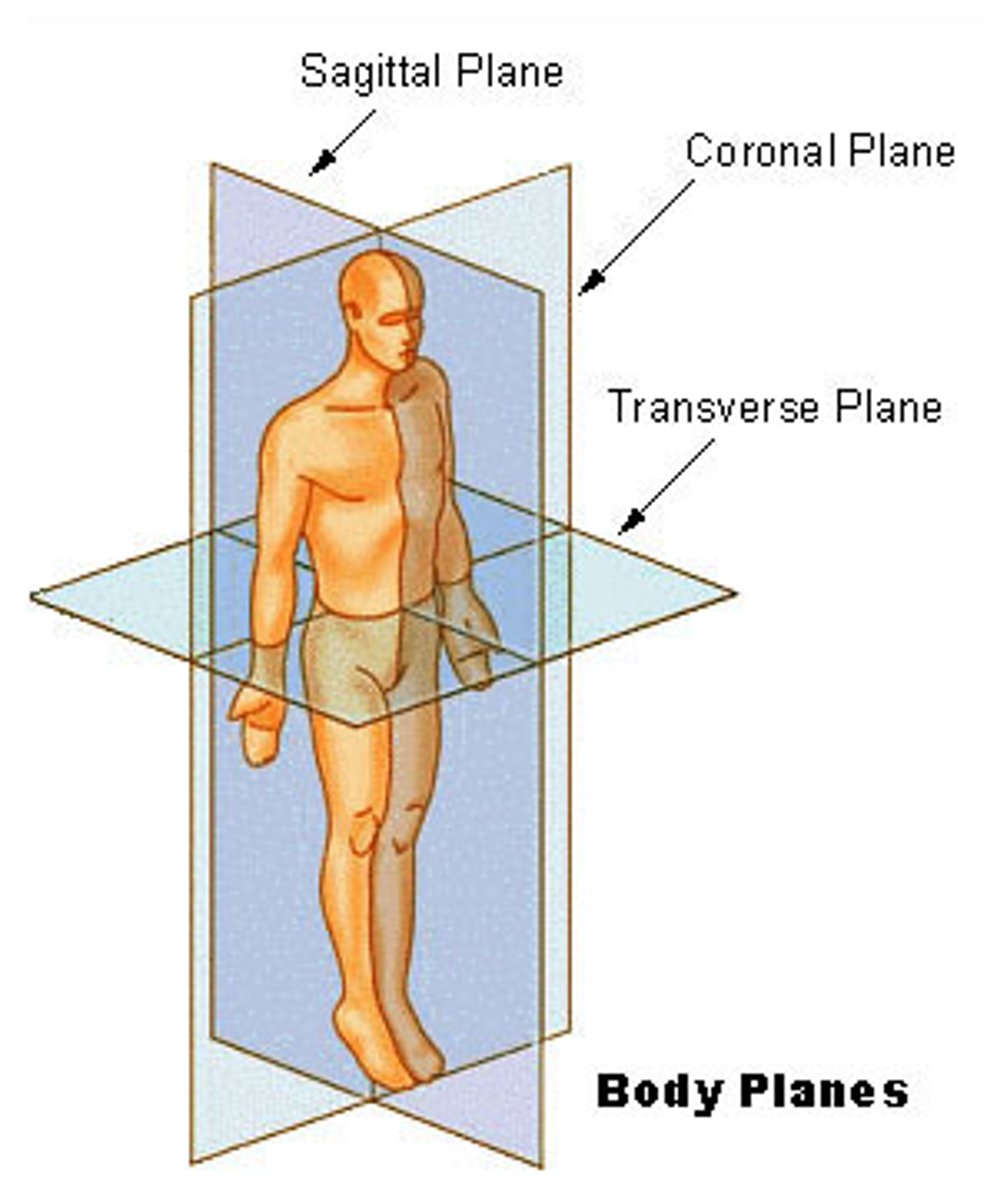
Sagittal Plane
Also known as the median plane, is a vertical plan that runs length wise and divides the body into right and left segments.
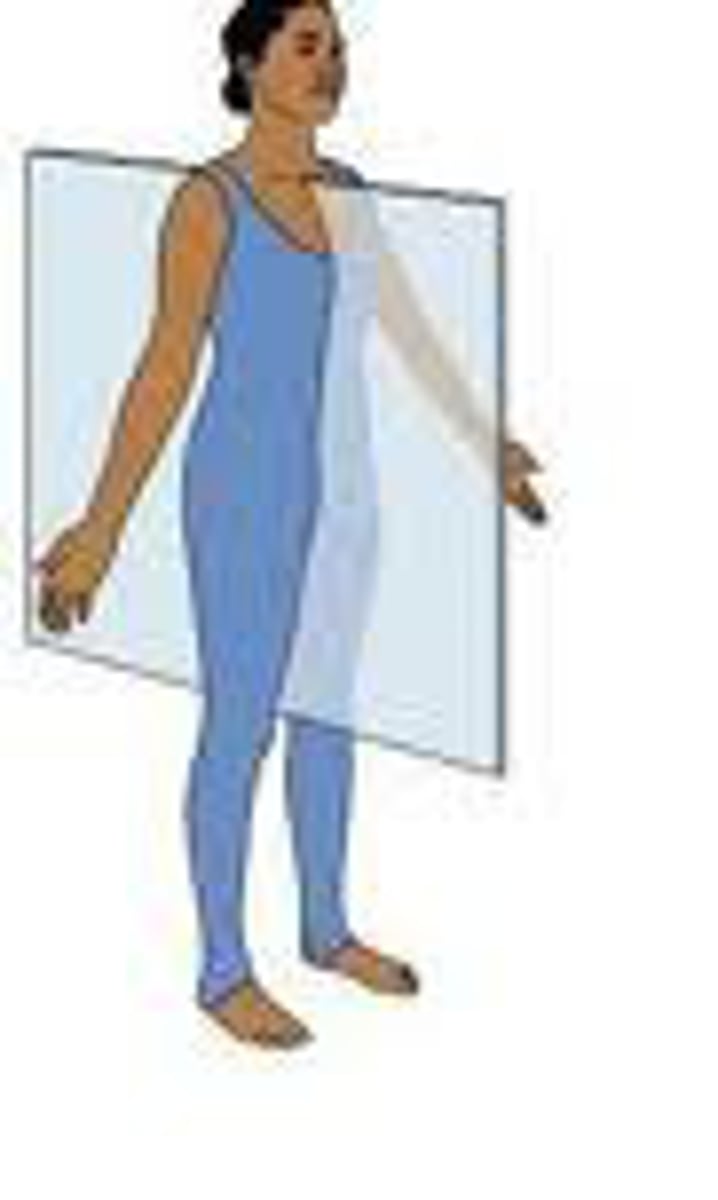
Frontal Plane
Also known as the coronal plane, divides the body into front and back halves.
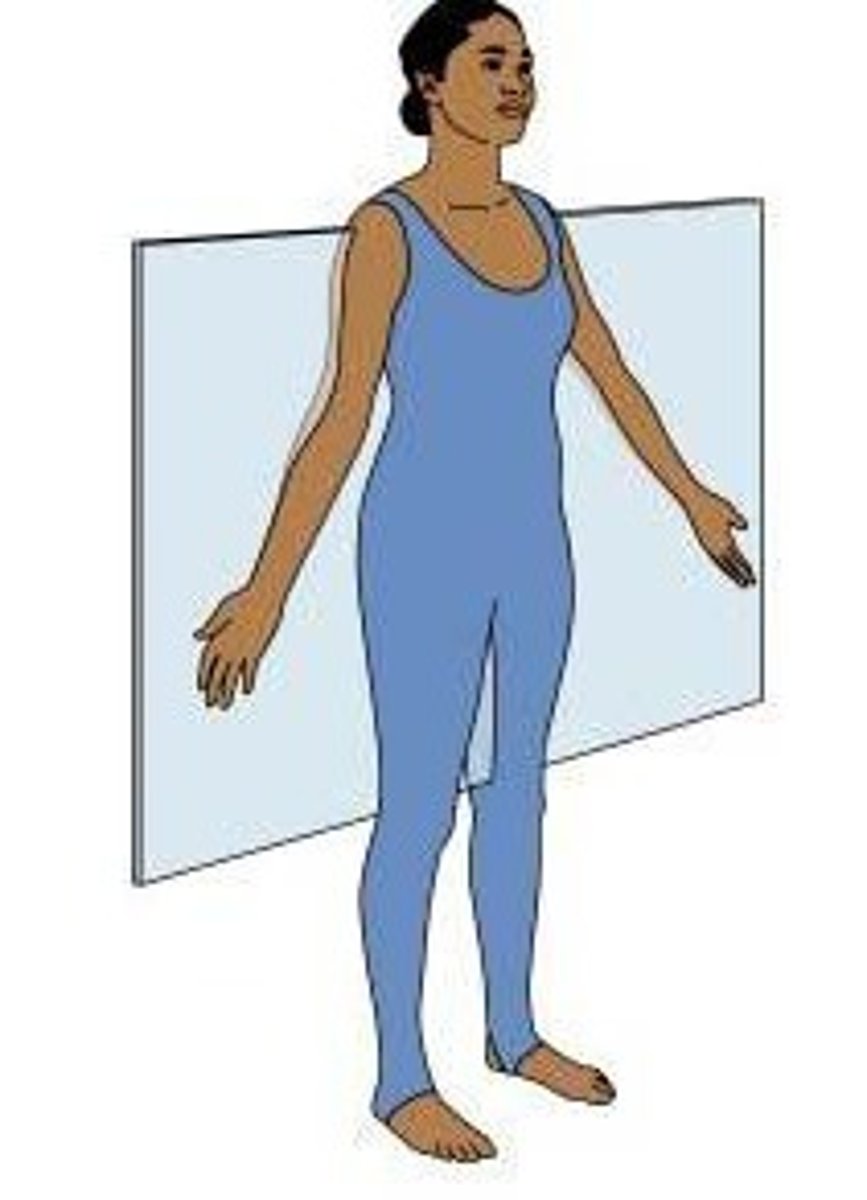
Transverse Plane
Also known as the horizontal plane, parallelel to the ground and divides the body into upper and lower halves
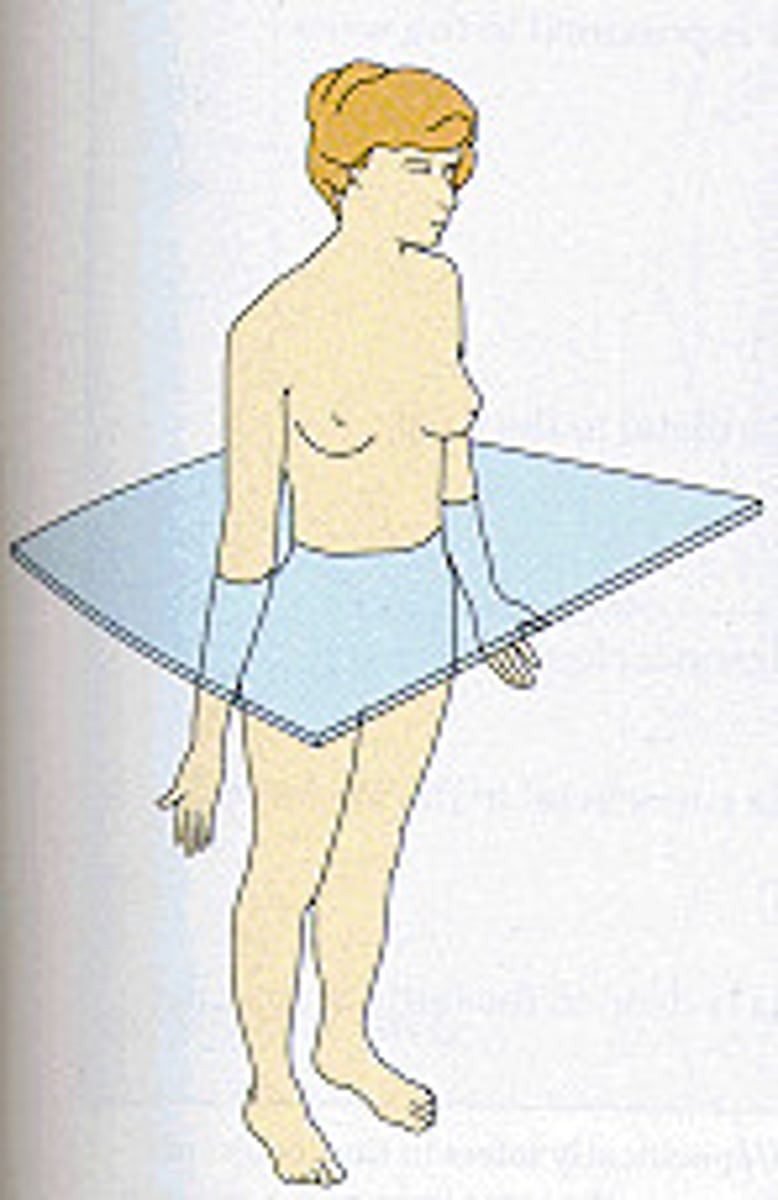
Midline
An imaginary line drawn vertically in the middle of the body.
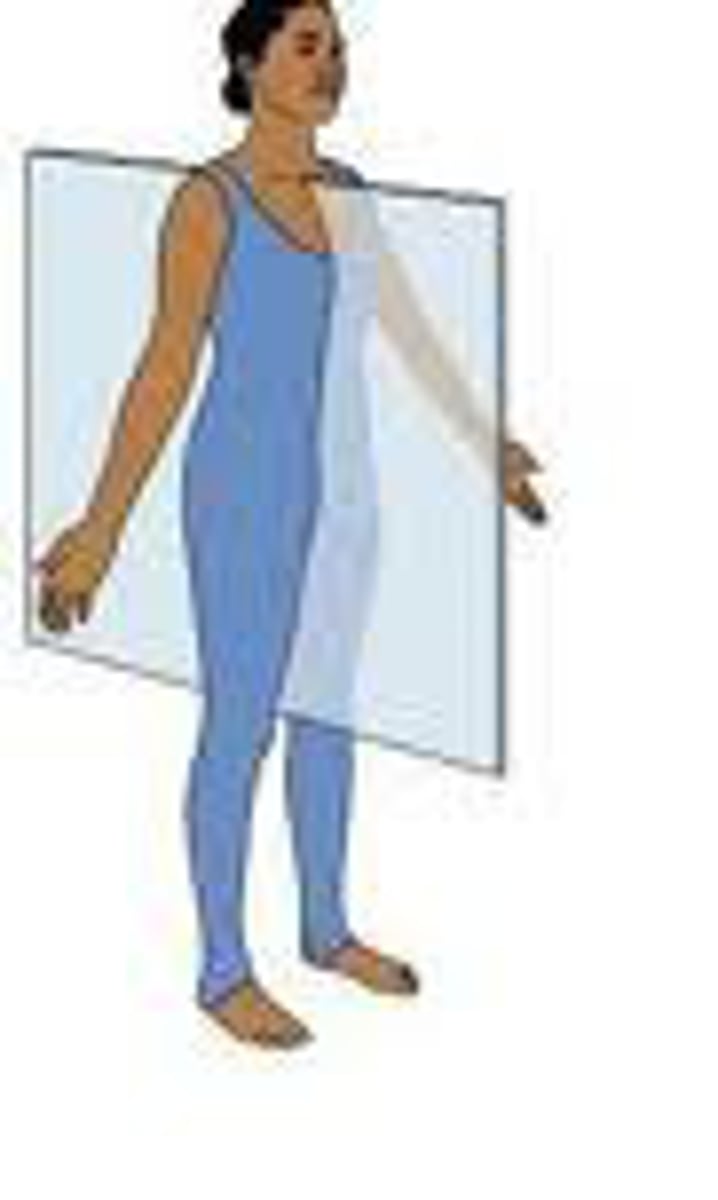
Midaxillary line
A line drawn from the armpit down to the ankle
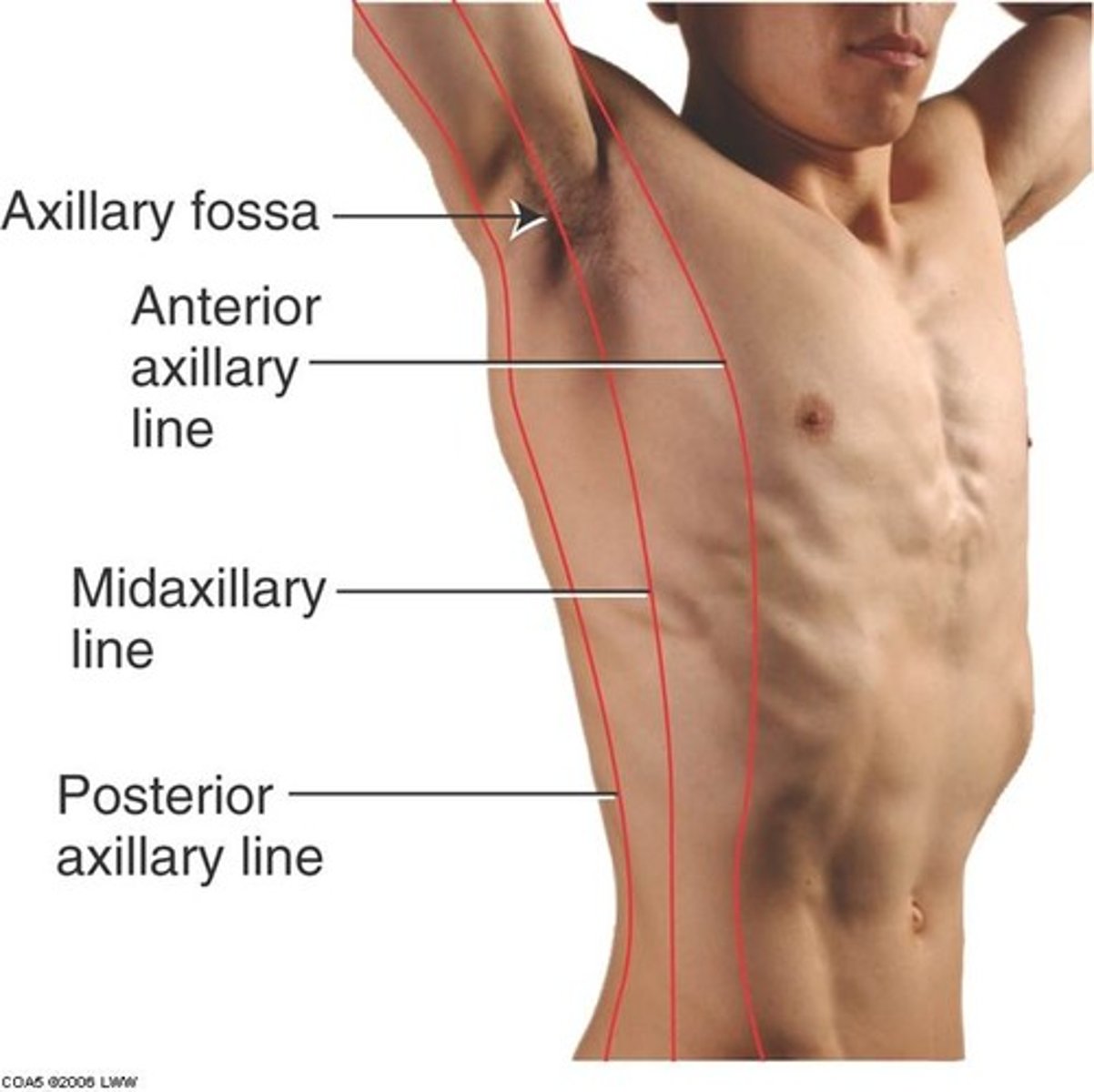
Anterior
Toward the front of the body.
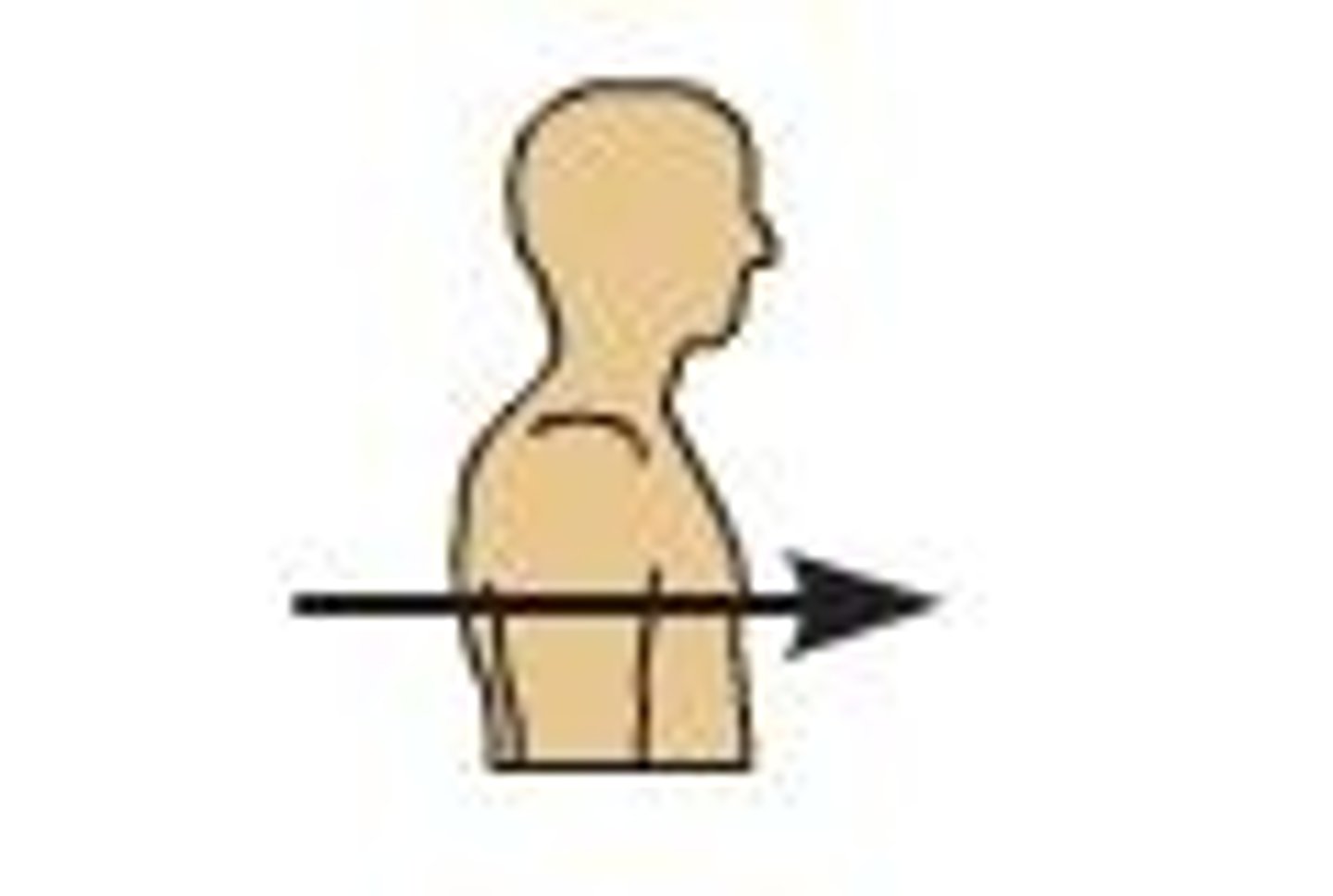
Posterior
Toward the back of the body
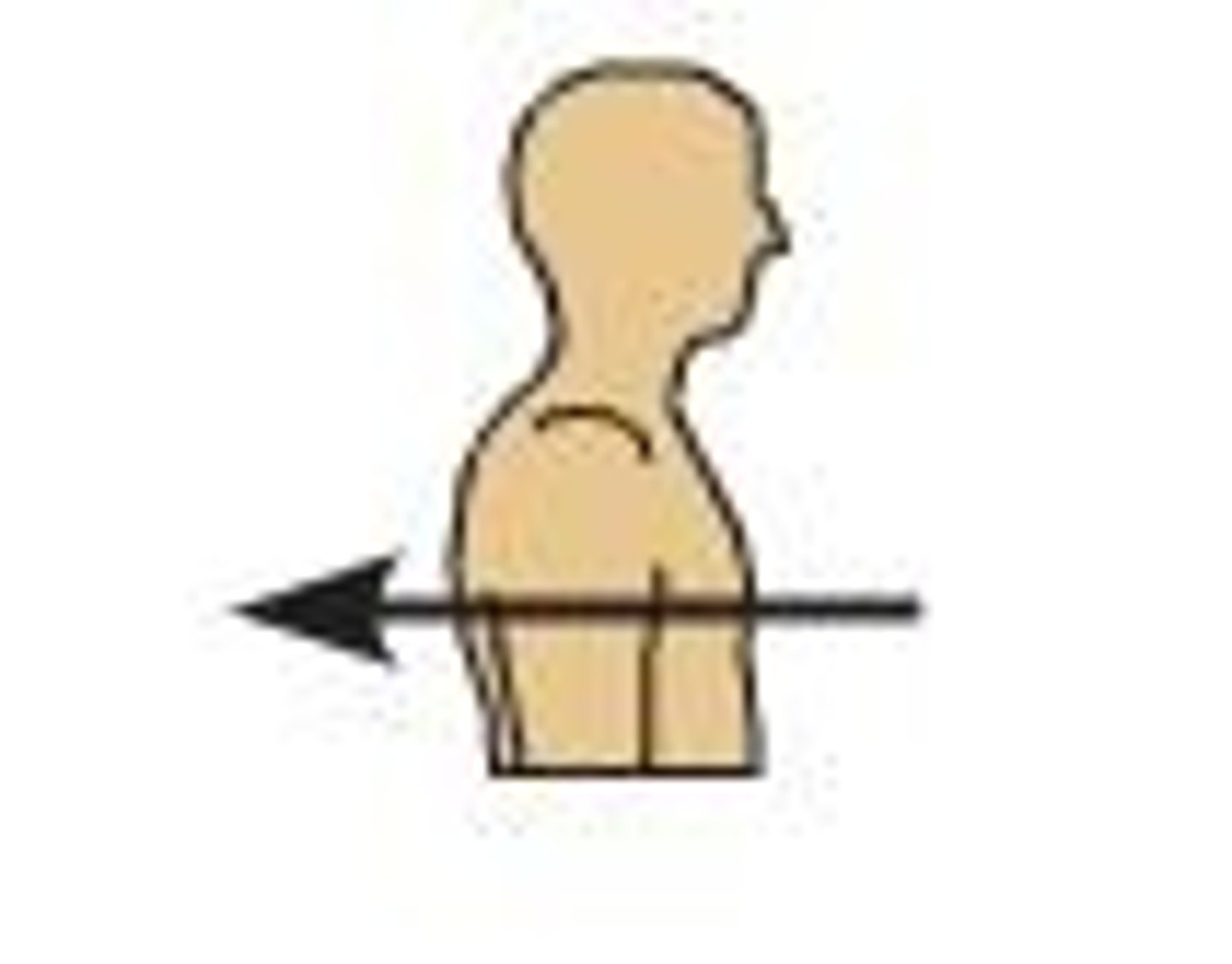
Ventral
Another word for anterior
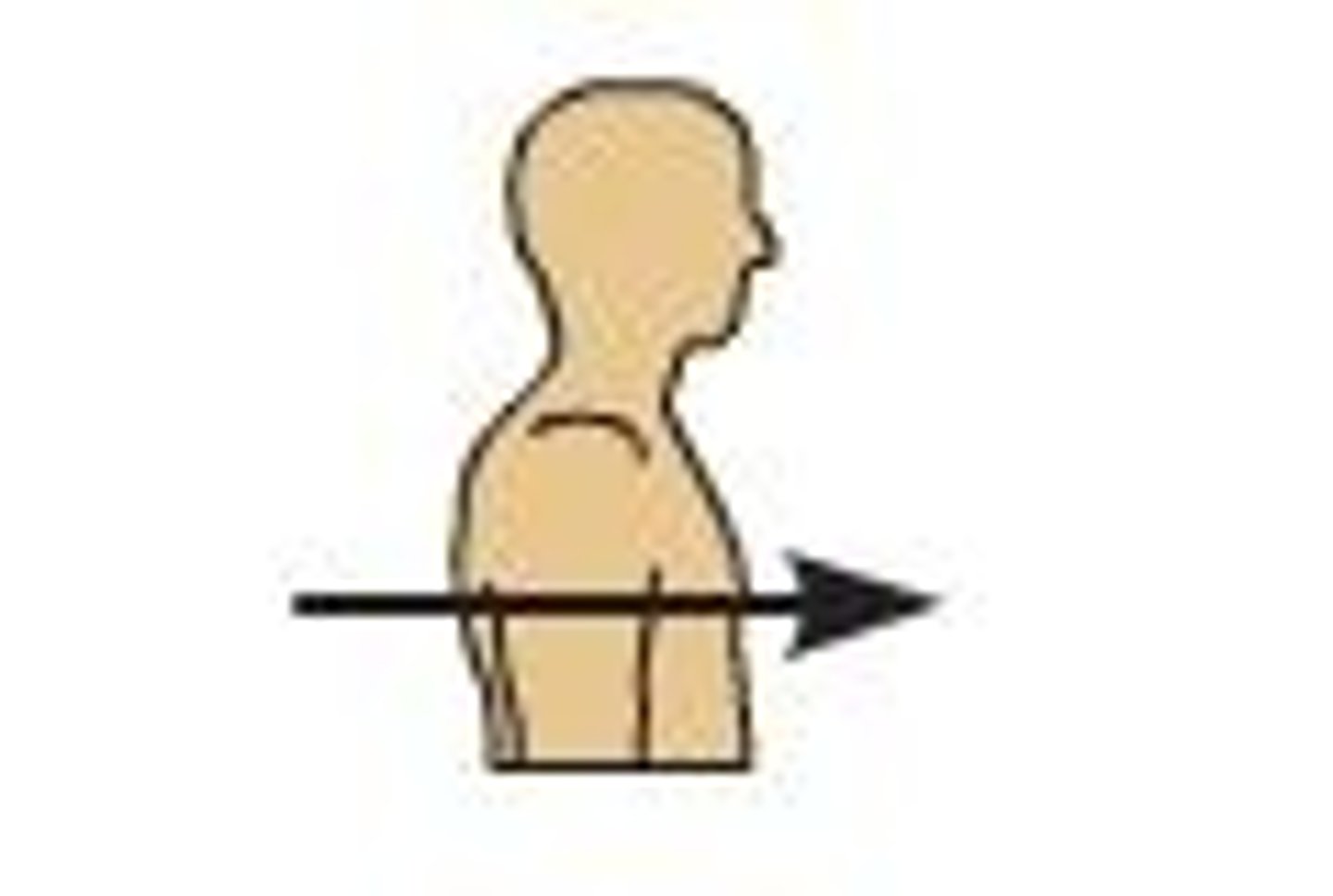
Dorsal
Another word for posterior
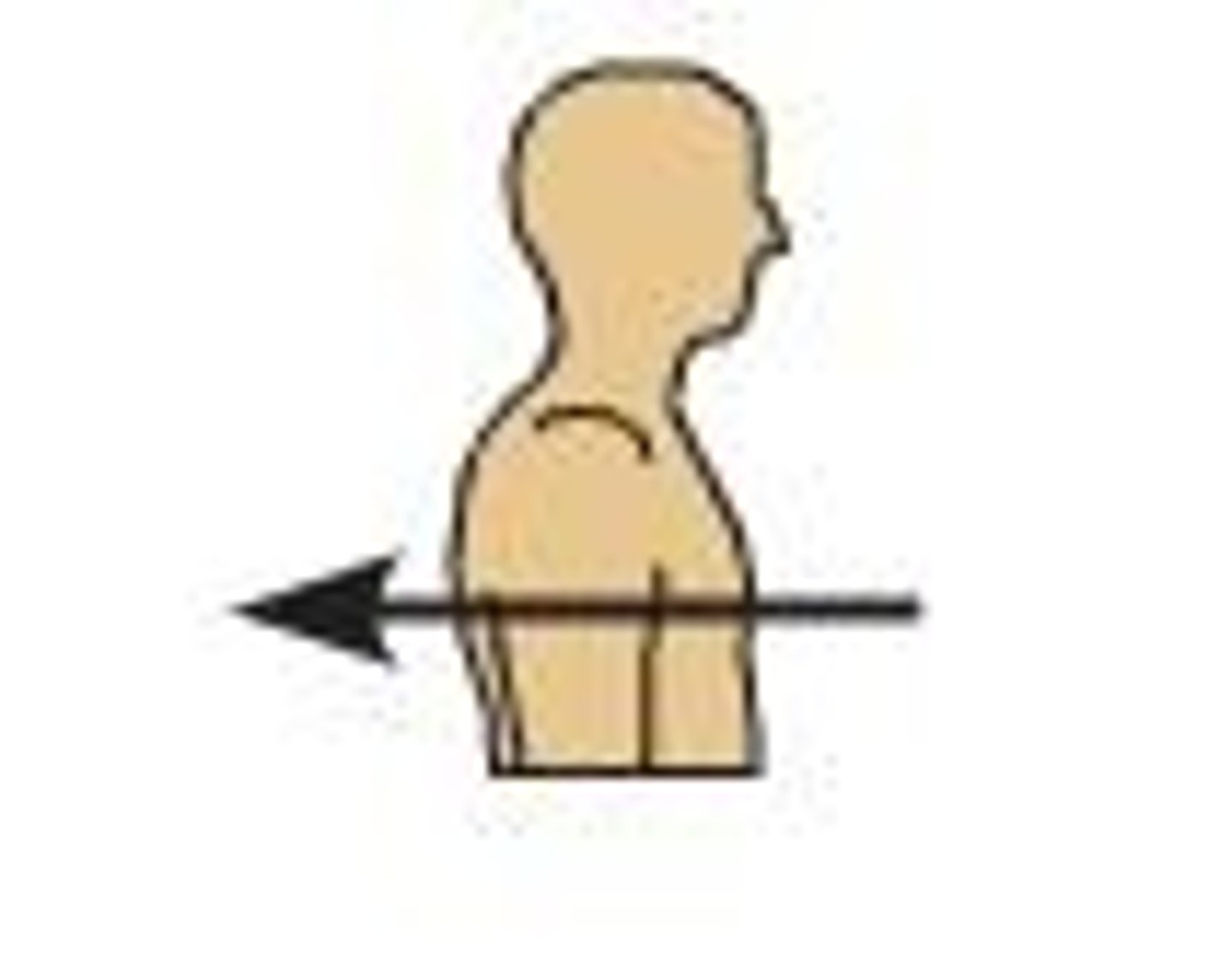
Bilateral
Refers to both sides
Proximal
Toward the torso or trunk

Distal
Away from the torso or trunk
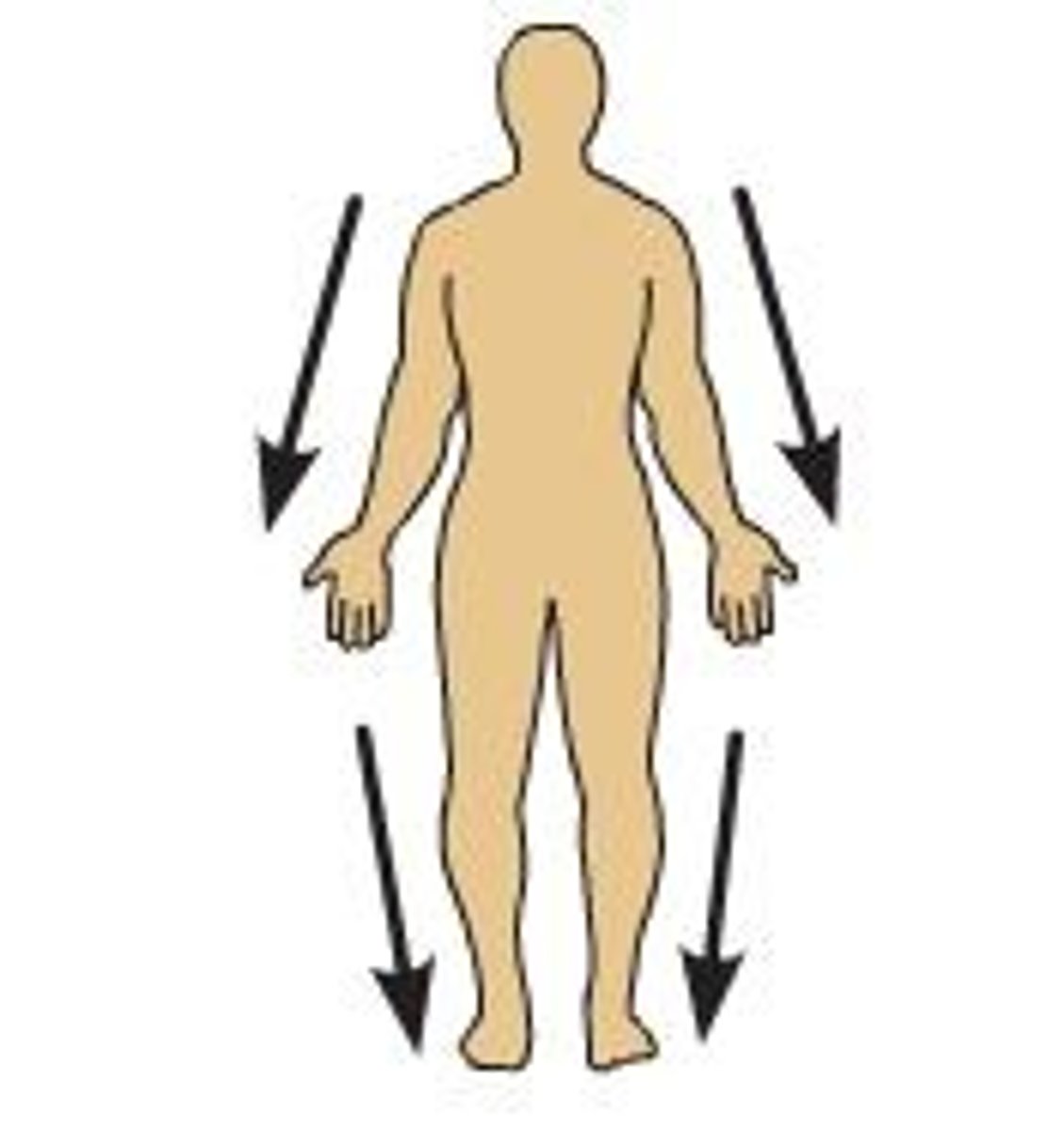
Musculoskeletal System
Bony framework held together by layers of muscle and ligaments.
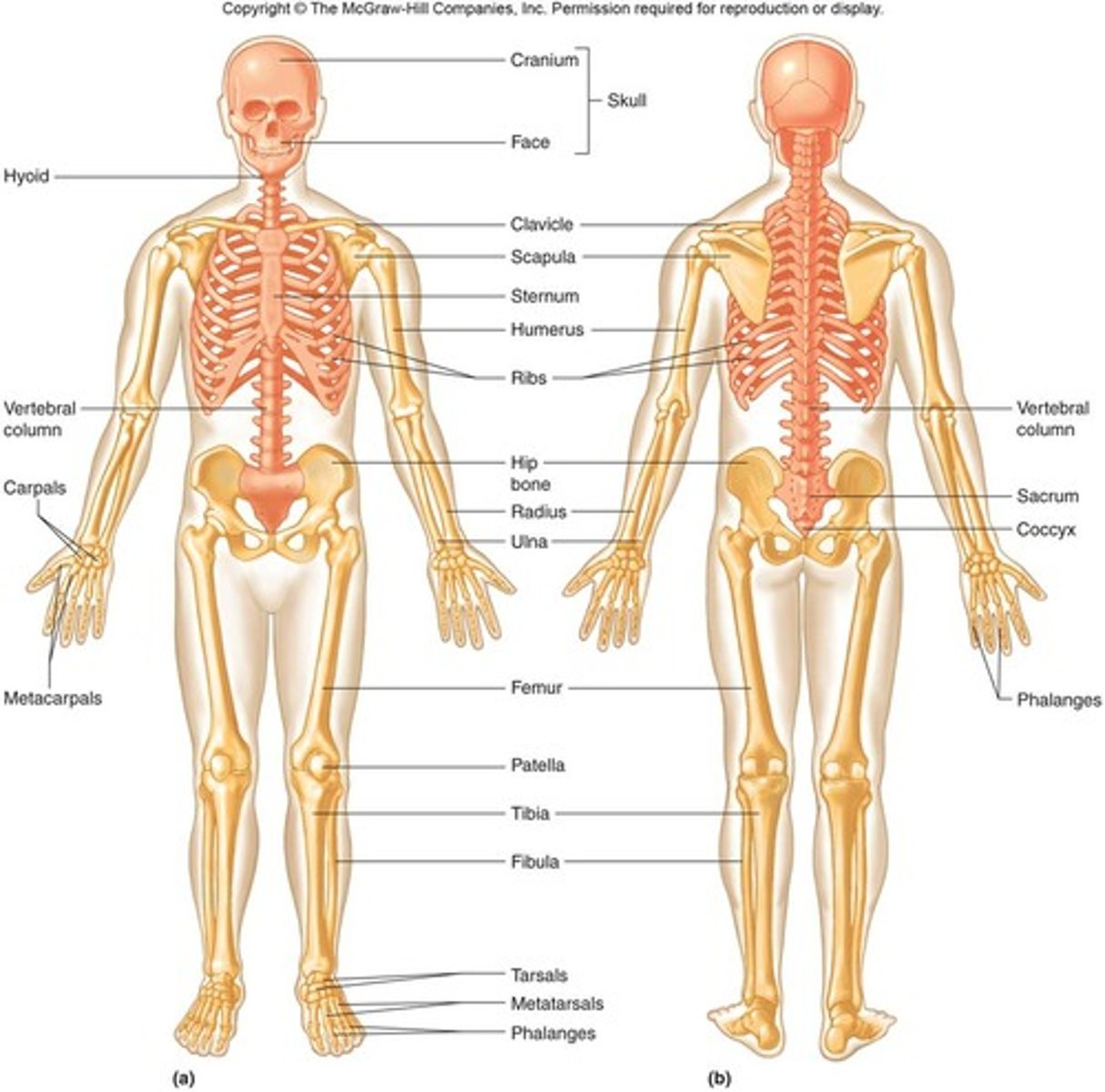
Ligaments
Connects bone to bone
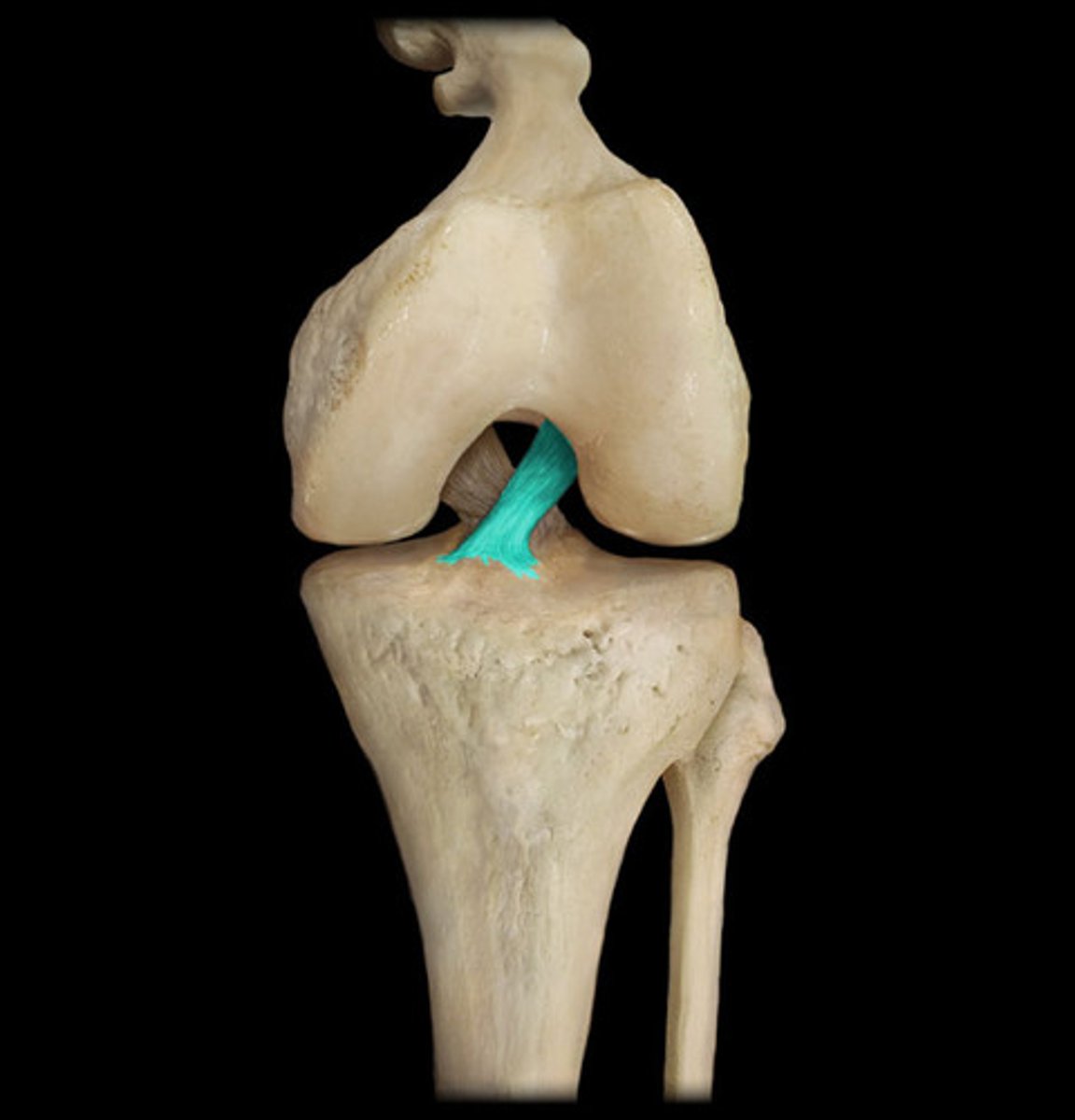
Tendons
Connects Muscle to bone
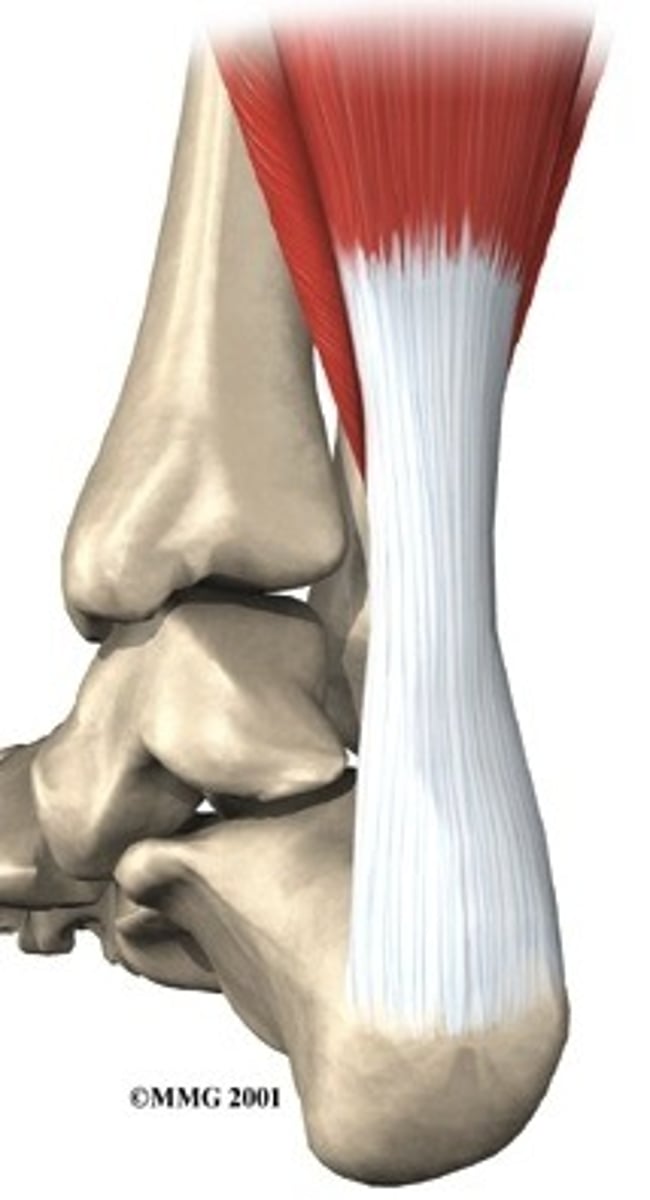
Cranium
Skull
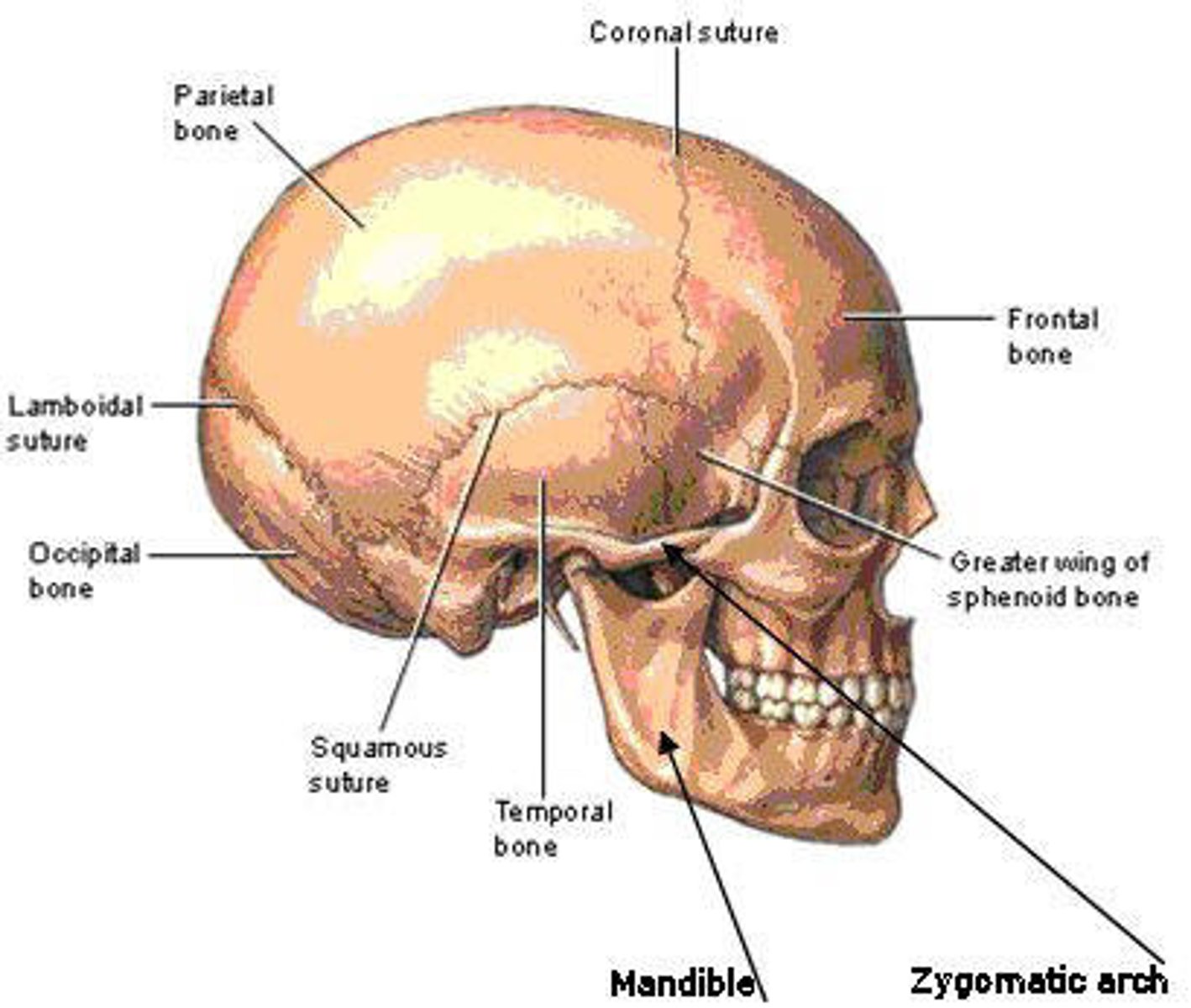
Maxillae
Fused bones of the upper jaw
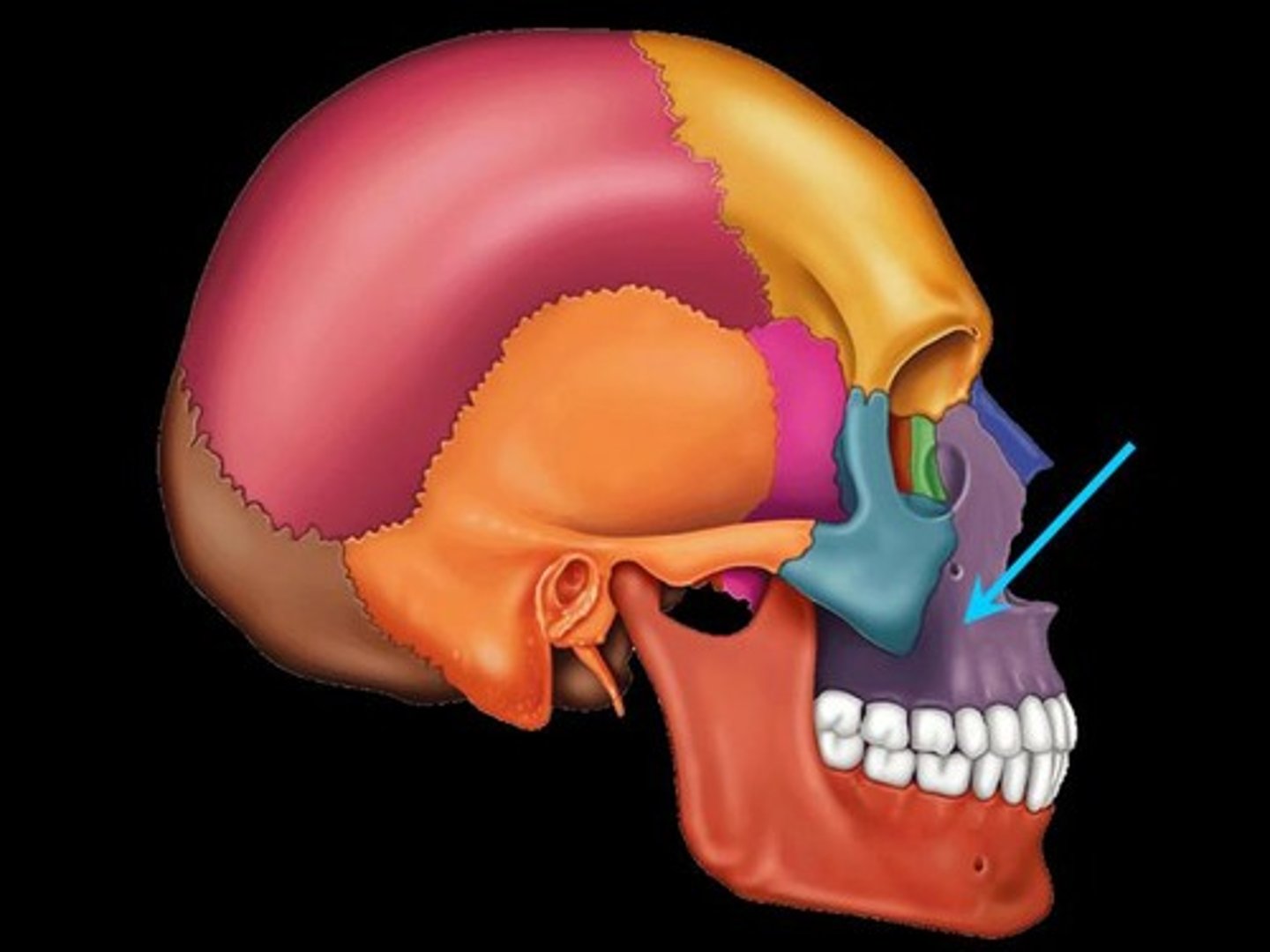
Mandible
lower jaw that moves with a hinge joint
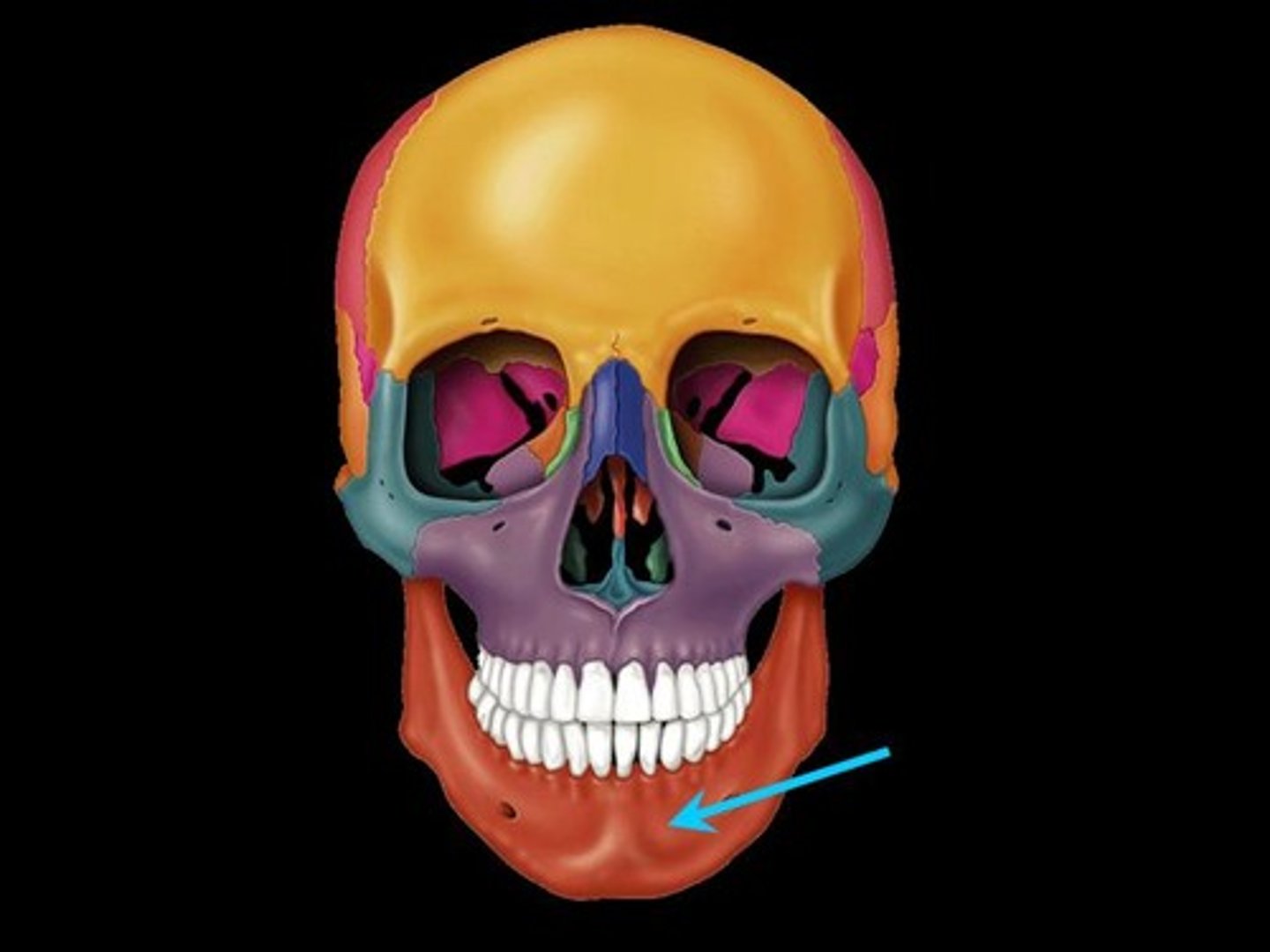
Vertebrae
Spinal column, principle support of the body
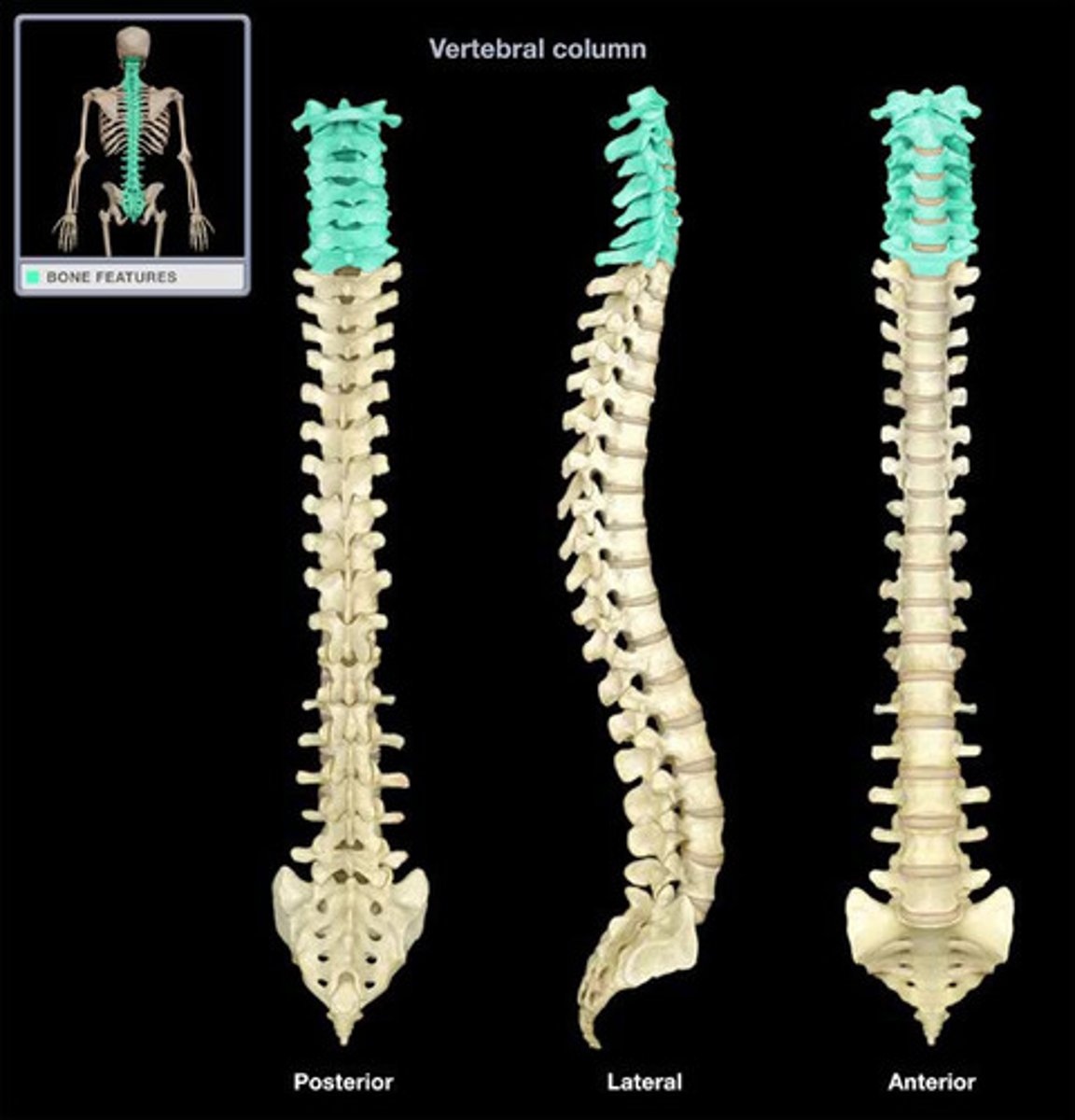
Intervertebral Disc
Fluid filled pad of tough elastic cartilage that acts as shock absorbers and allows movement of the spine
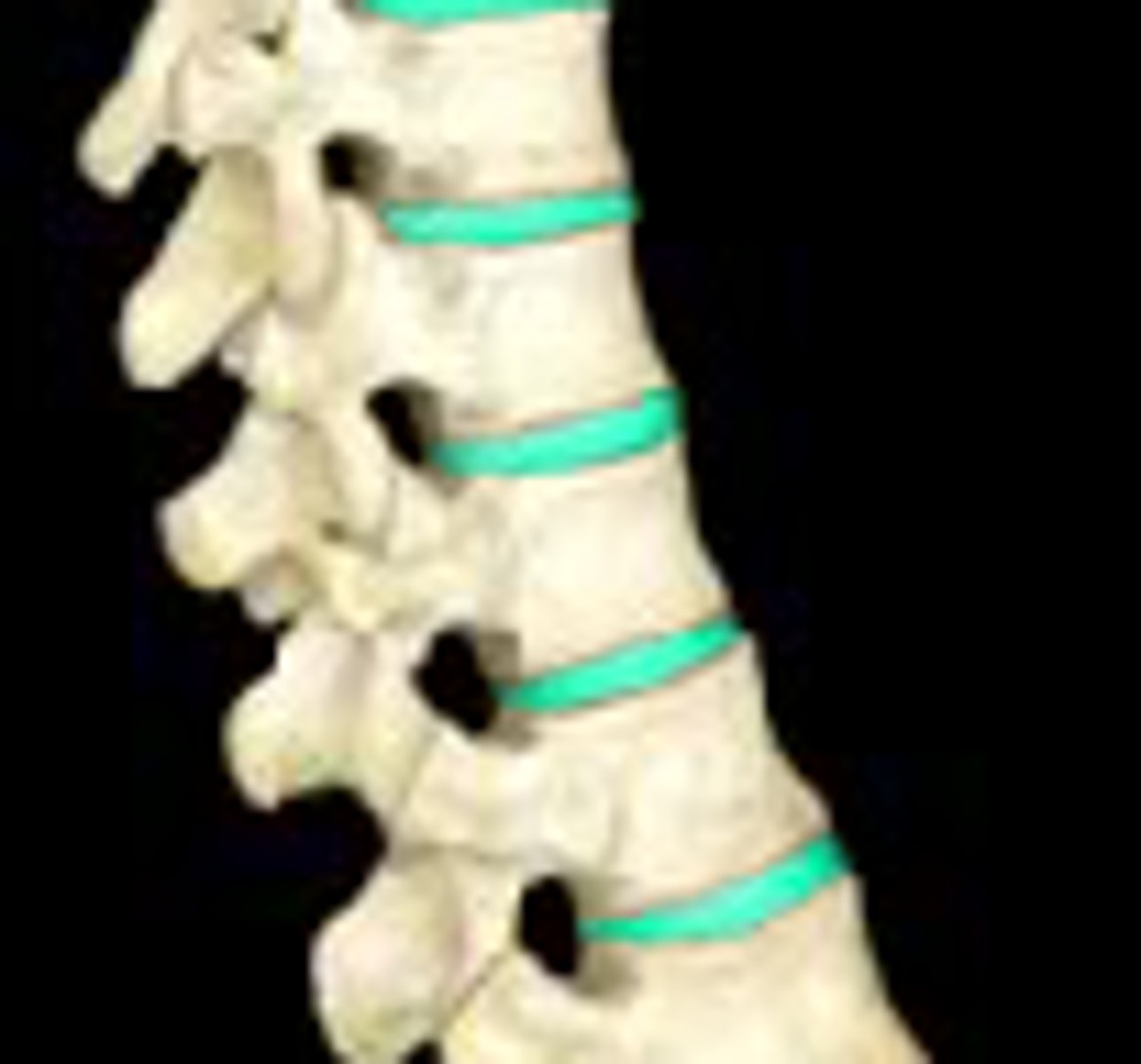
Cervical Spine
First seven bones of the vertebrae, most prone for injury
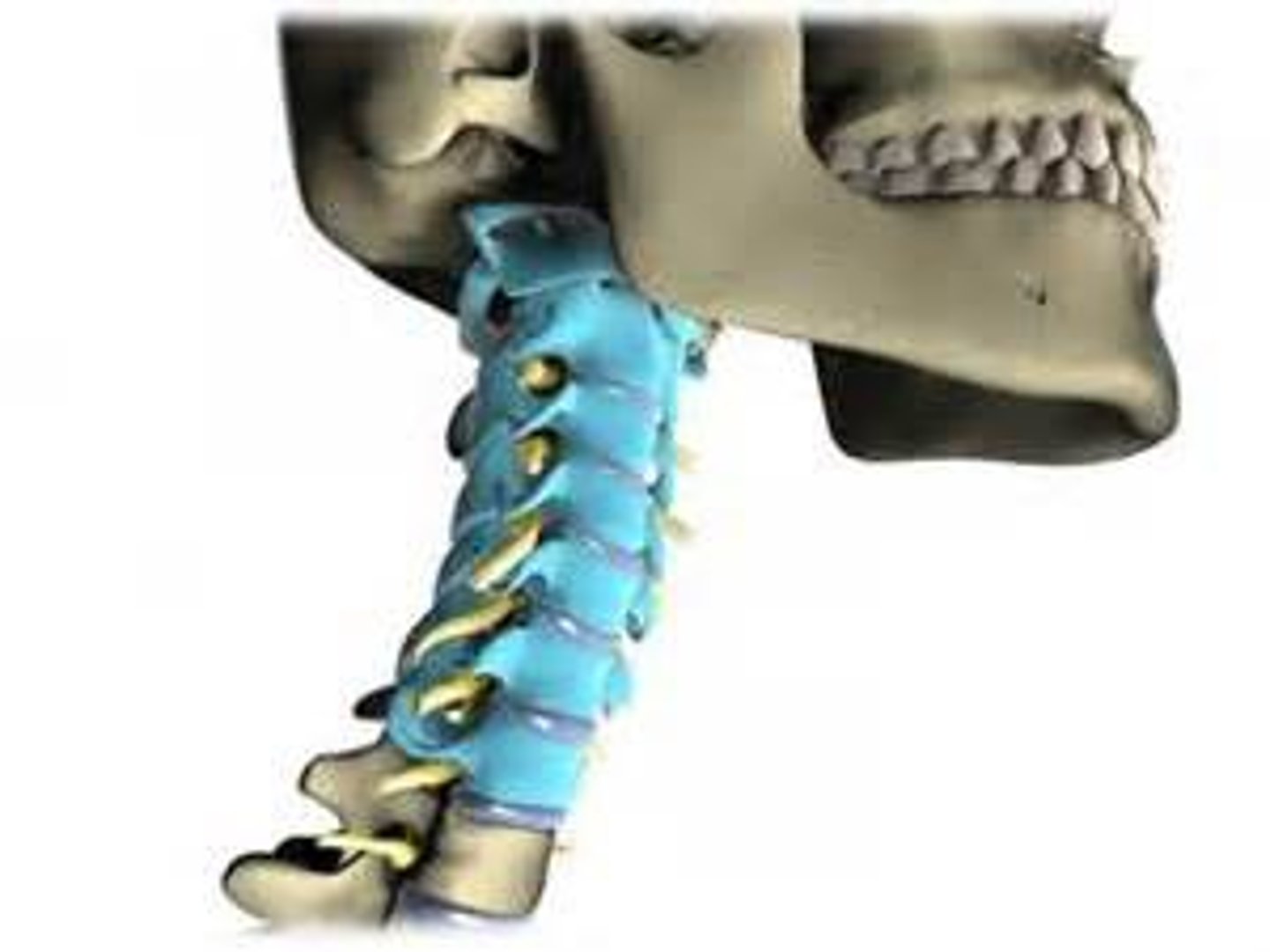
Thoracic Spine
Upper back, 12 bones
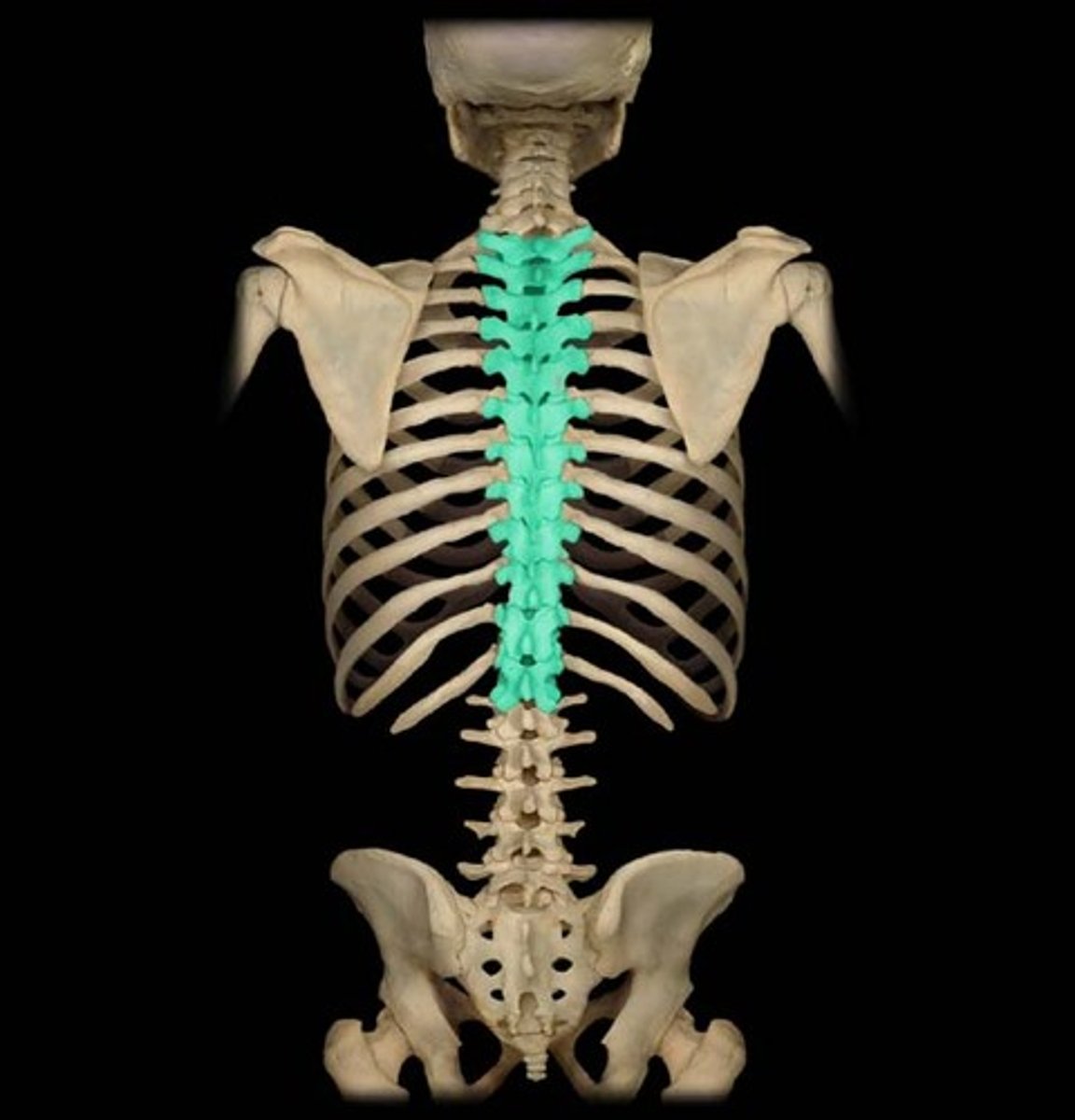
Lumbar
Lower back, most immovable of the vertebrae, has five bones
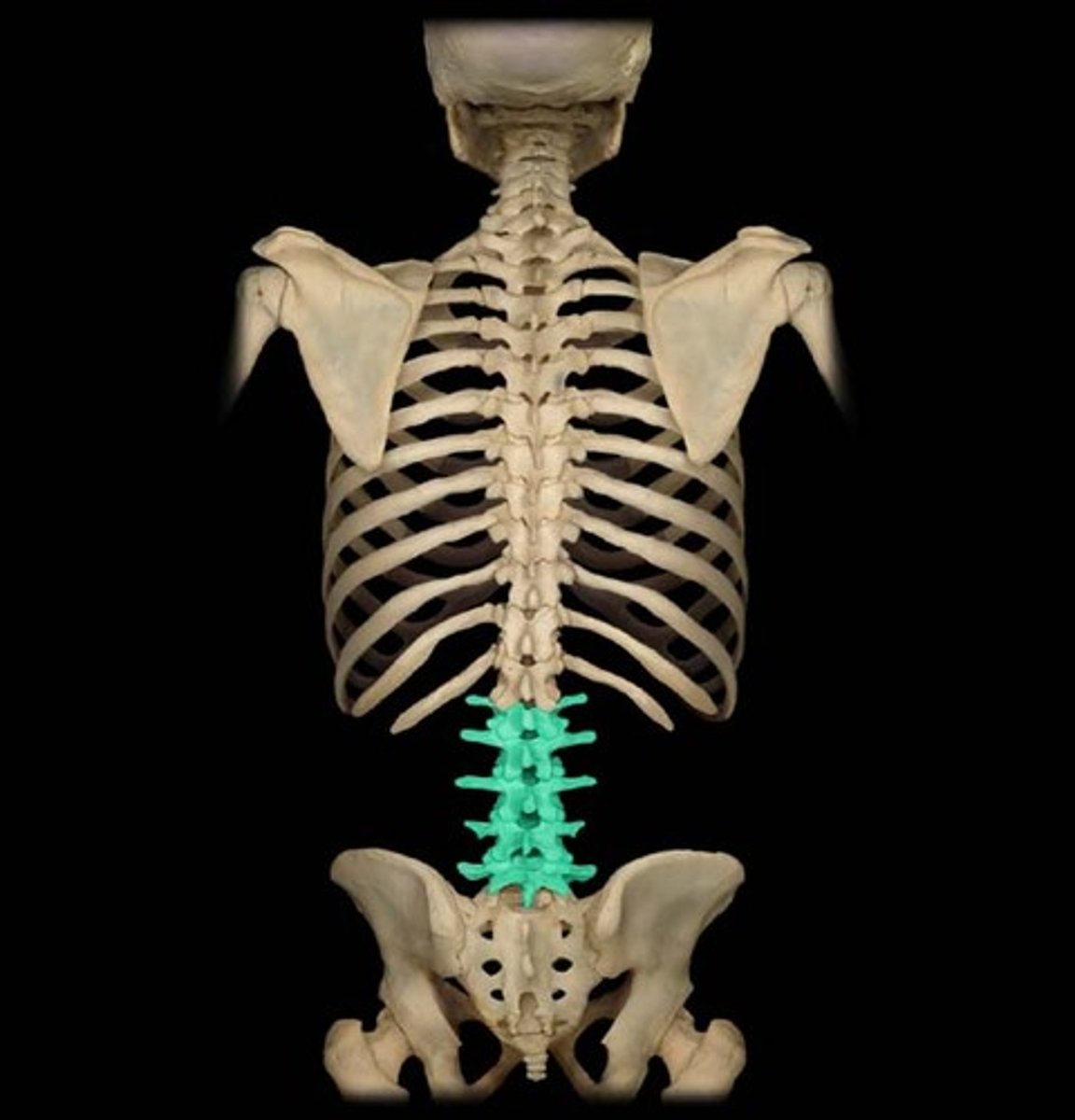
Sacrum
Back wall of the pelvis, contains five bones
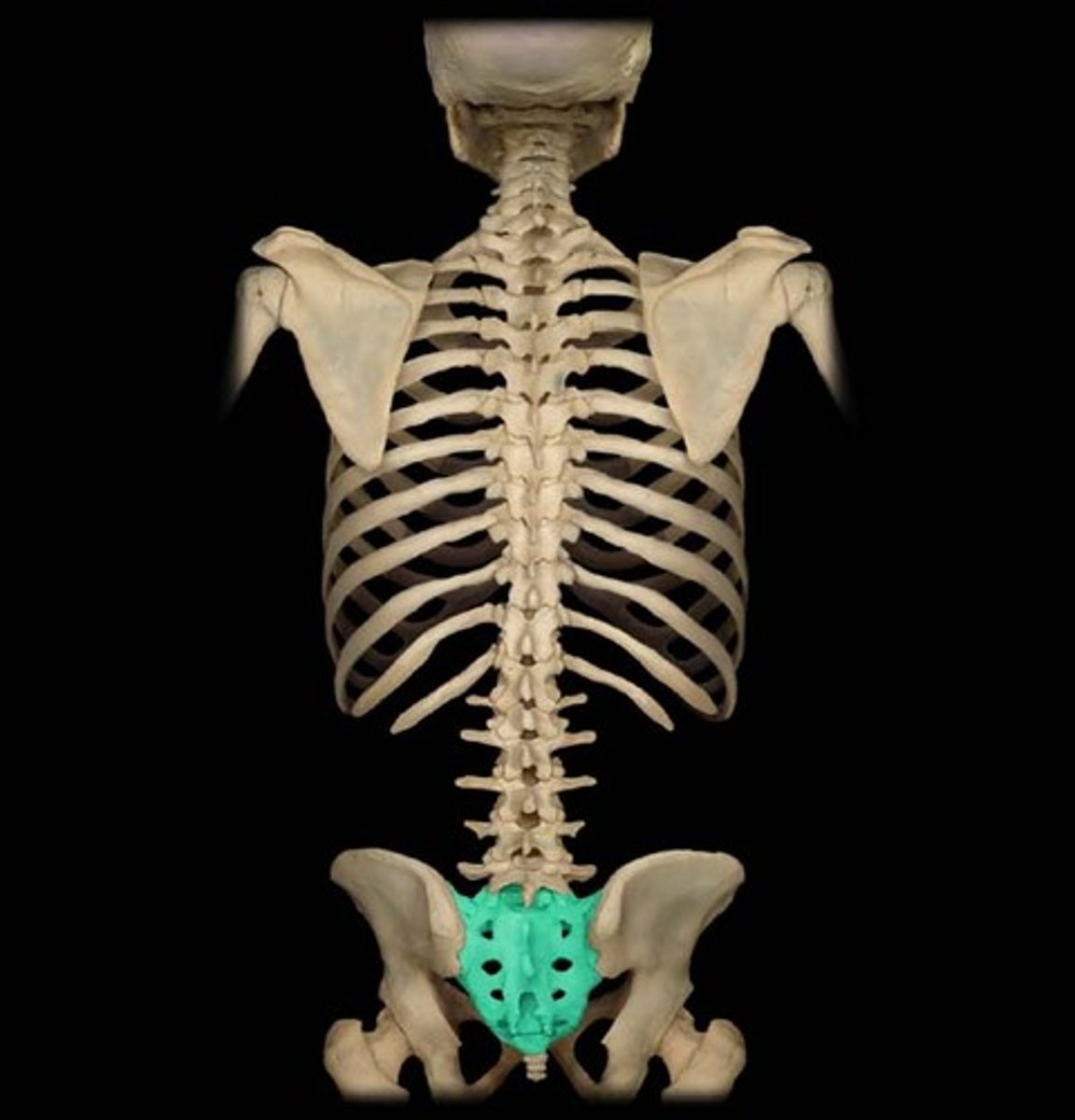
Coccyx
Tailbone, has four fused bones

Sternum
Breast bone
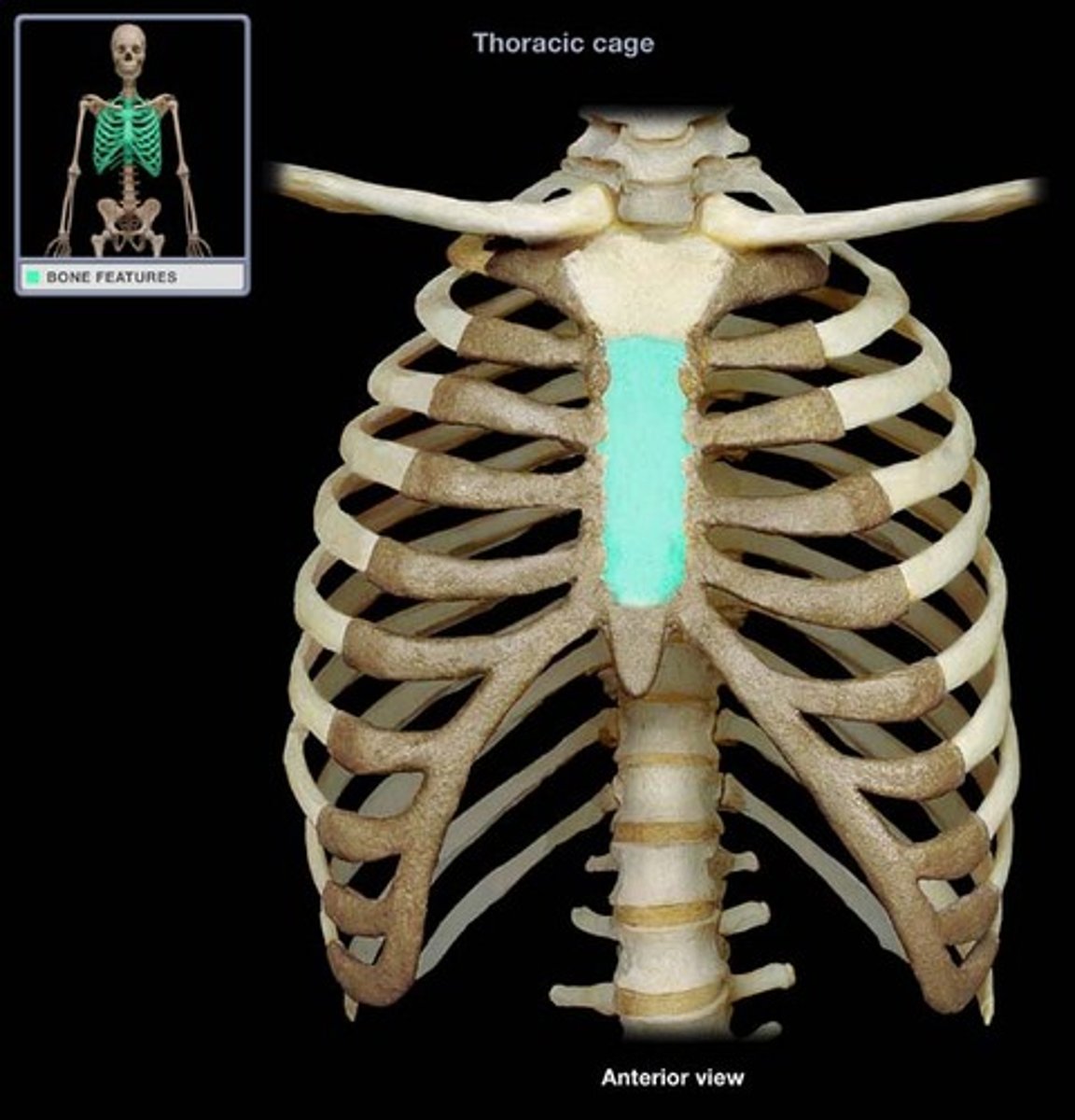
Floating Ribs
11th and 12th Rib
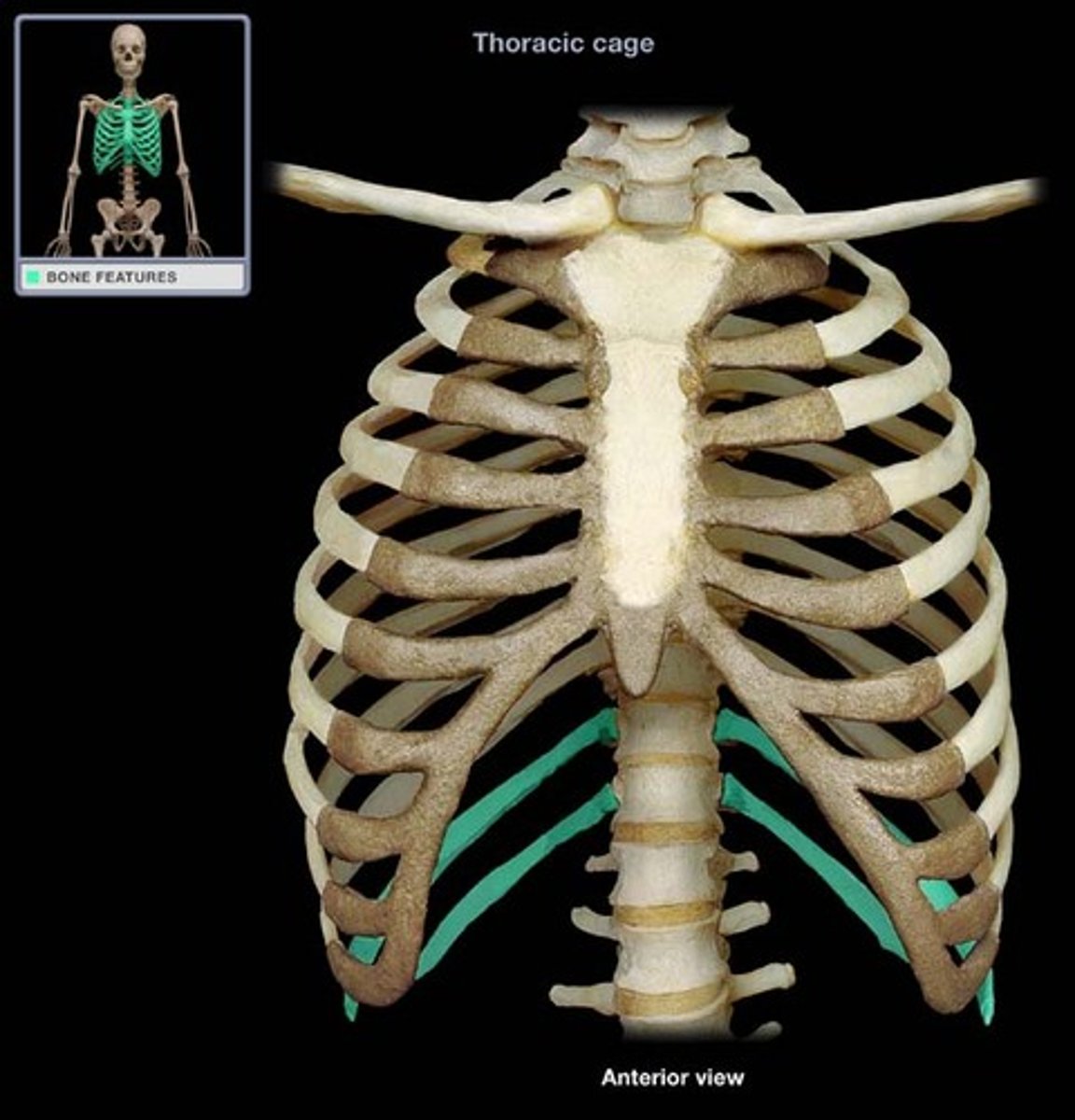
False Ribs
The last five pairs of ribs
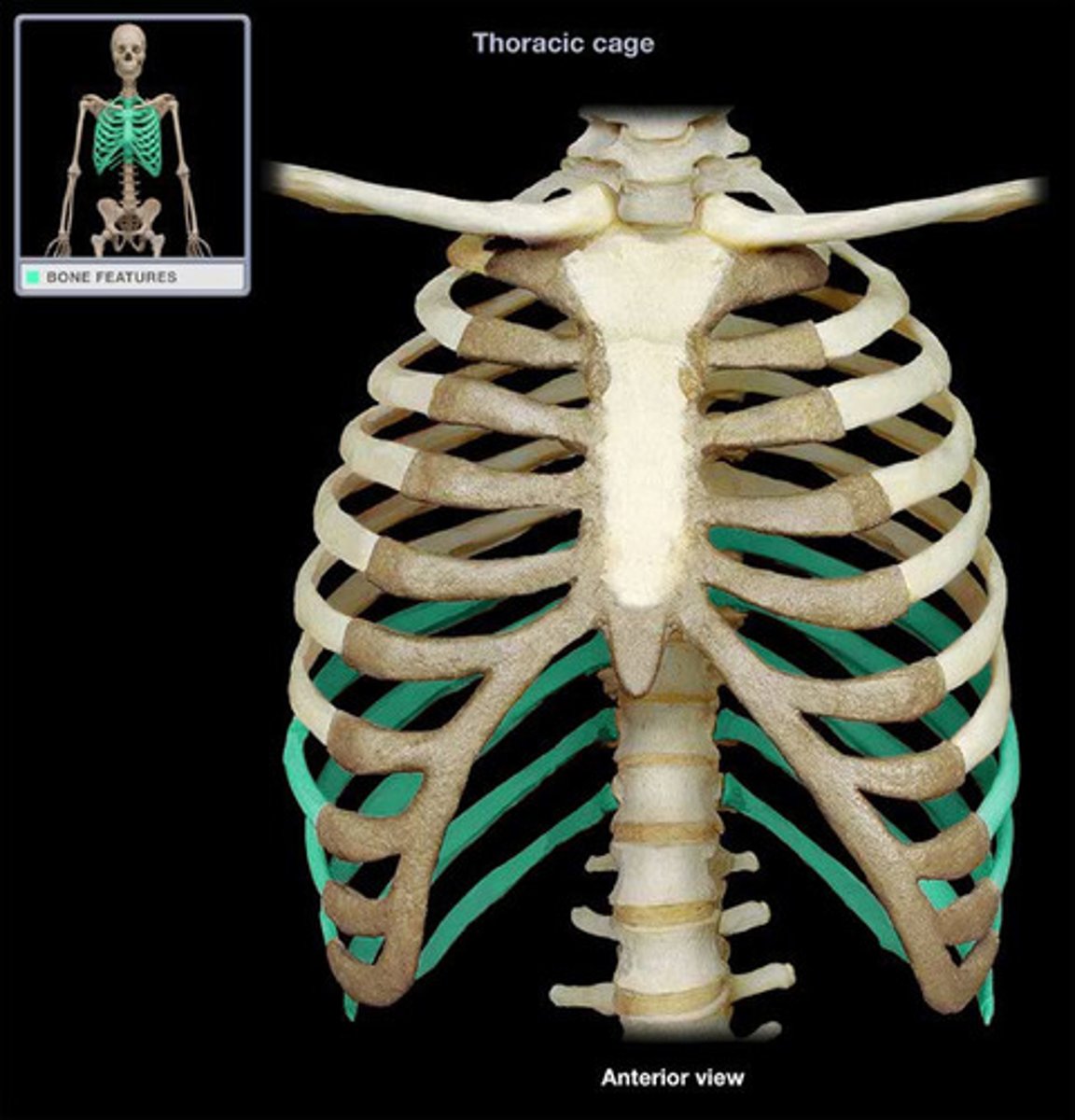
Clavicle
Collar Bone
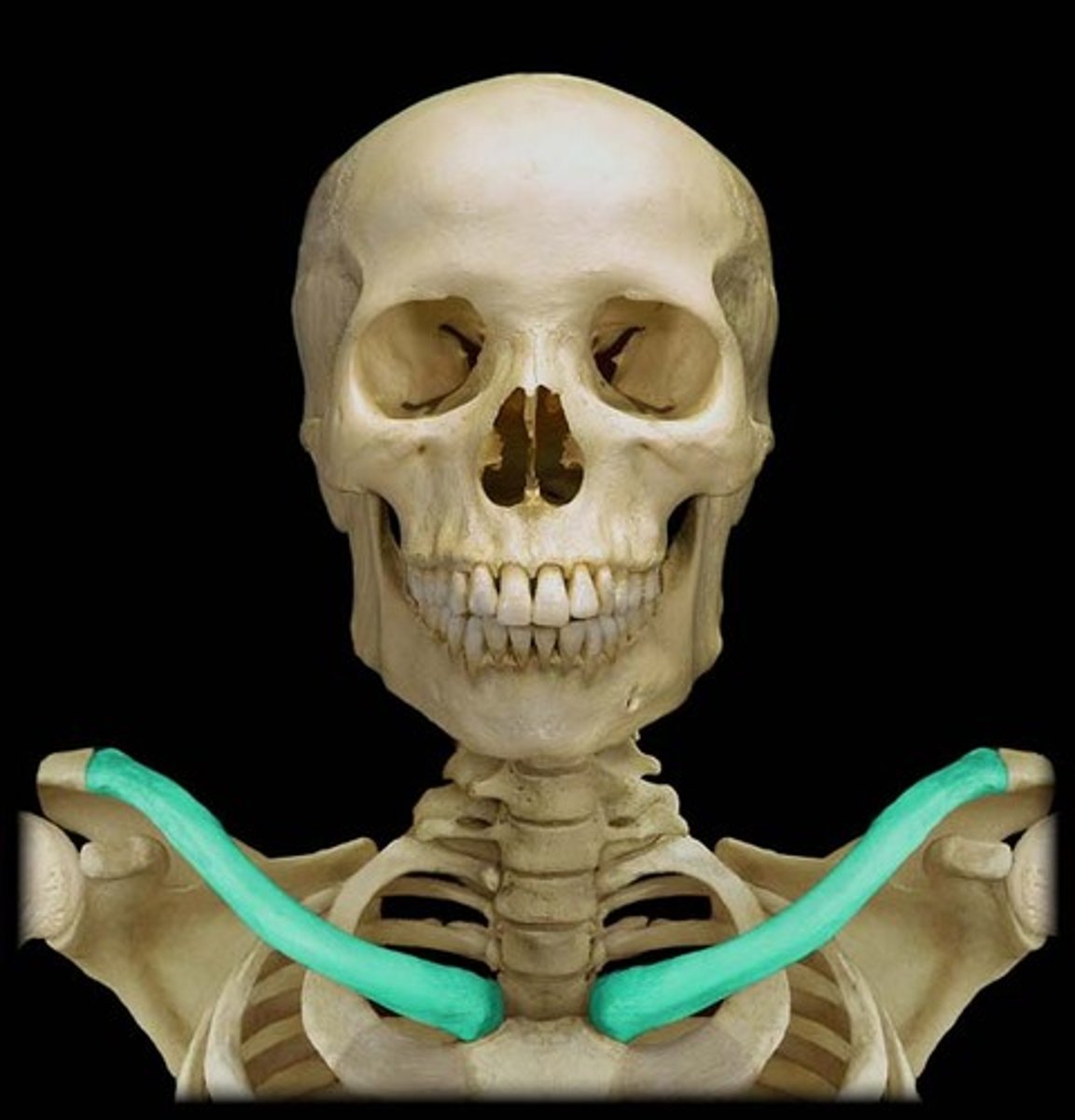
Xiphoid Process
The inferior portion of the sternum
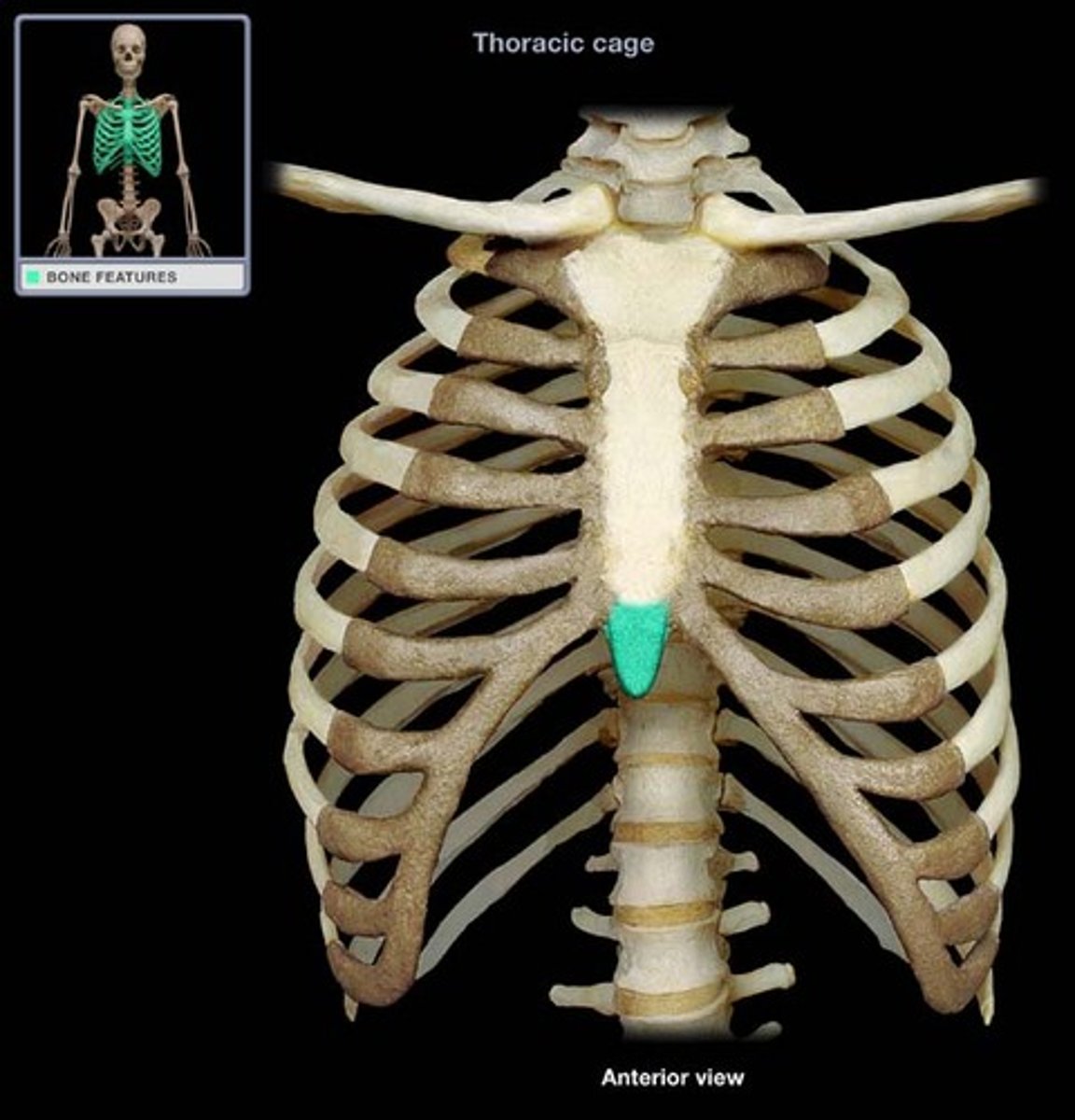
Pelvis
Dough-nut shaped structure that consist of the sacrum and coccyx

Iliac Crest
Wings of the pelvis
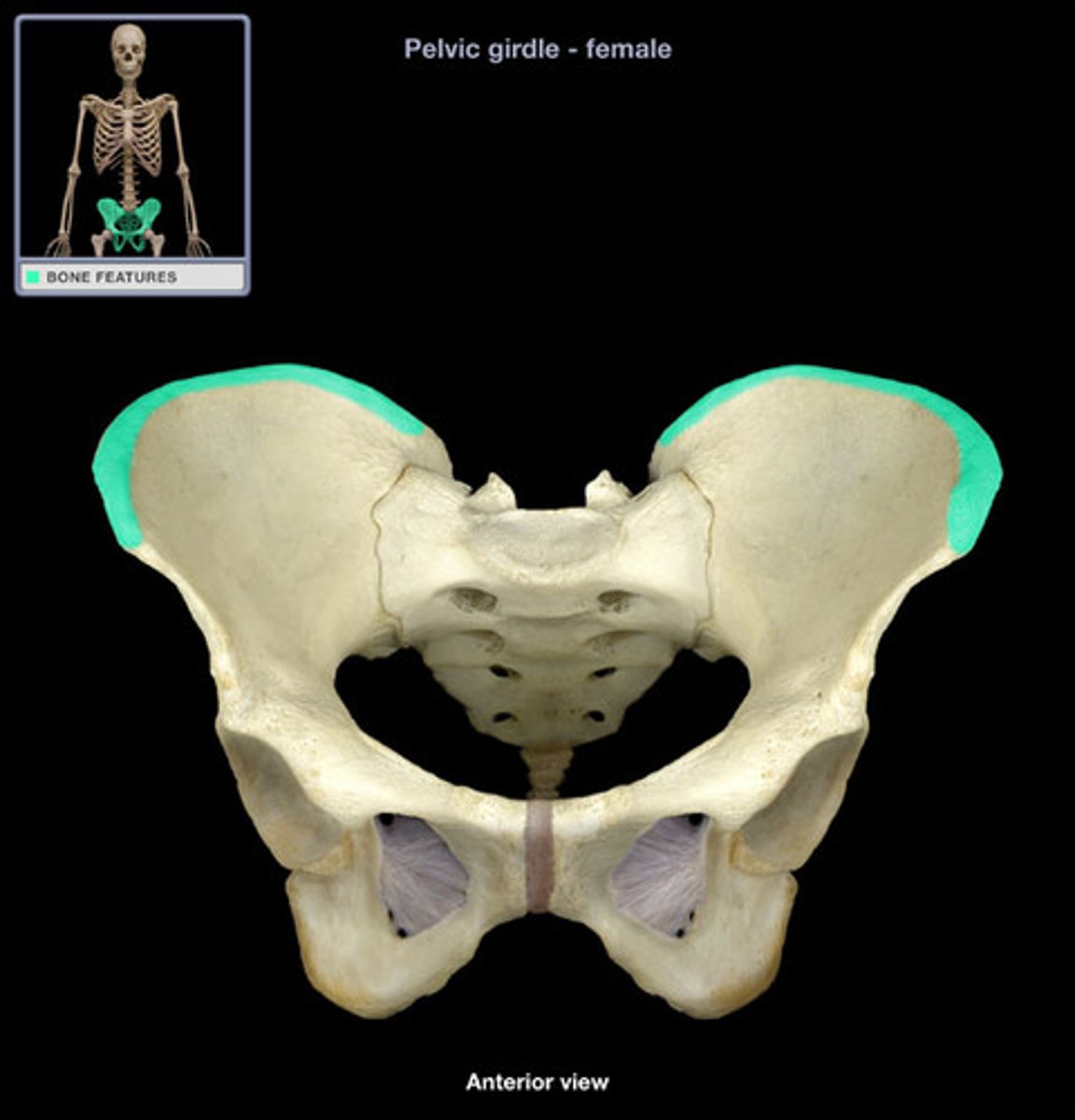
Pubis
Anterior and inferior portion of the pelvis
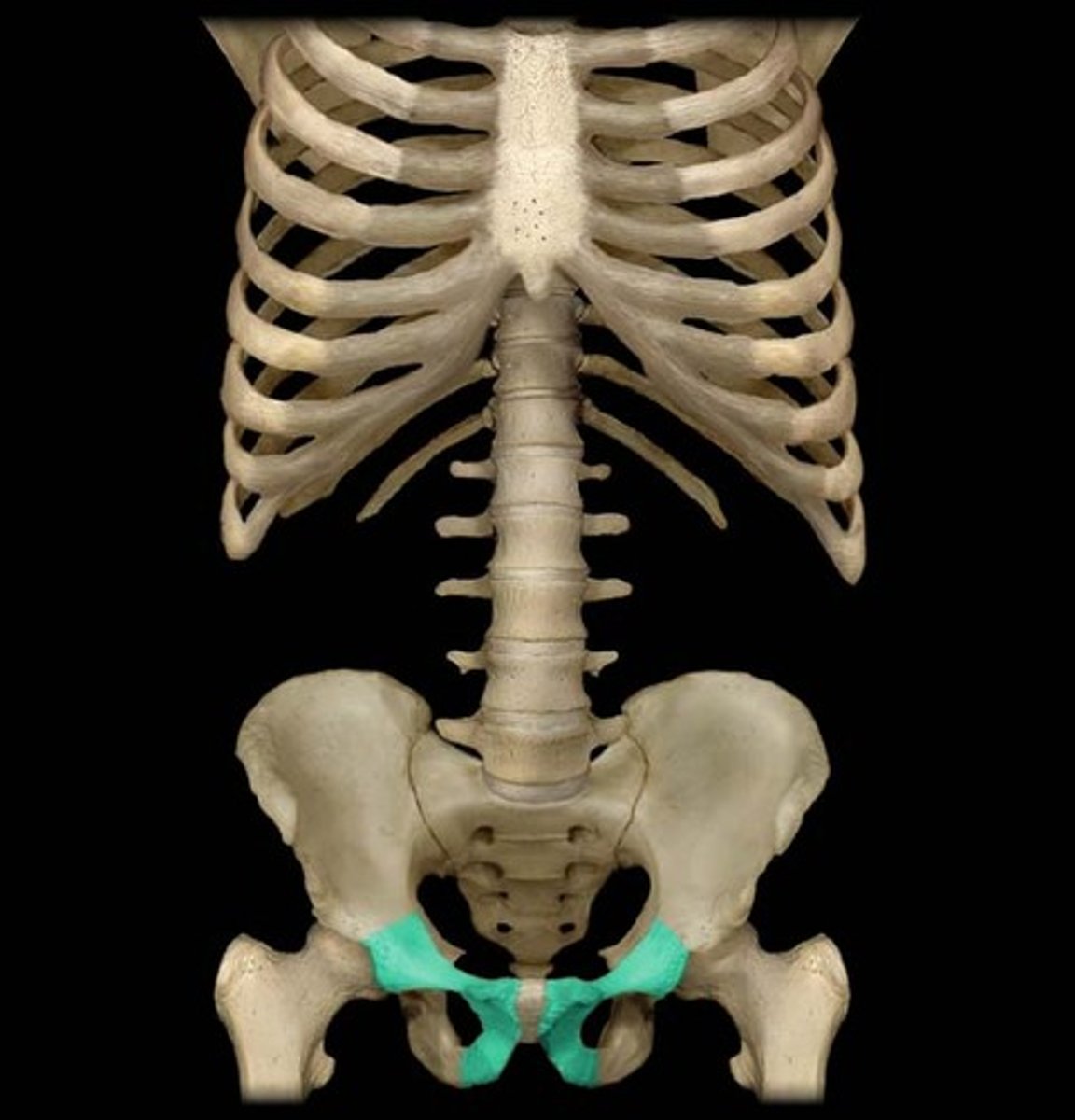
Acetabulum
Pelvic socket which fits the rounded top of the femur head
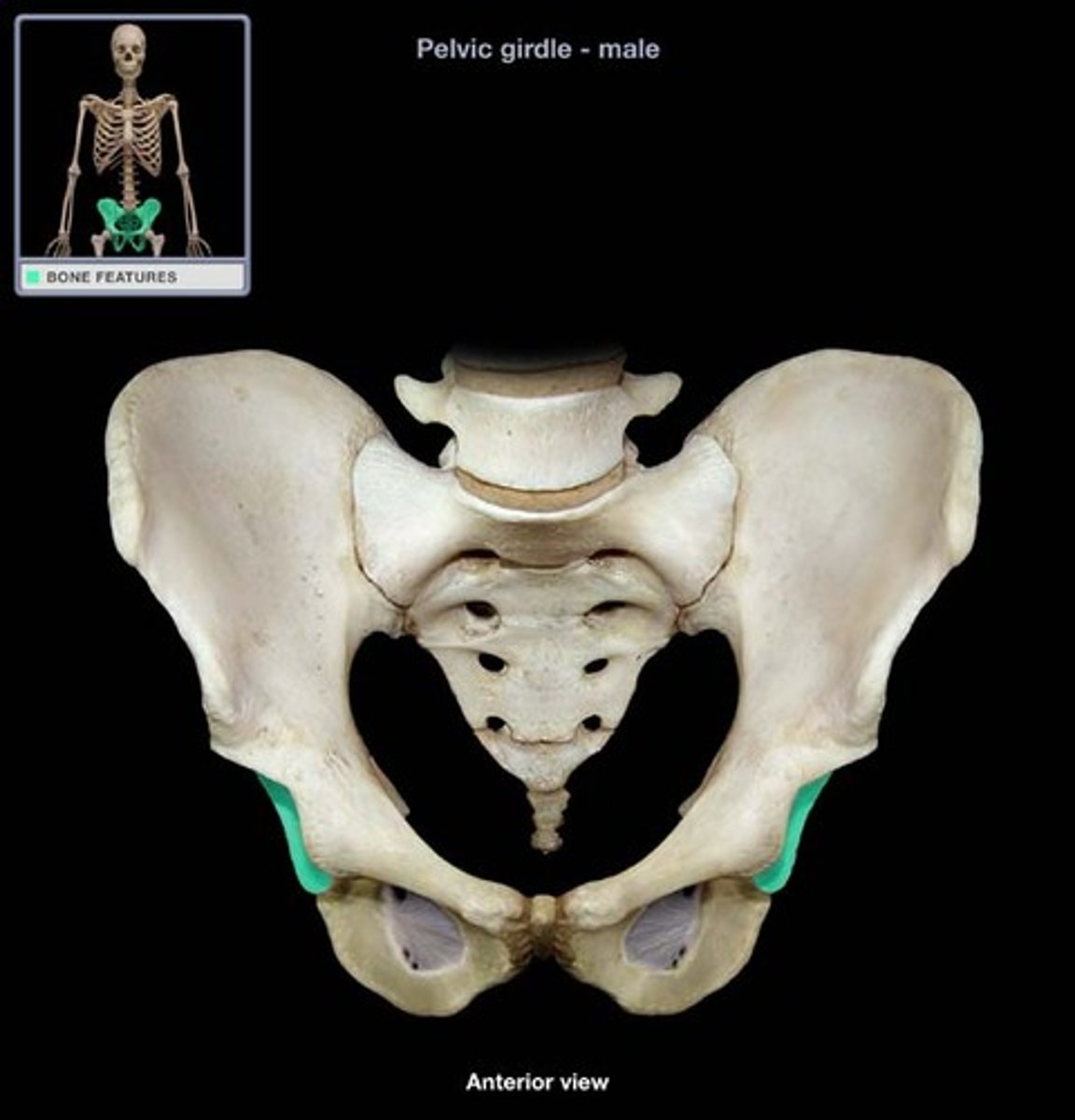
Femur
Largest strongest bone in the body, thigh bone.
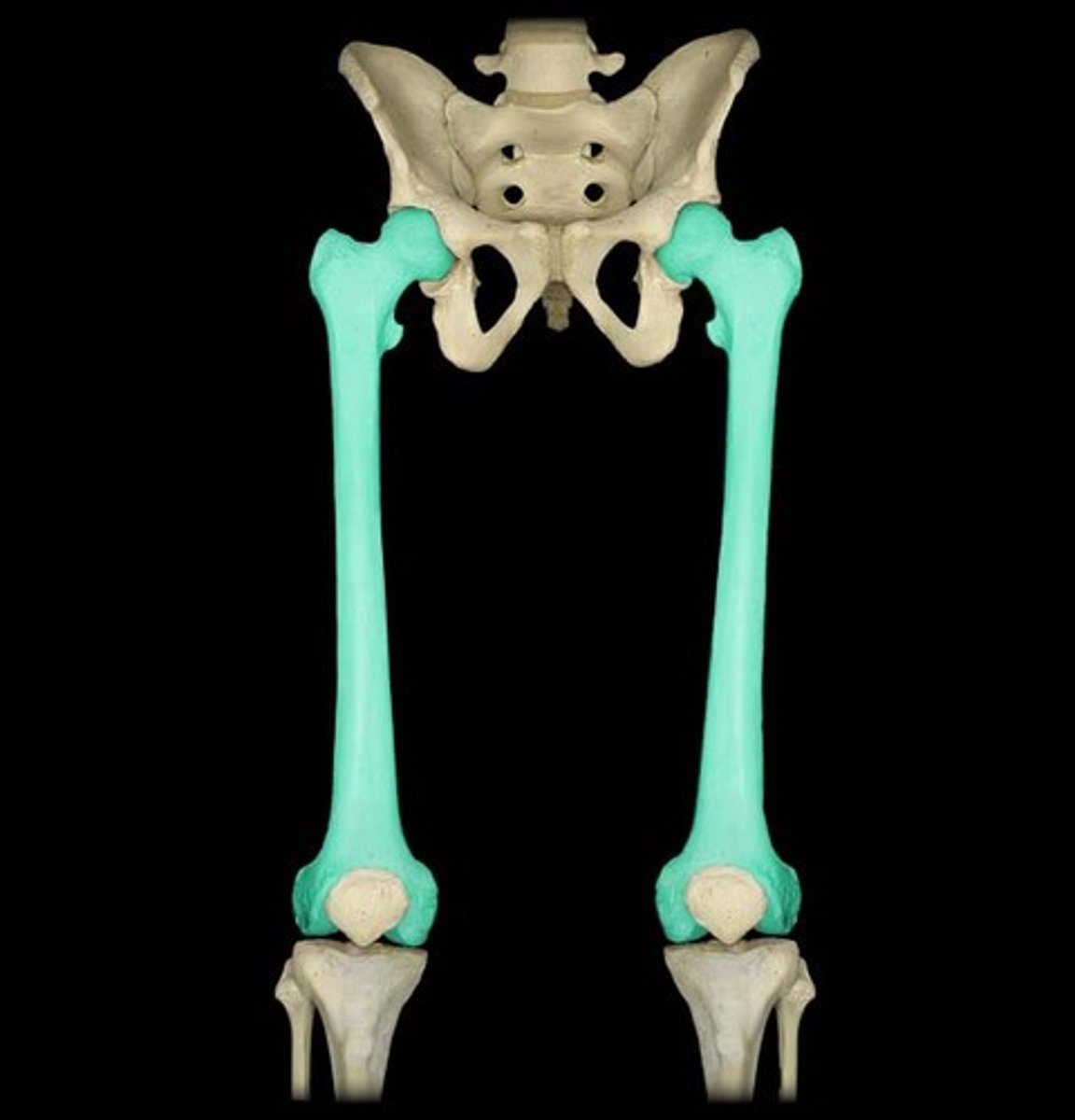
Patella
Knee Cap
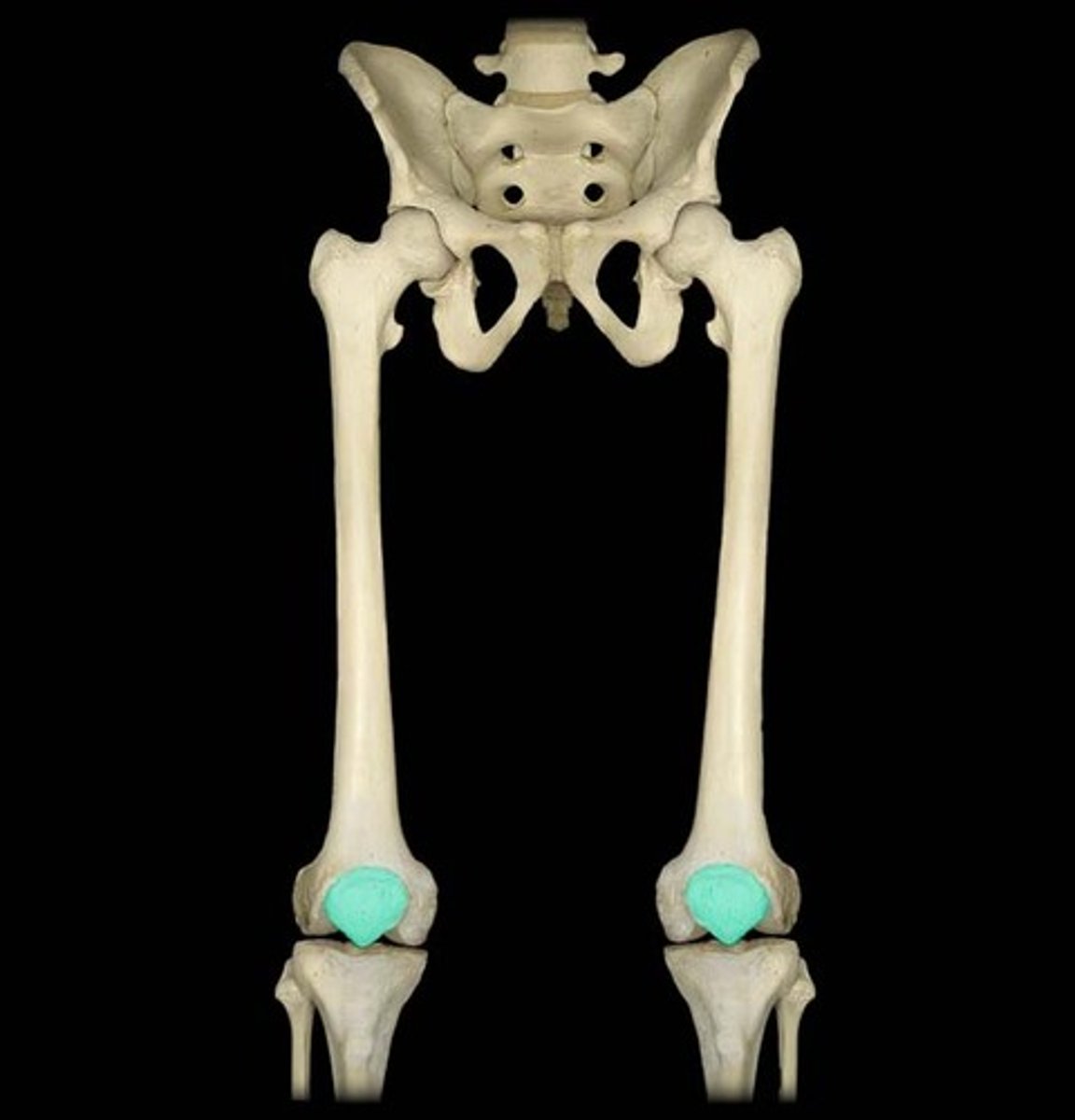
Tibia
Shin bone, weight bearing bone
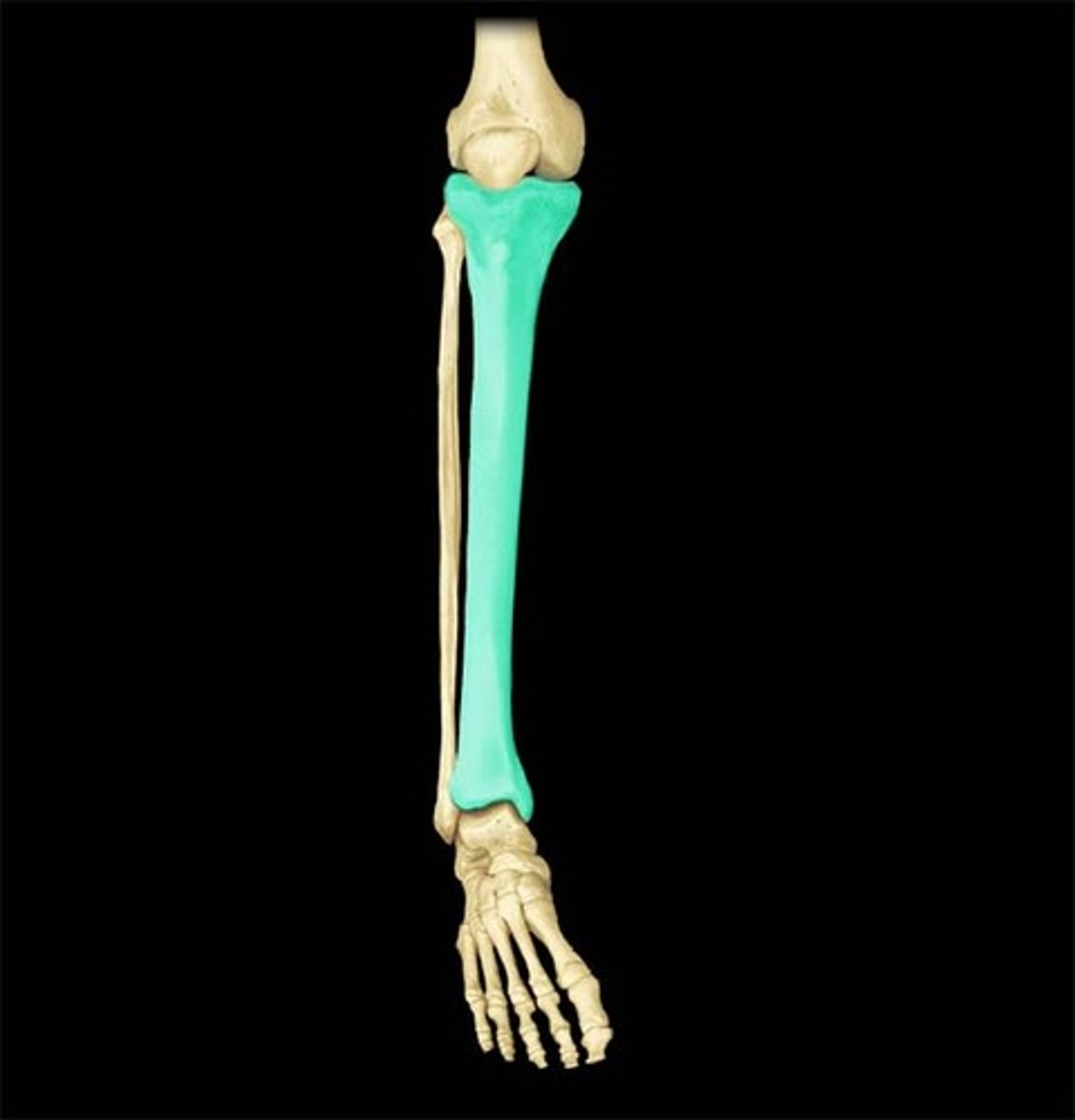
Fibula
Small bone in the lower leg
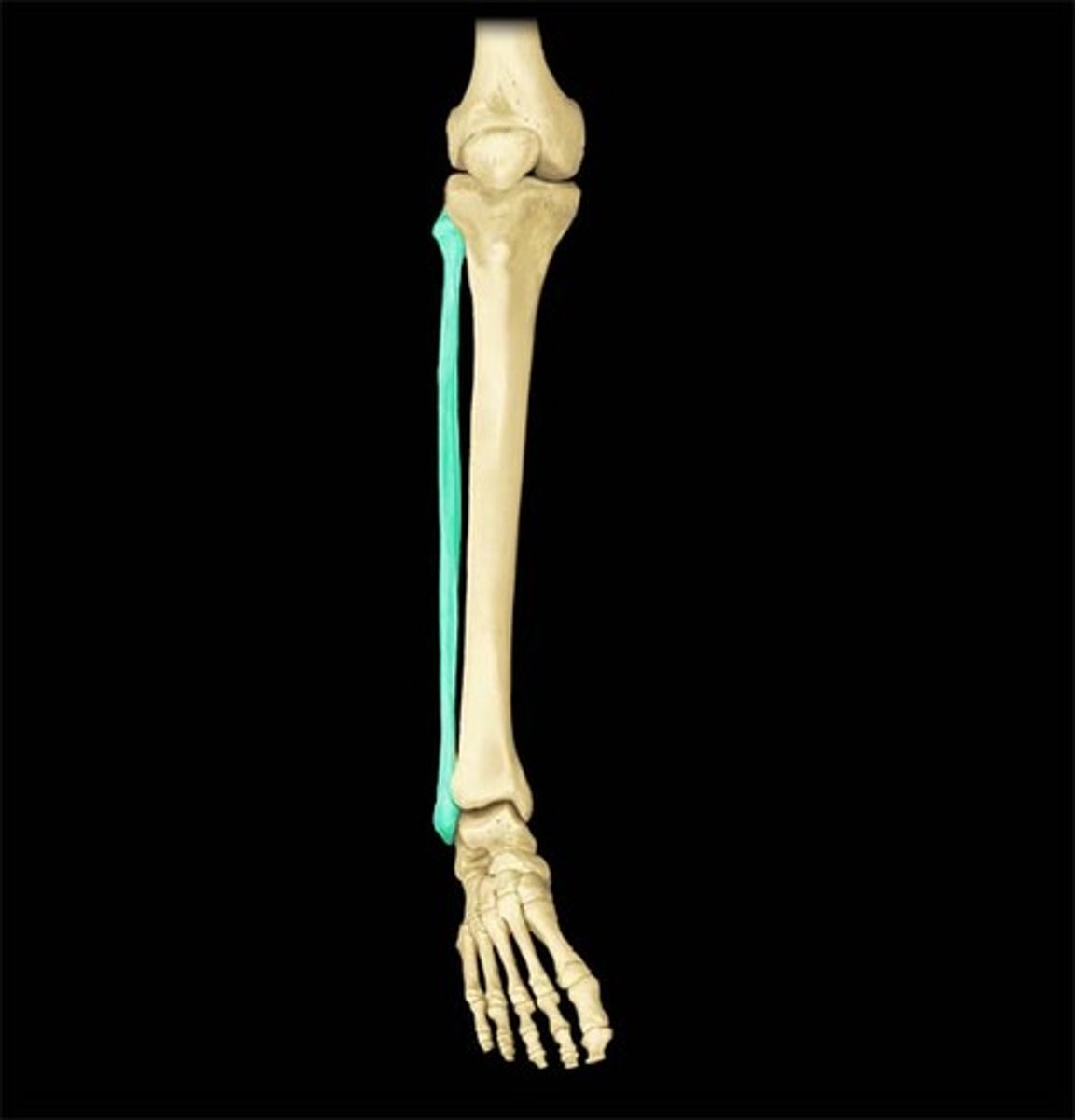
Calcaneus
Heel Bone
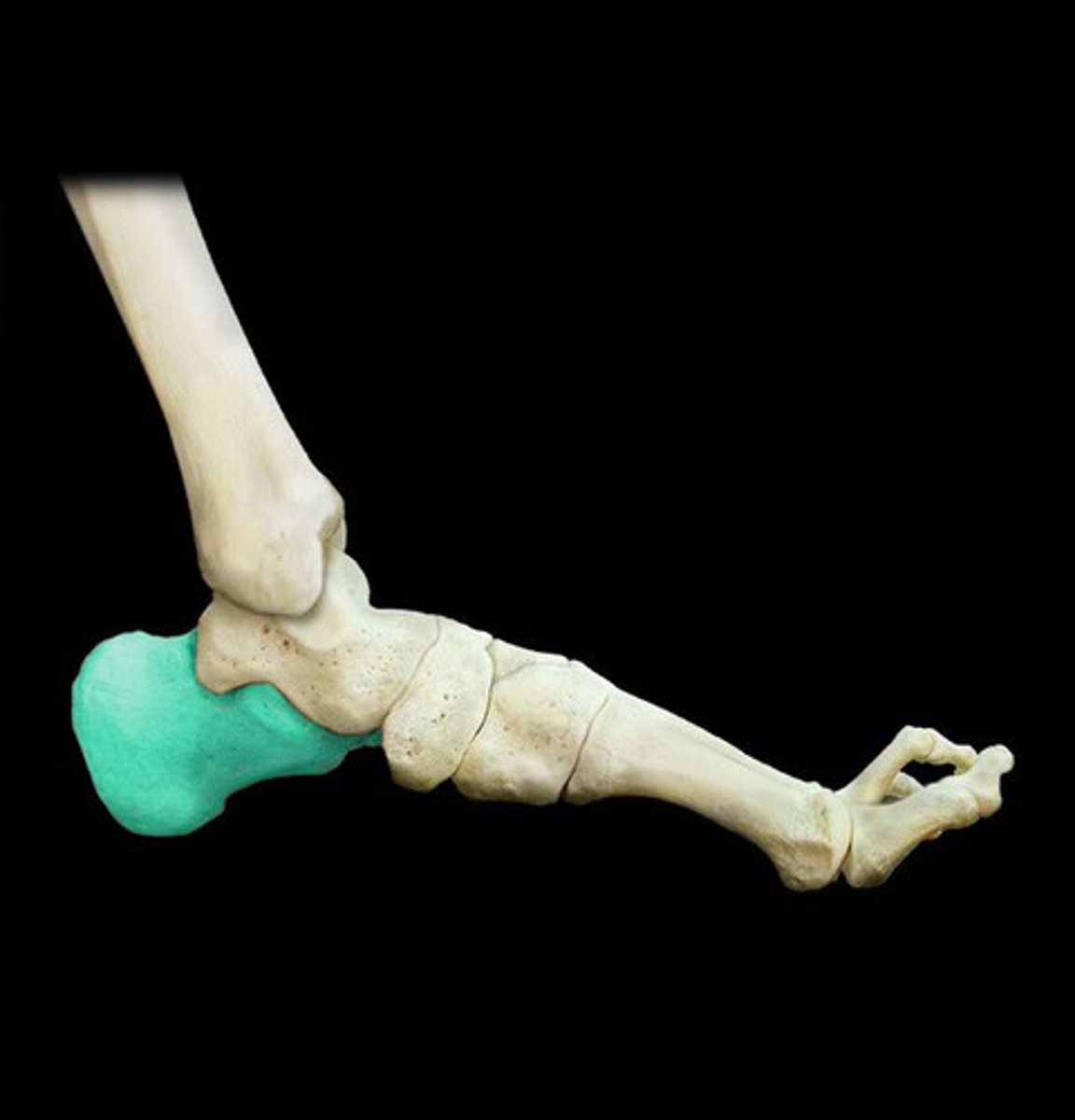
Tarsals
Make up the proximal portion of the foot
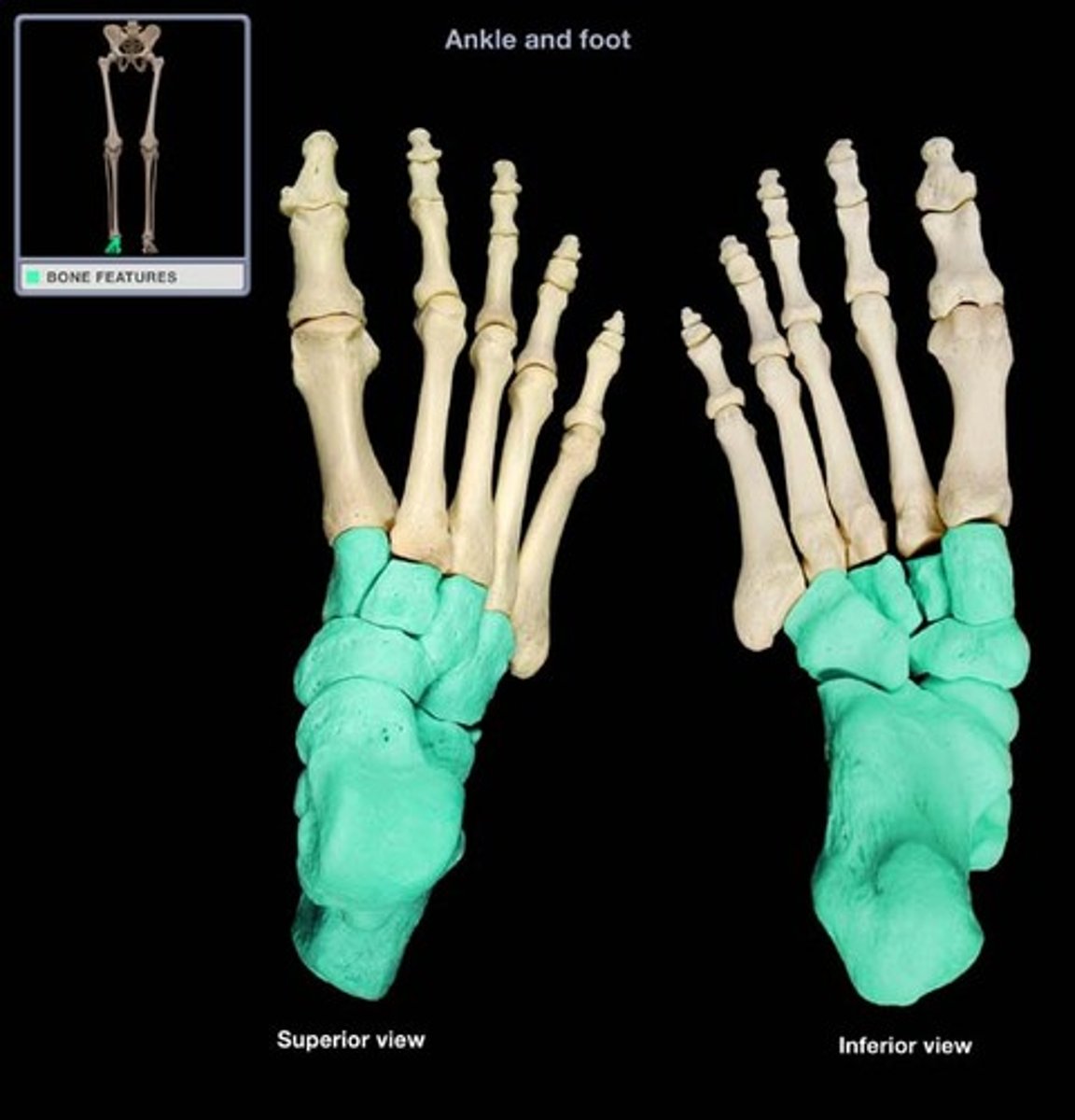
Metatarsal
Bones that form the arch of the foot
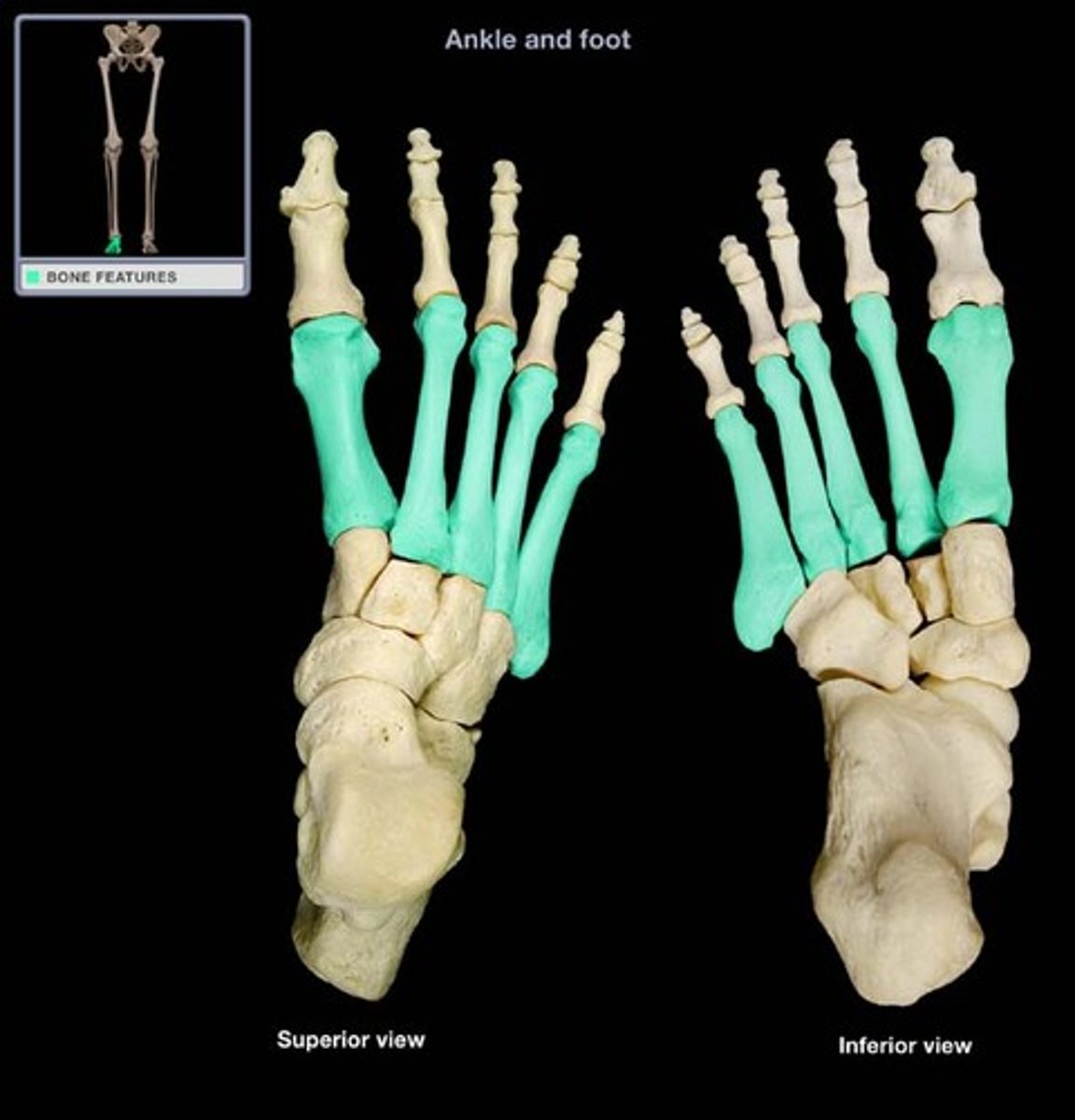
Phalanges
Bones of the fingers and toes
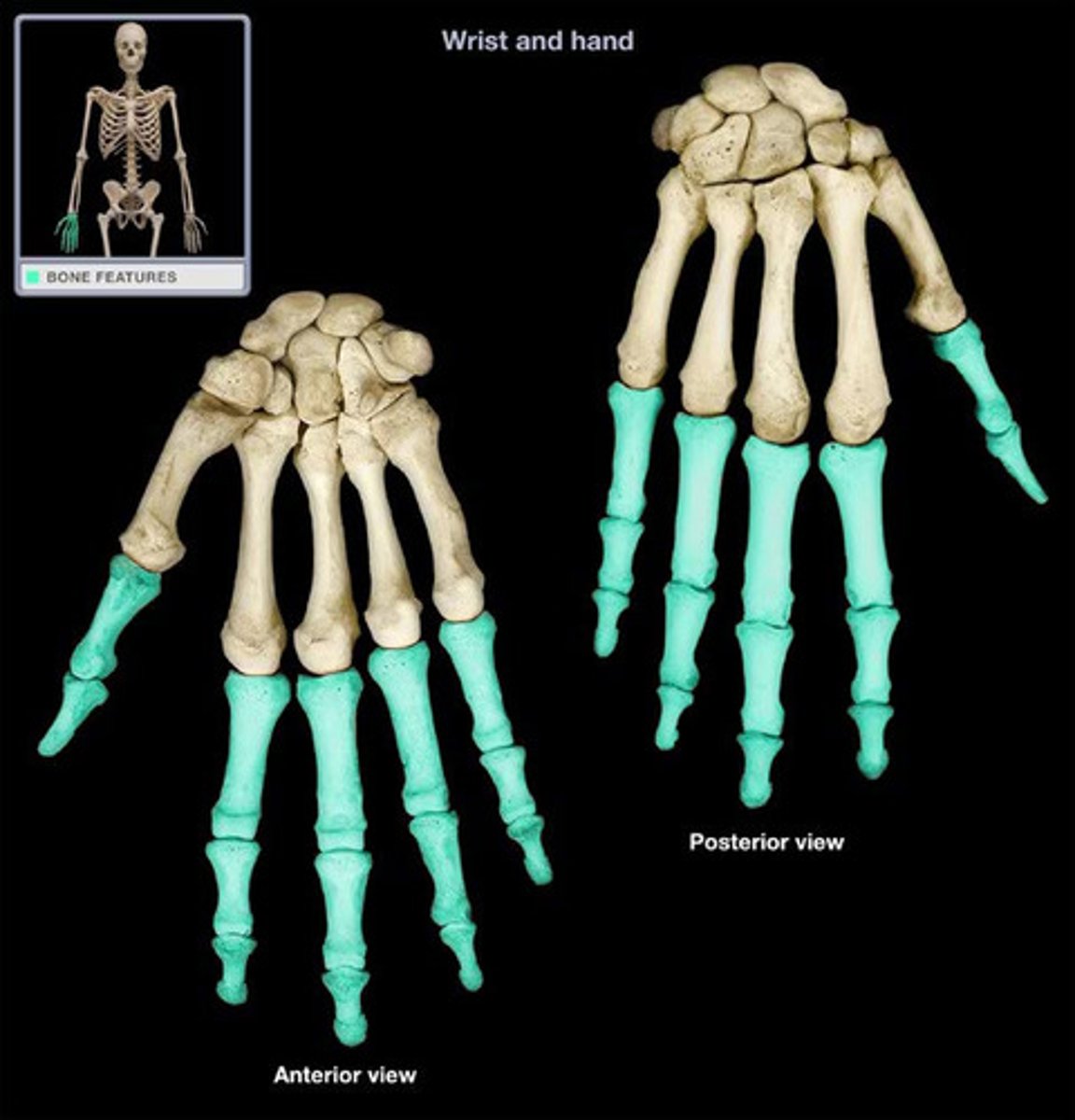
Scapula
Shoulder Blade
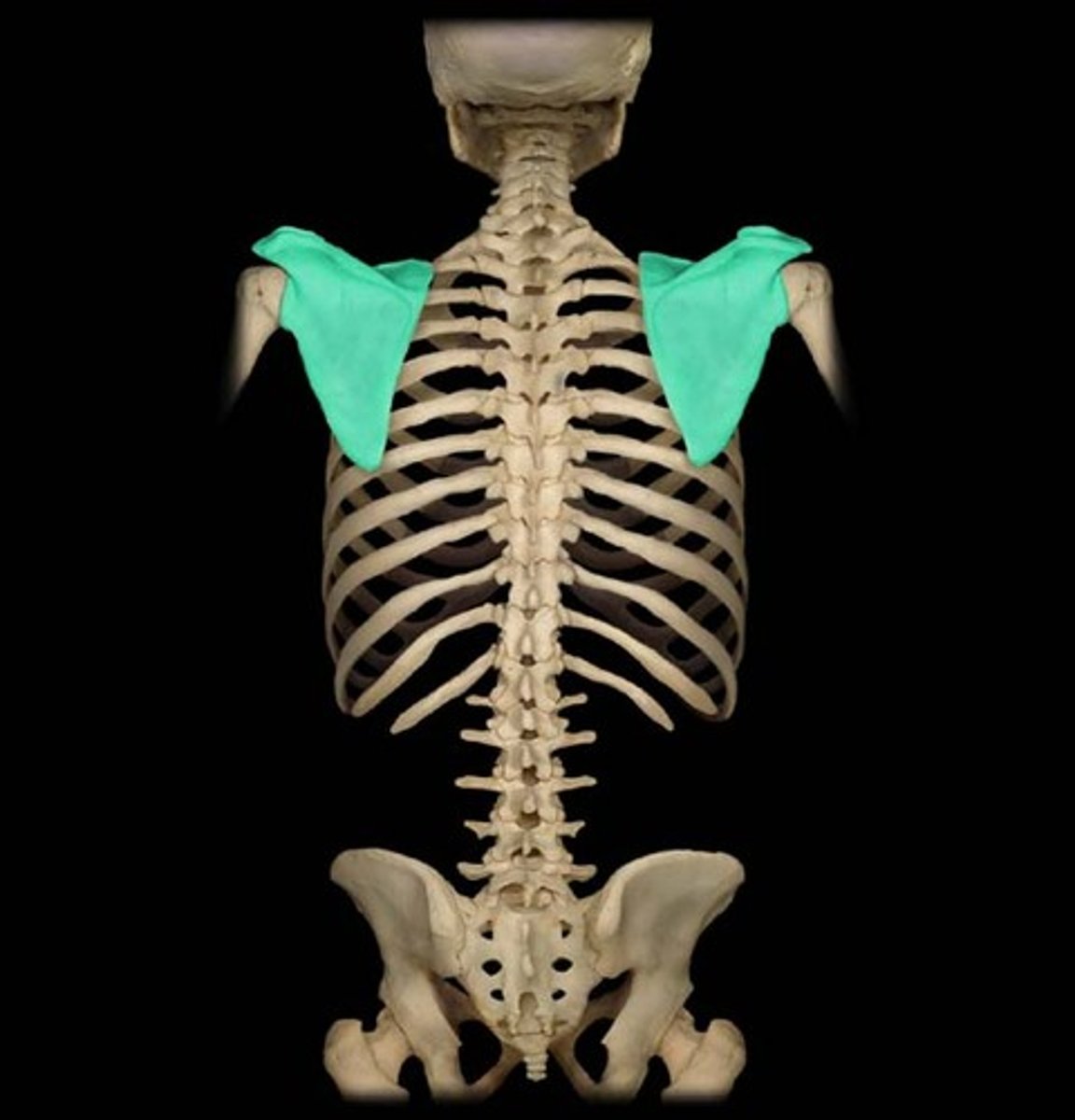
Humerus
Proximal bone of the upper arm
